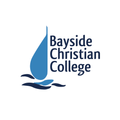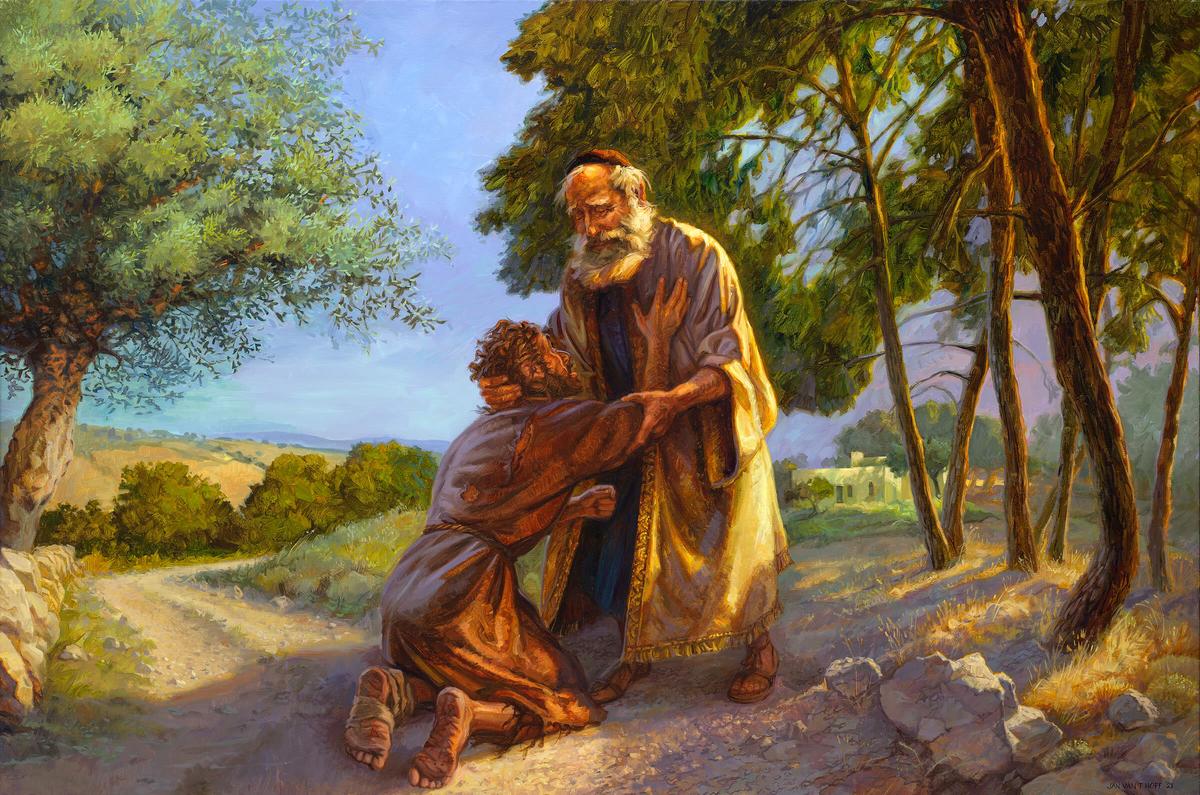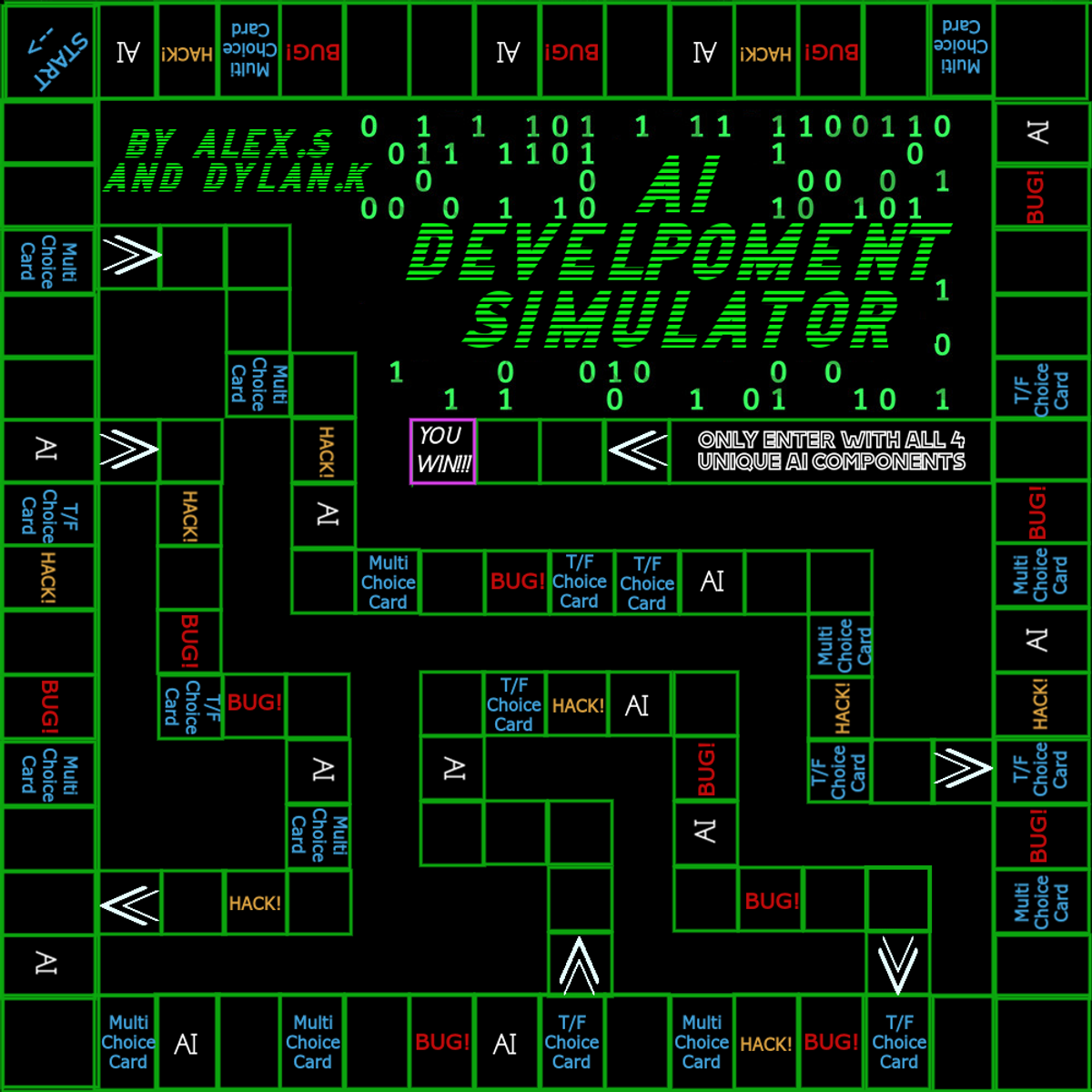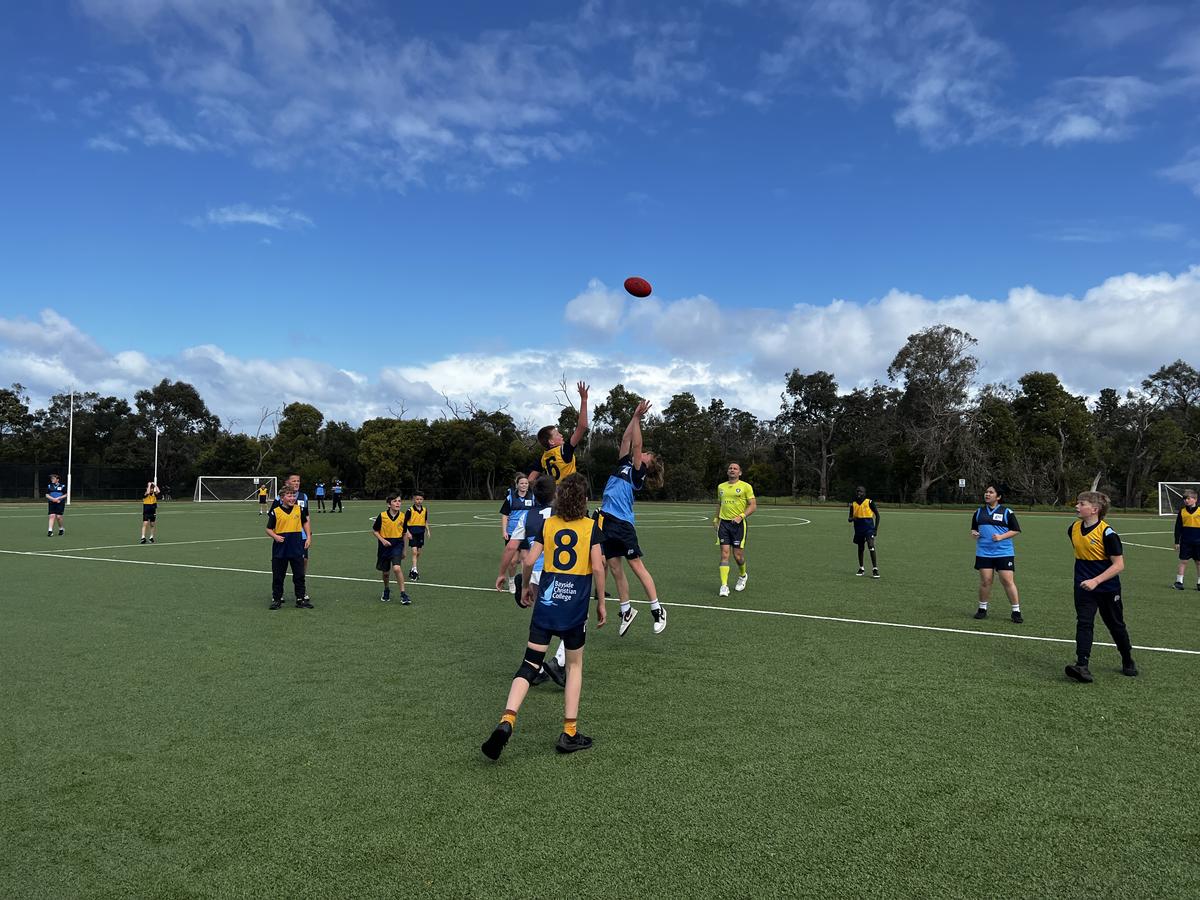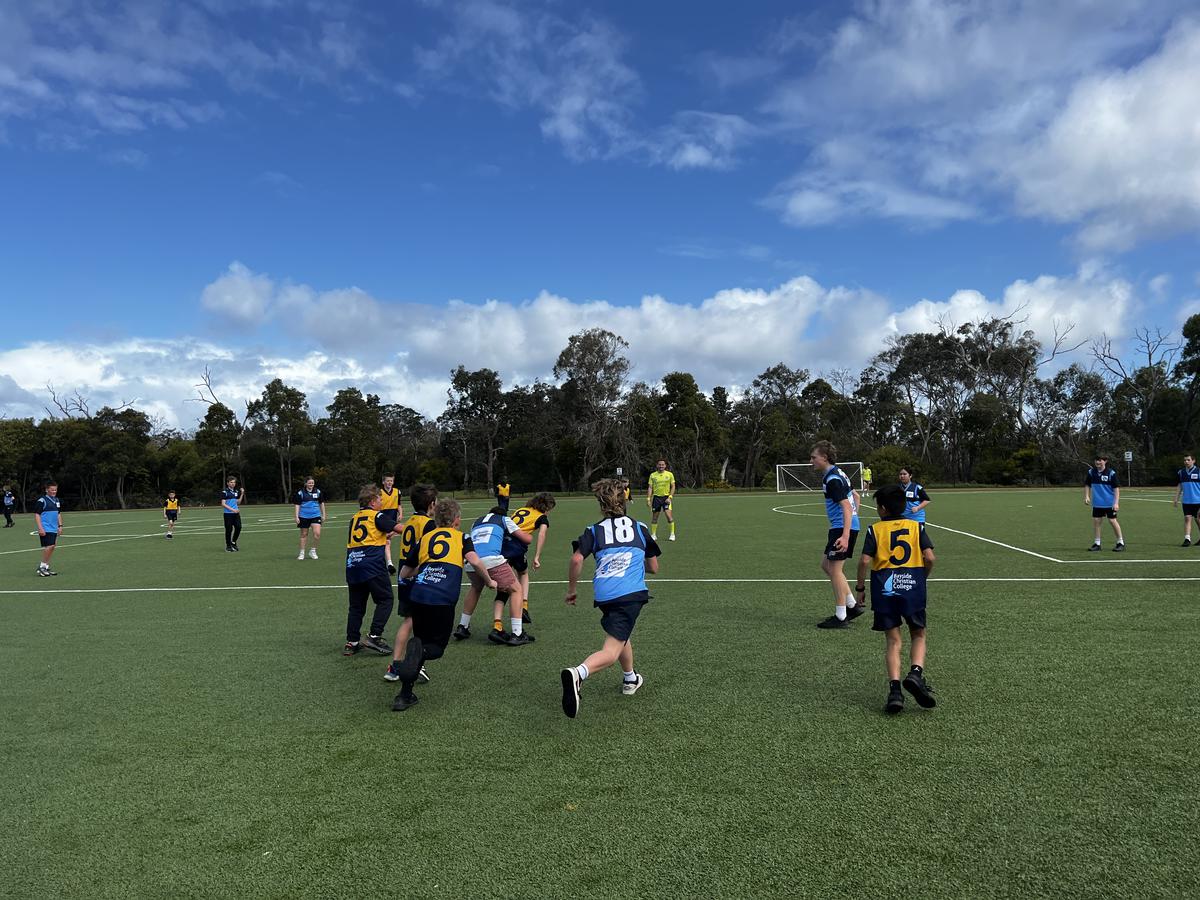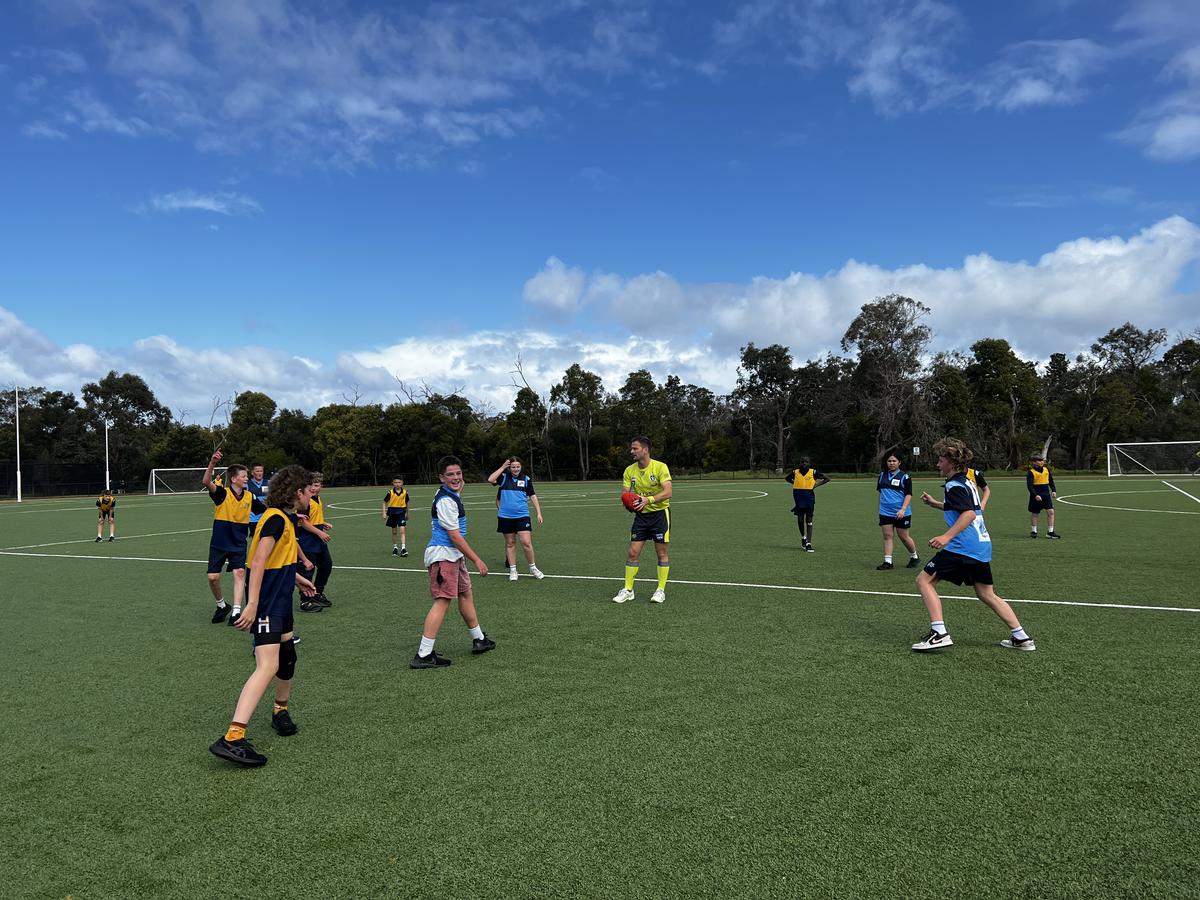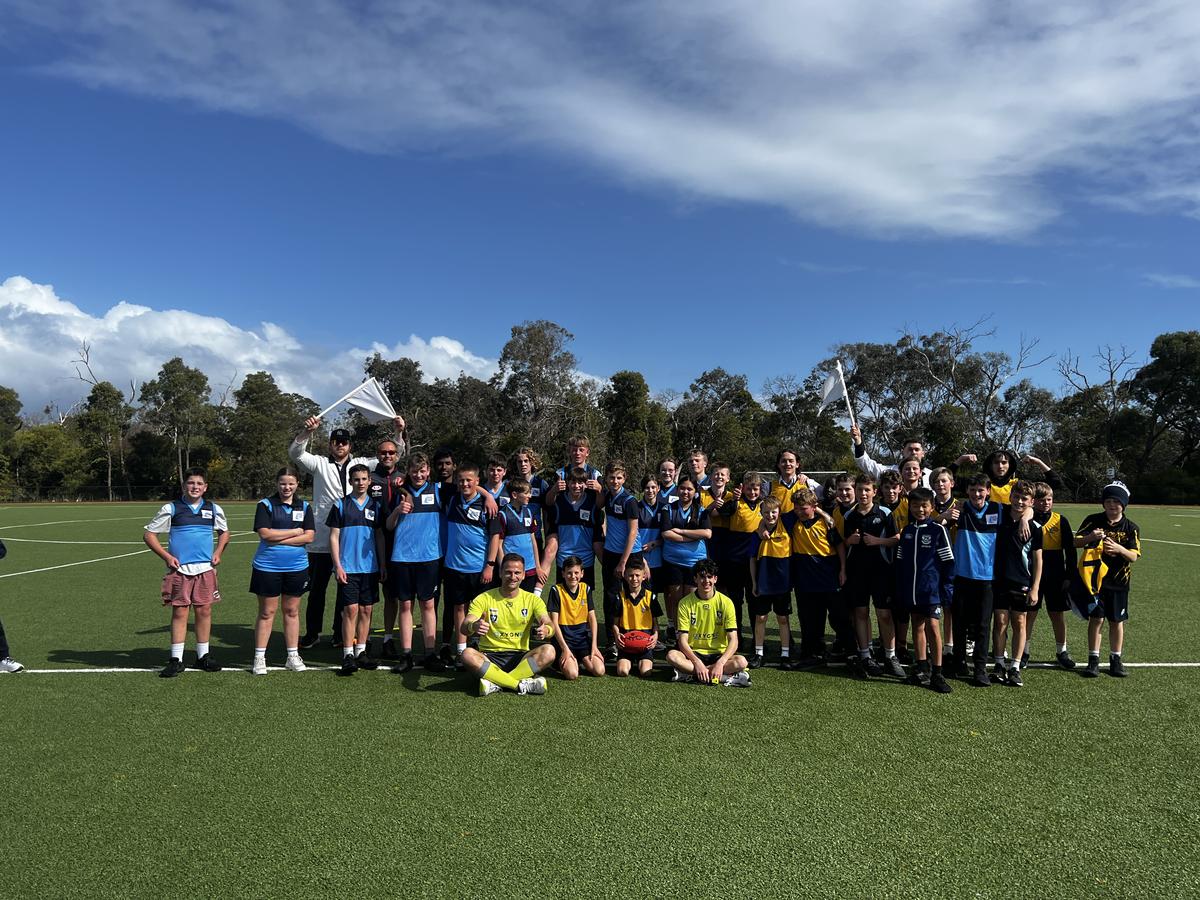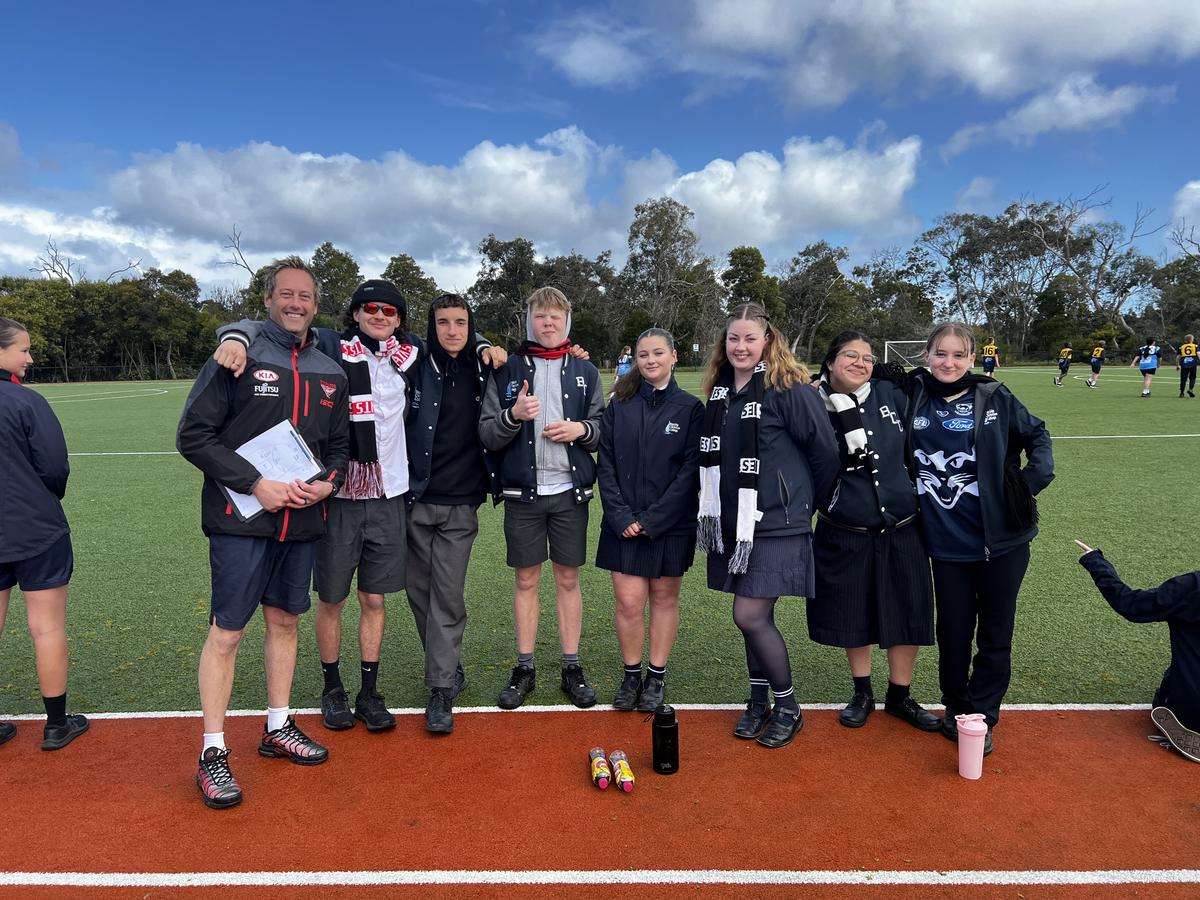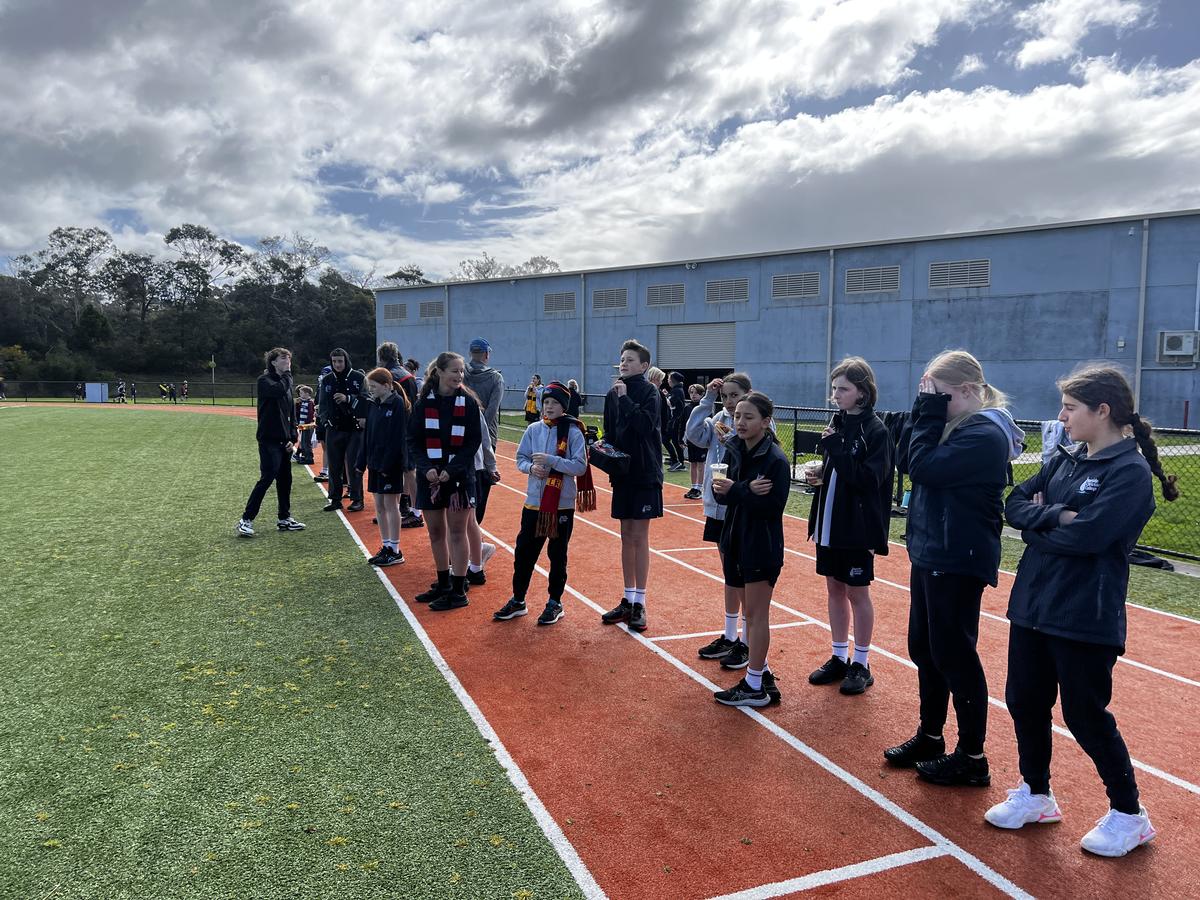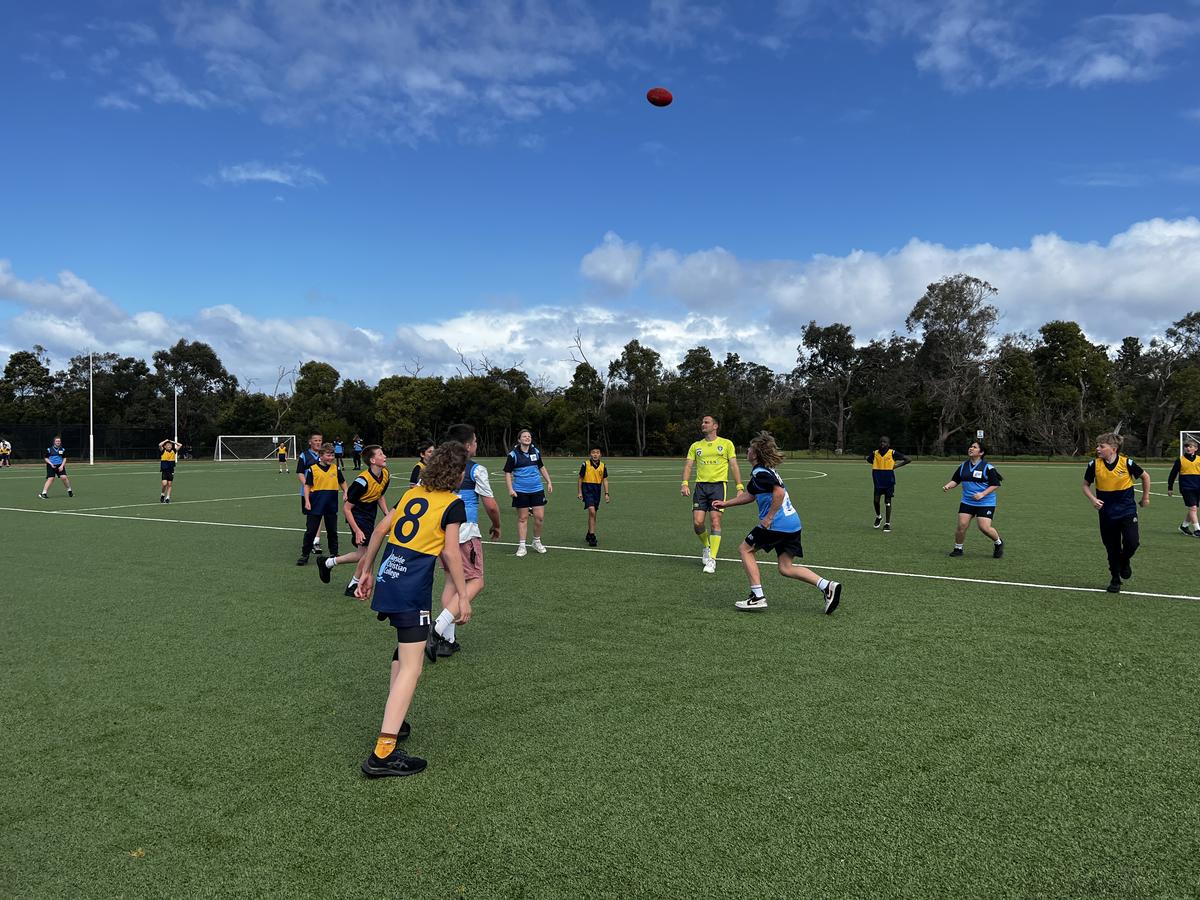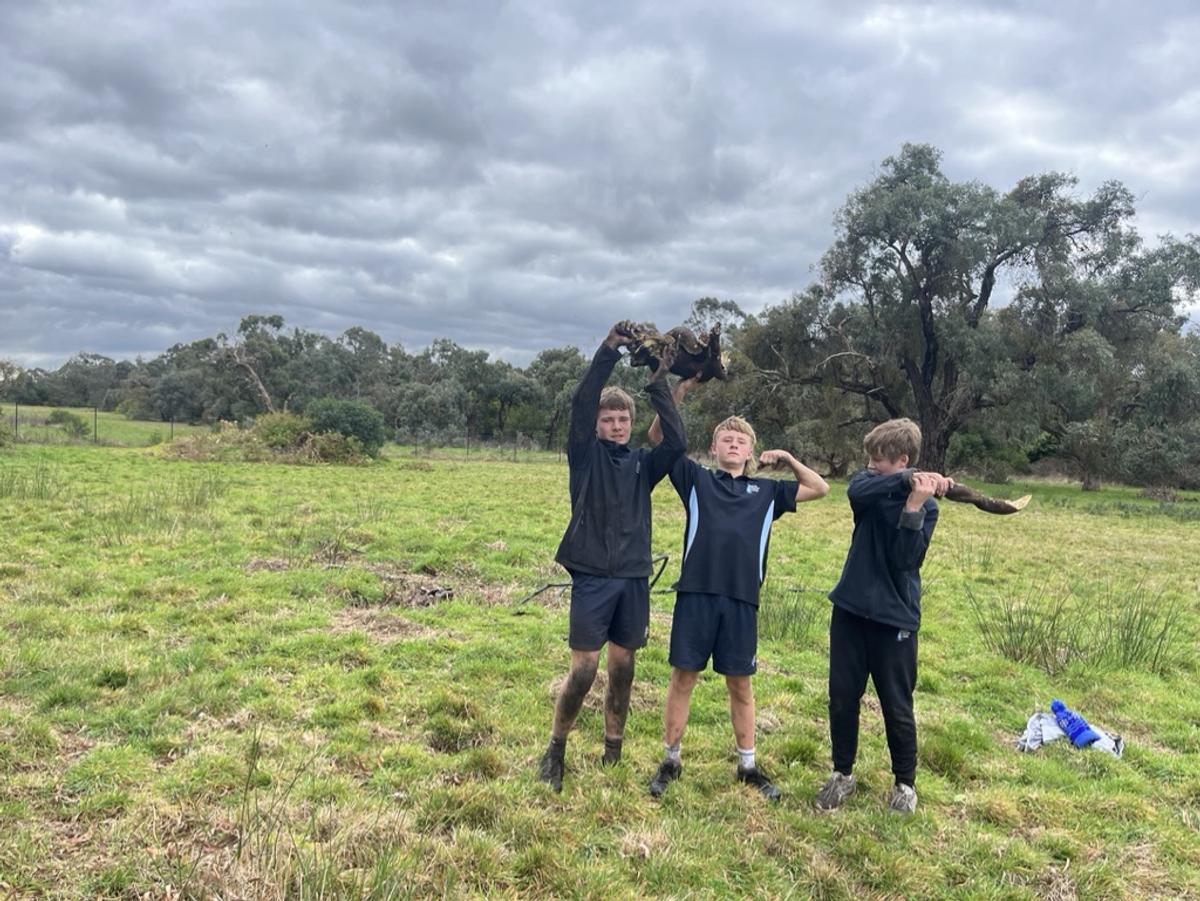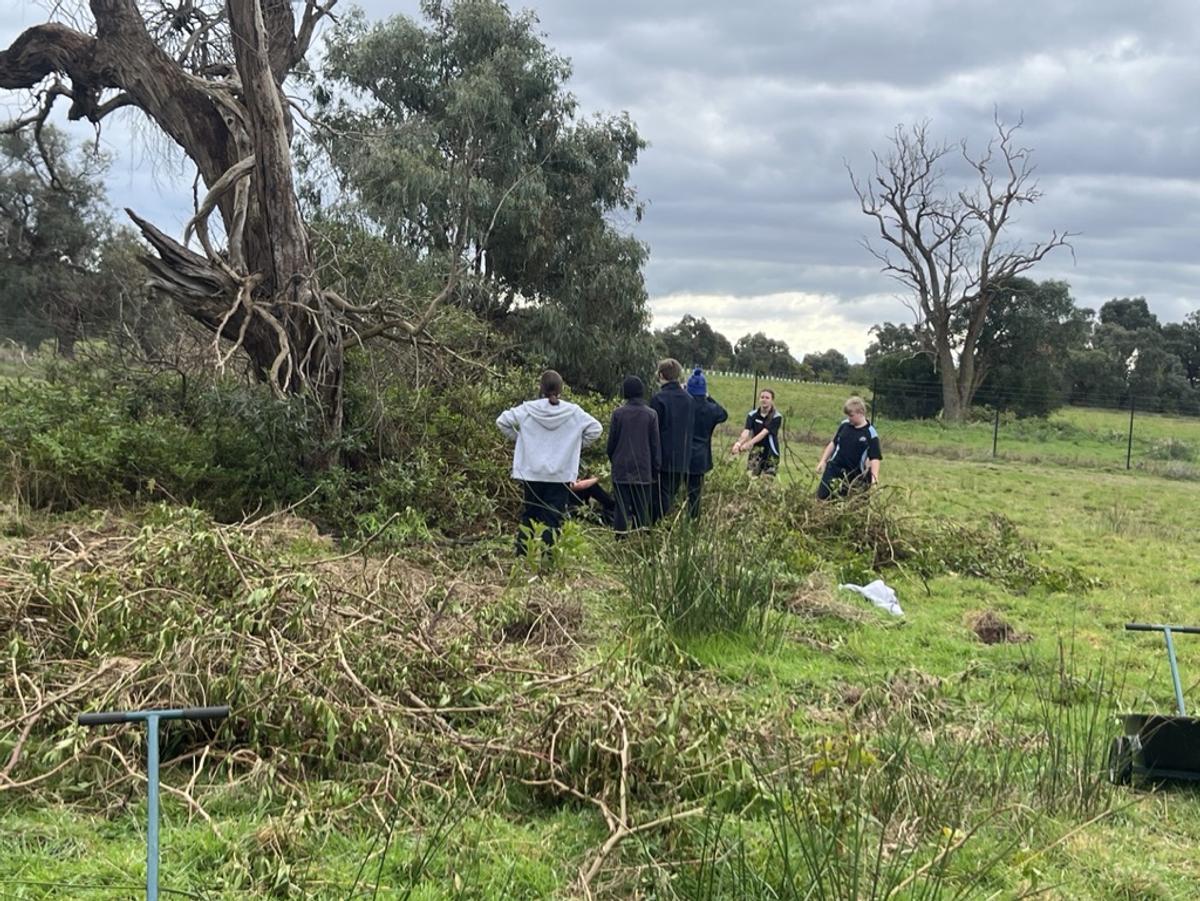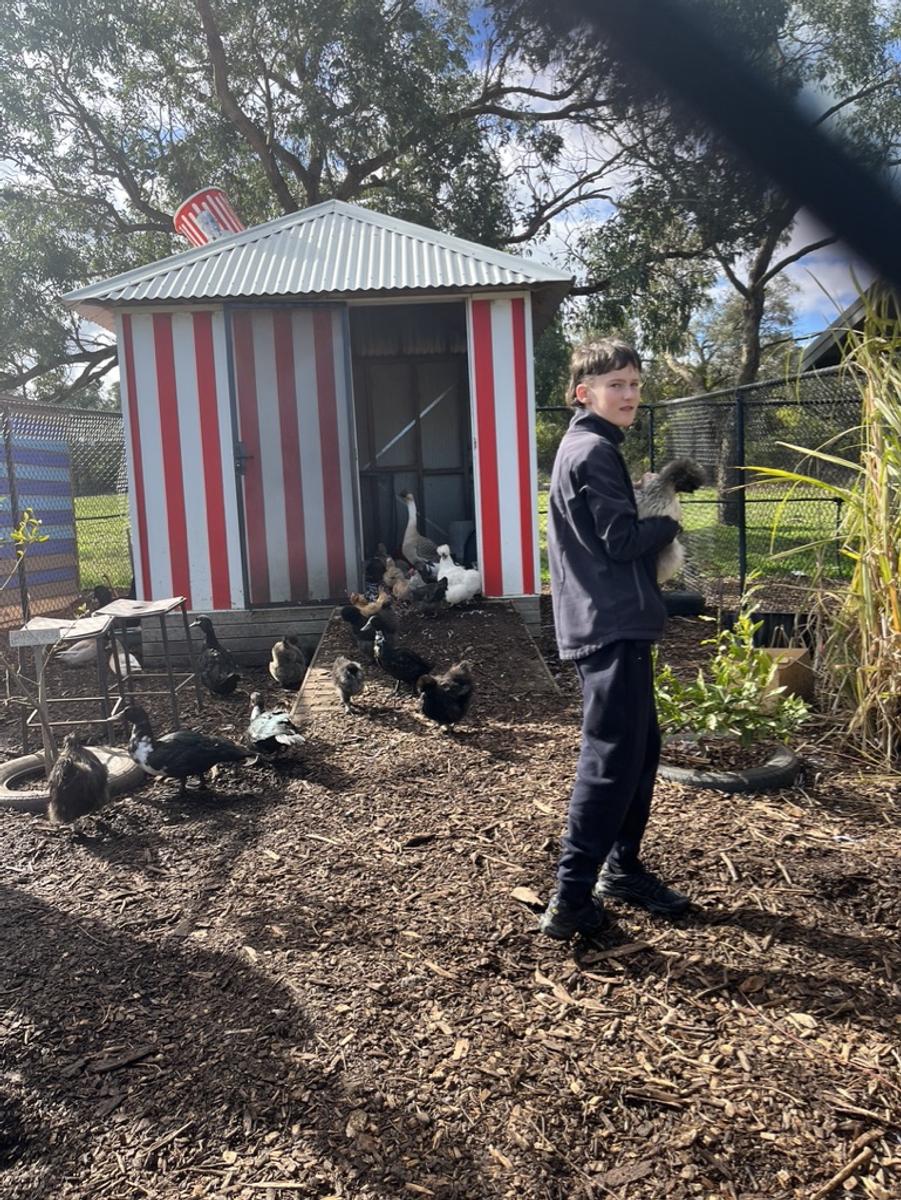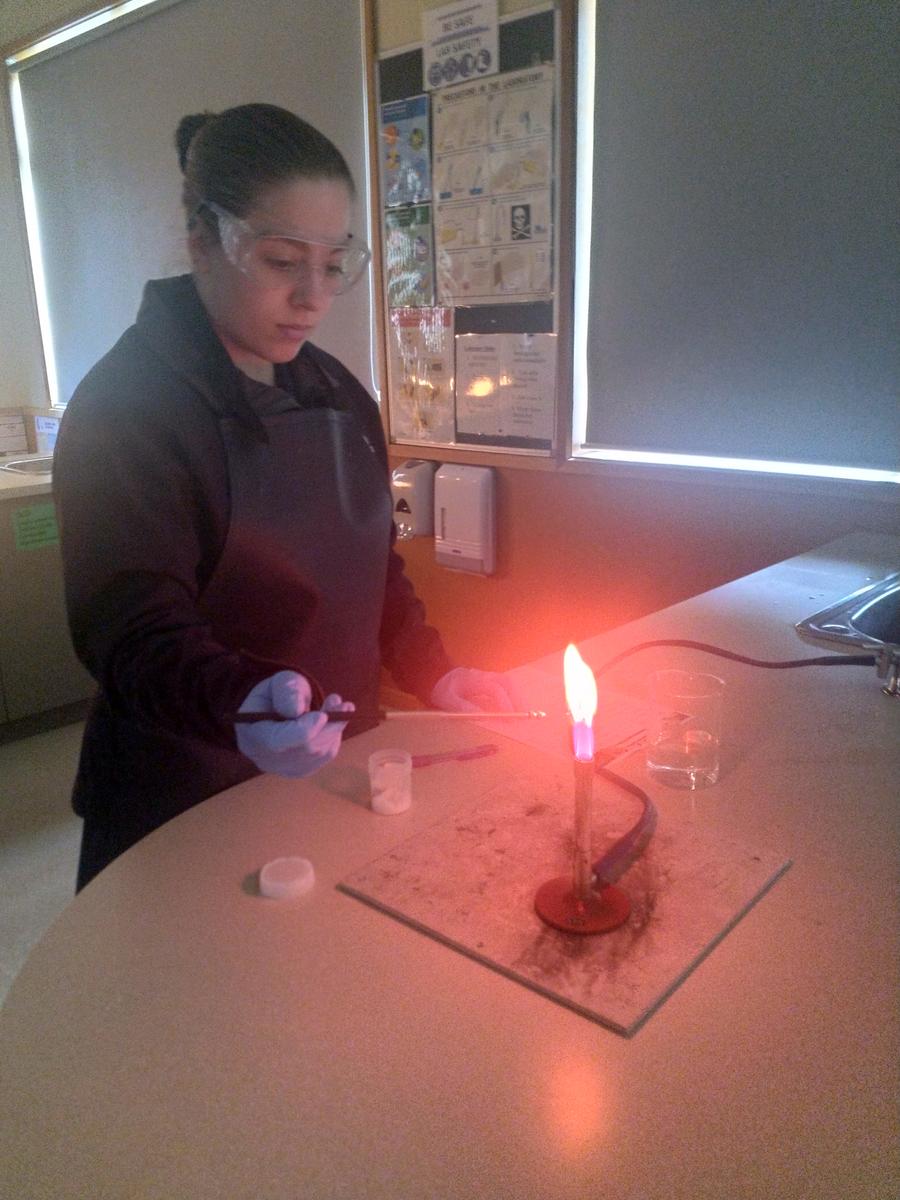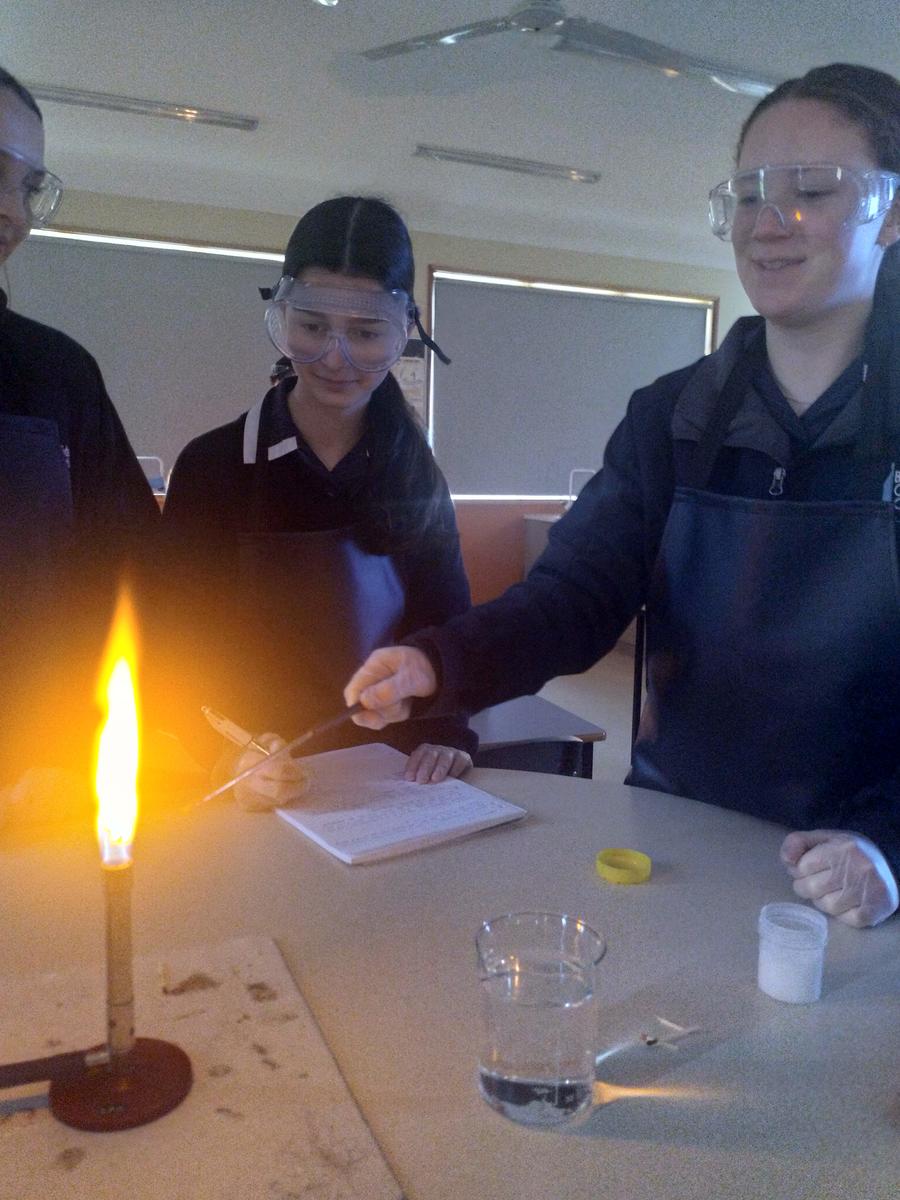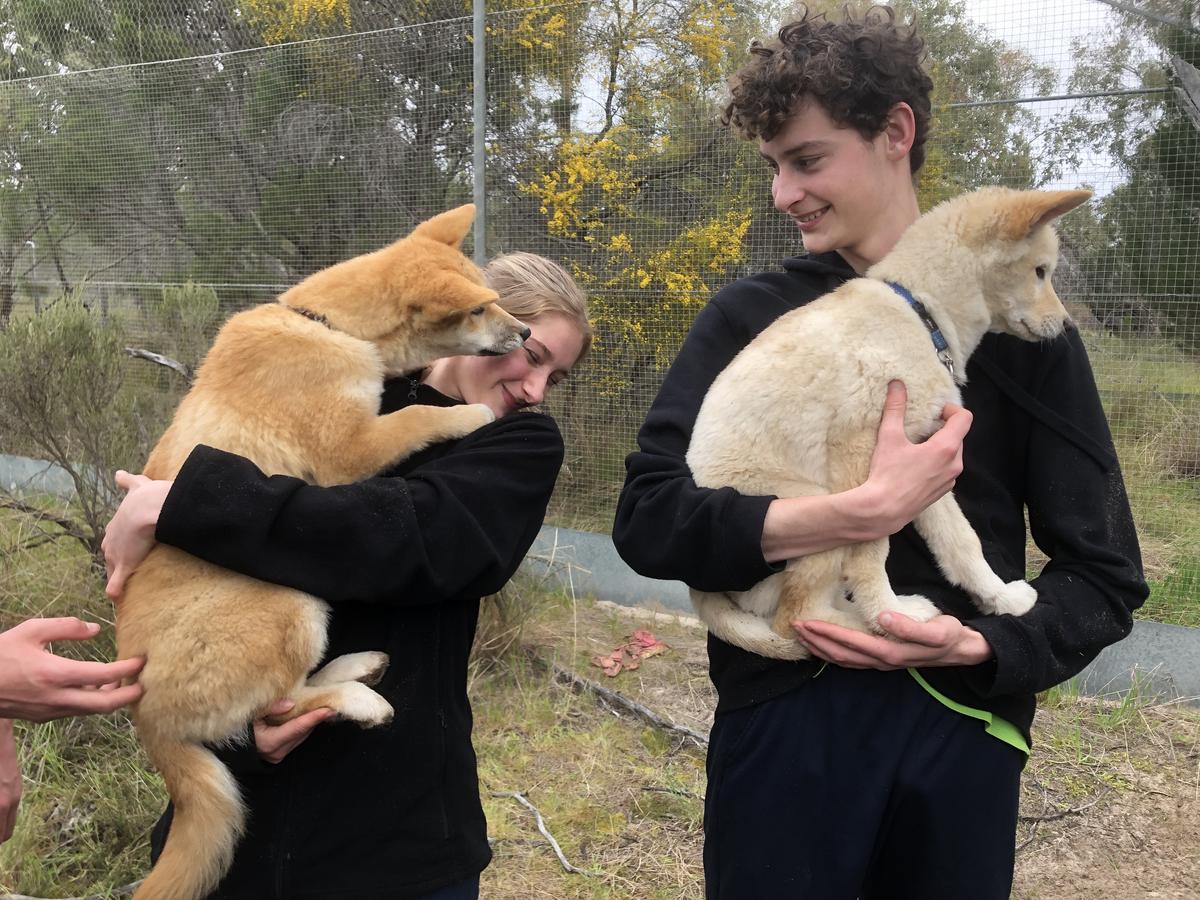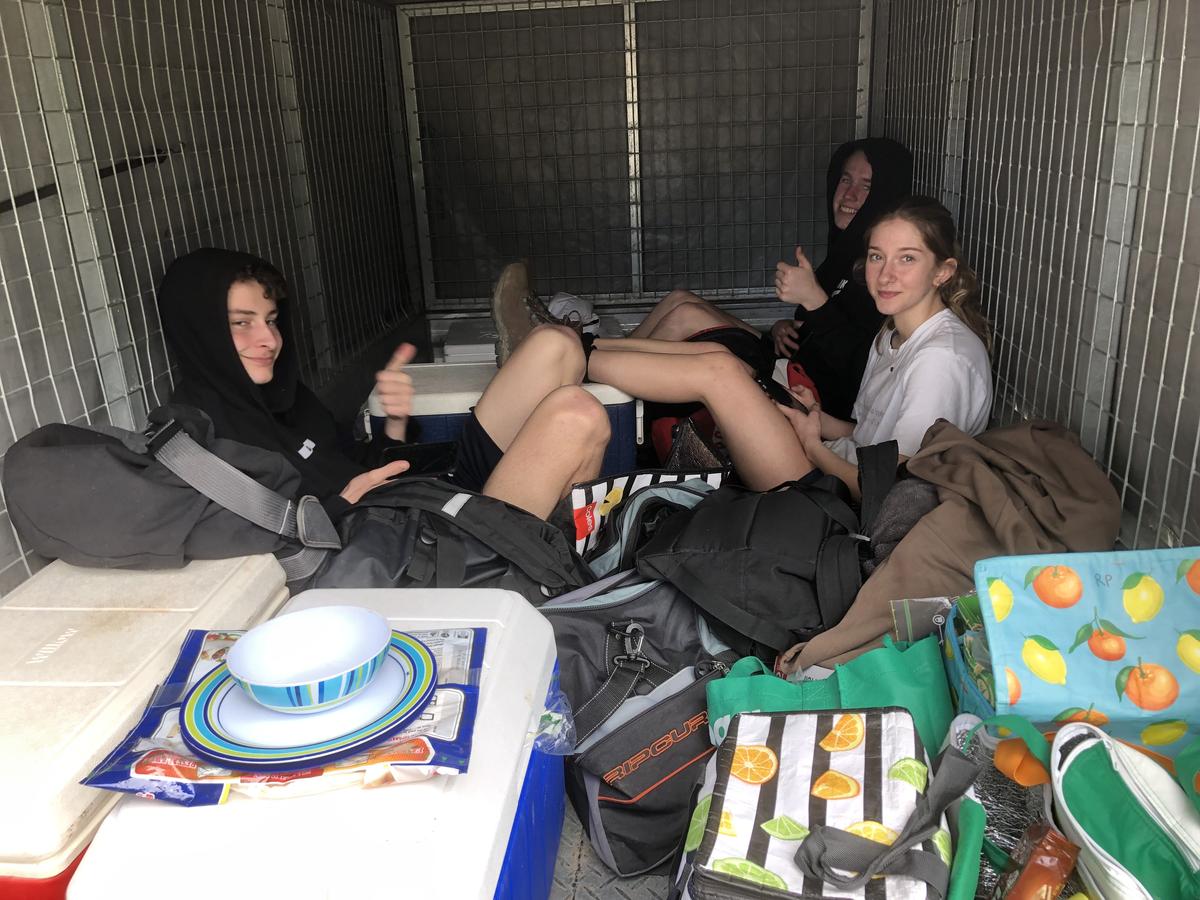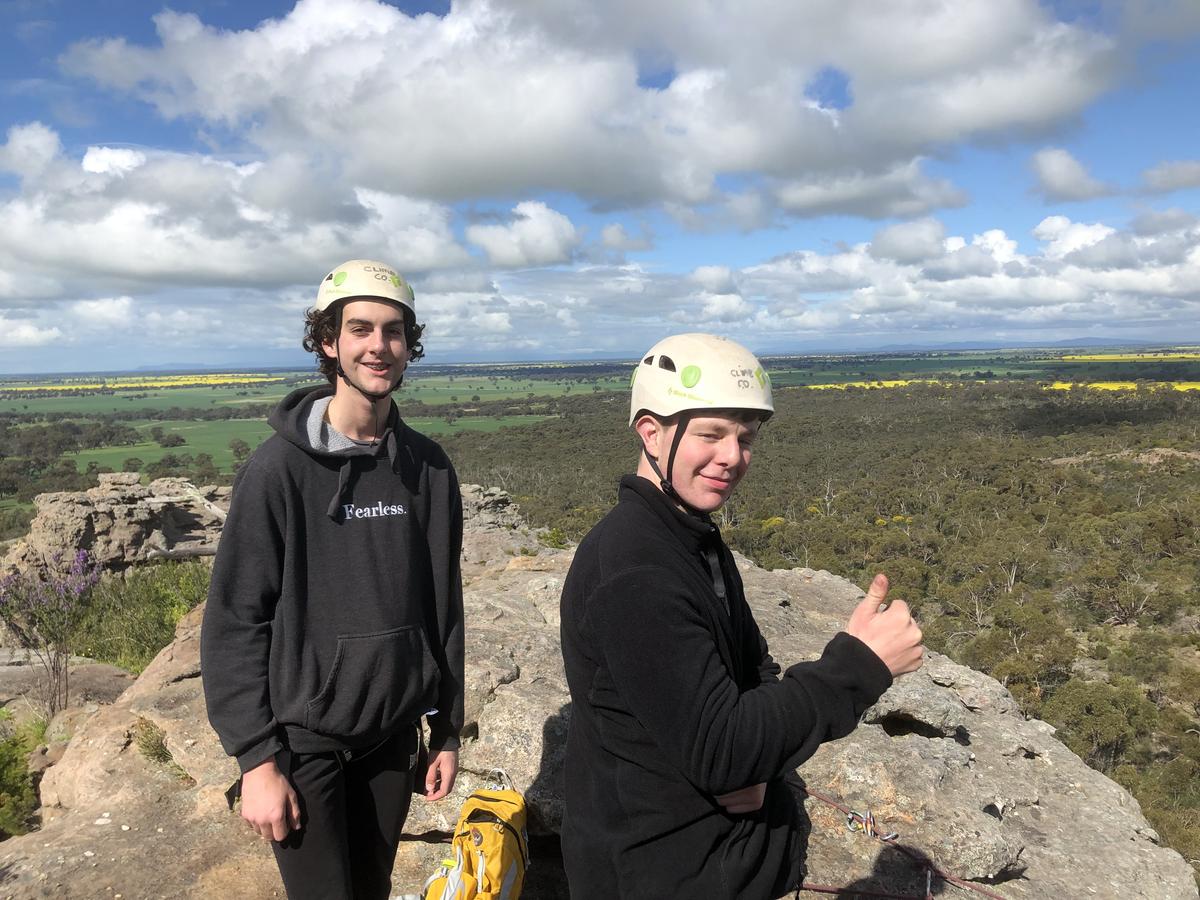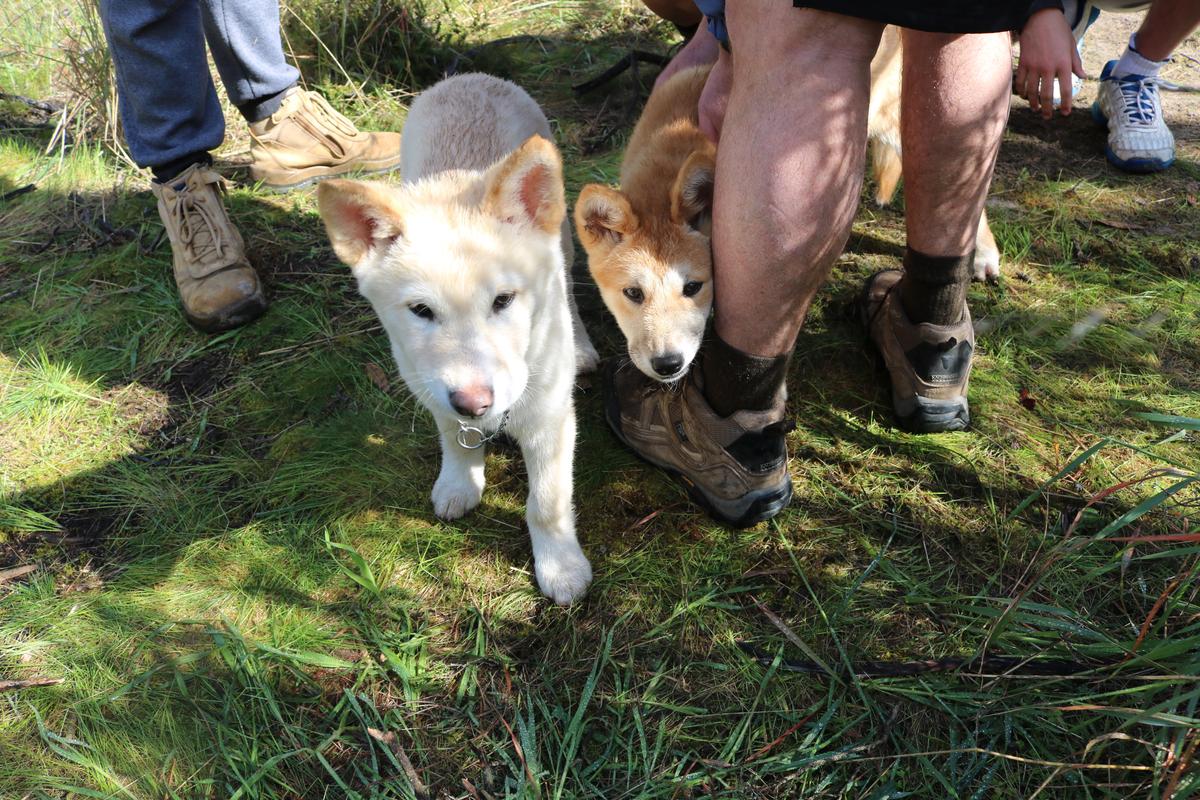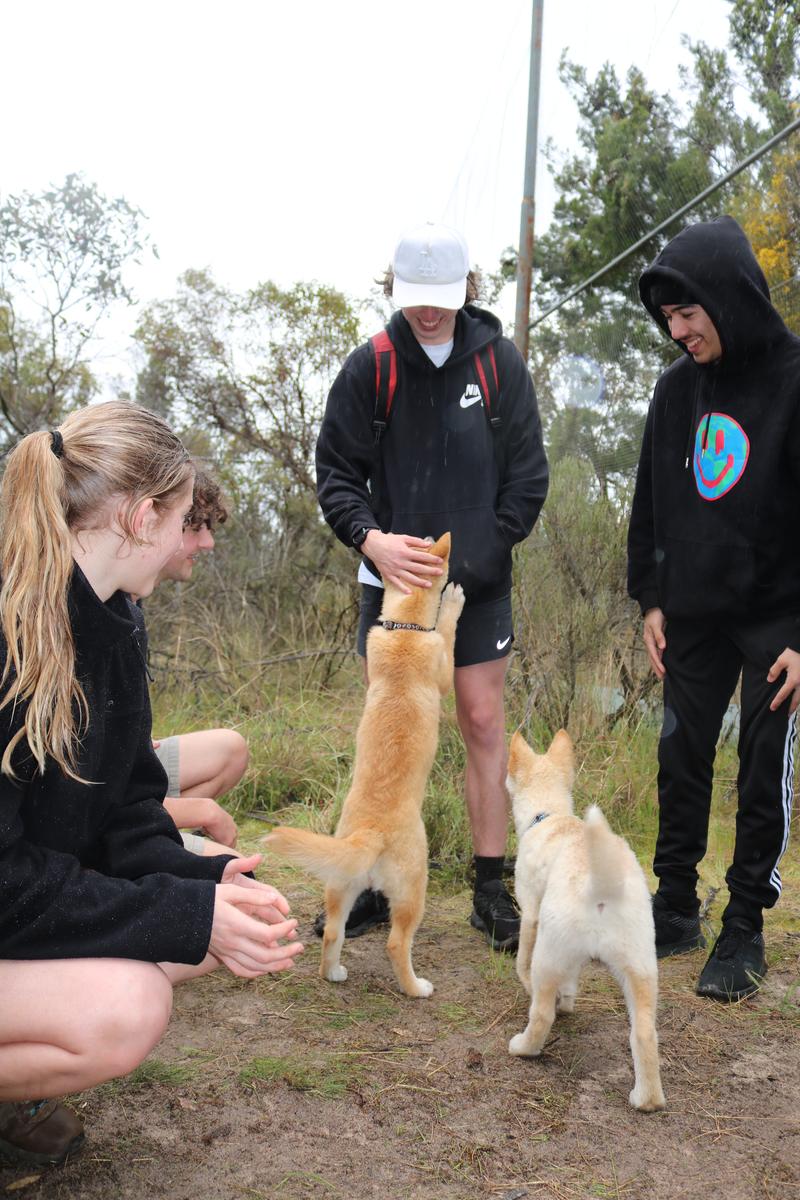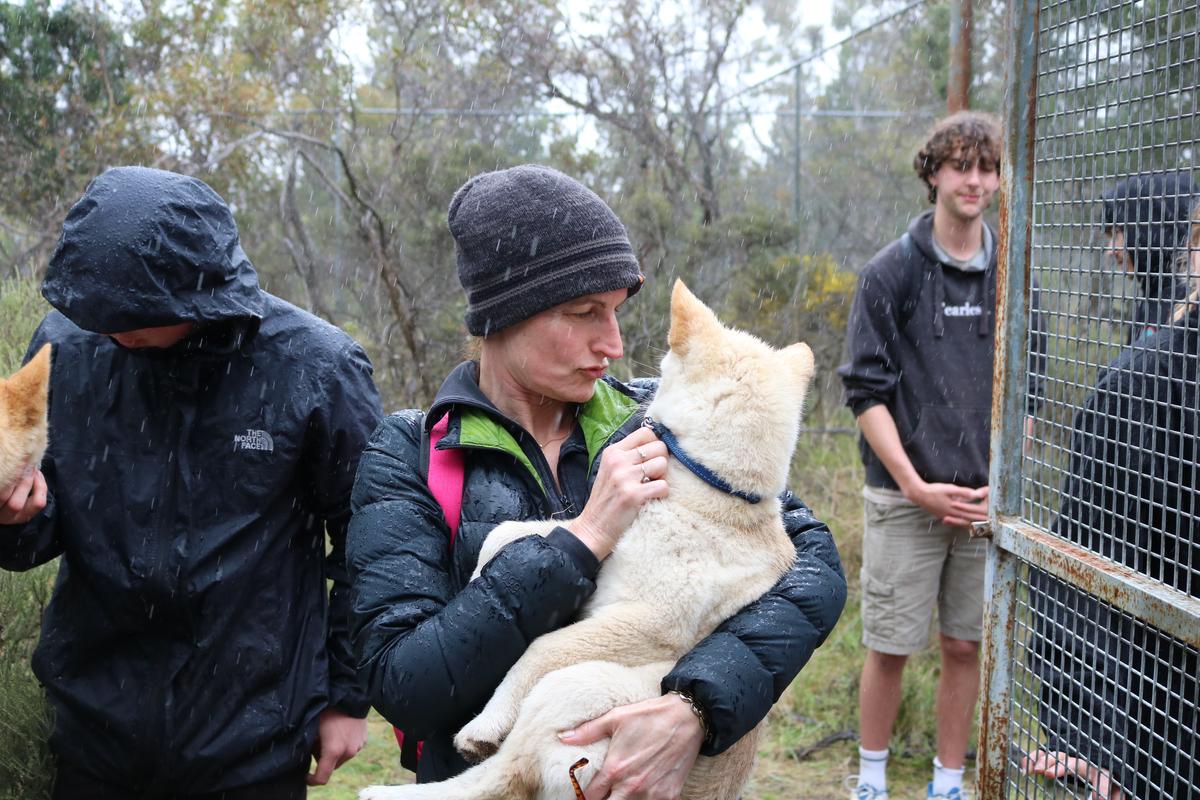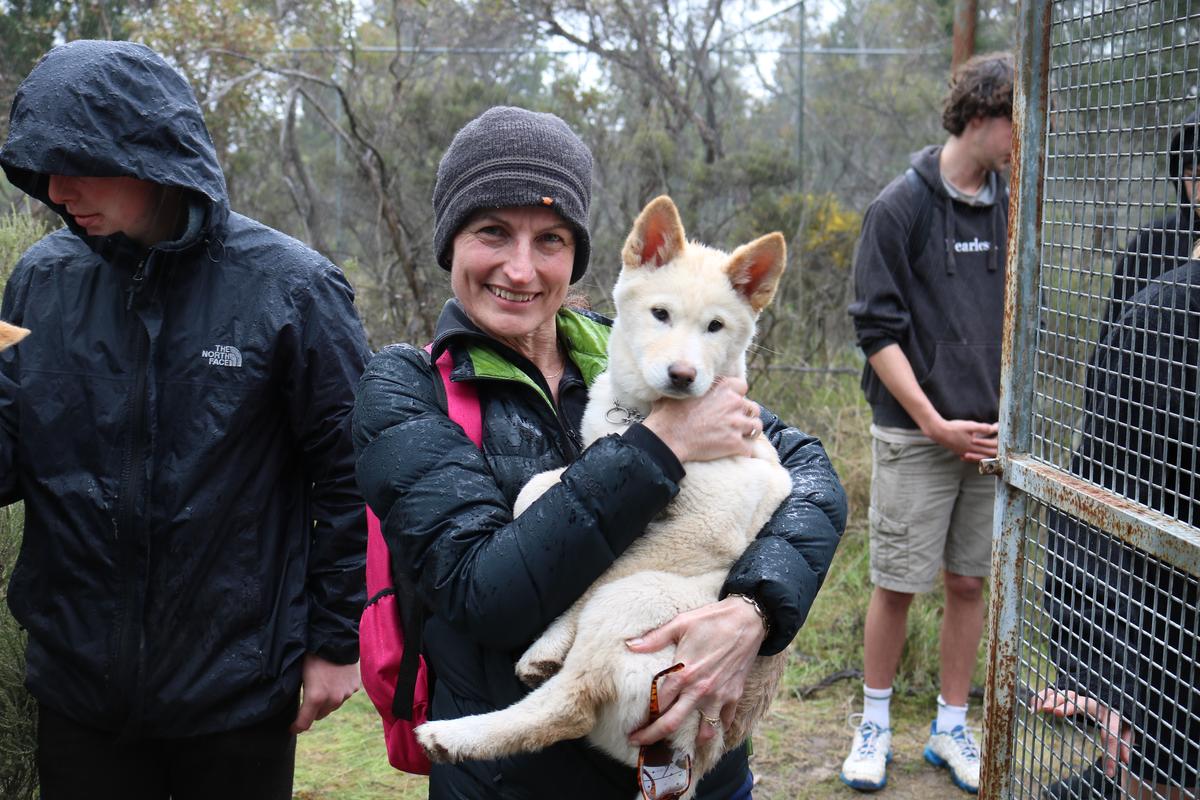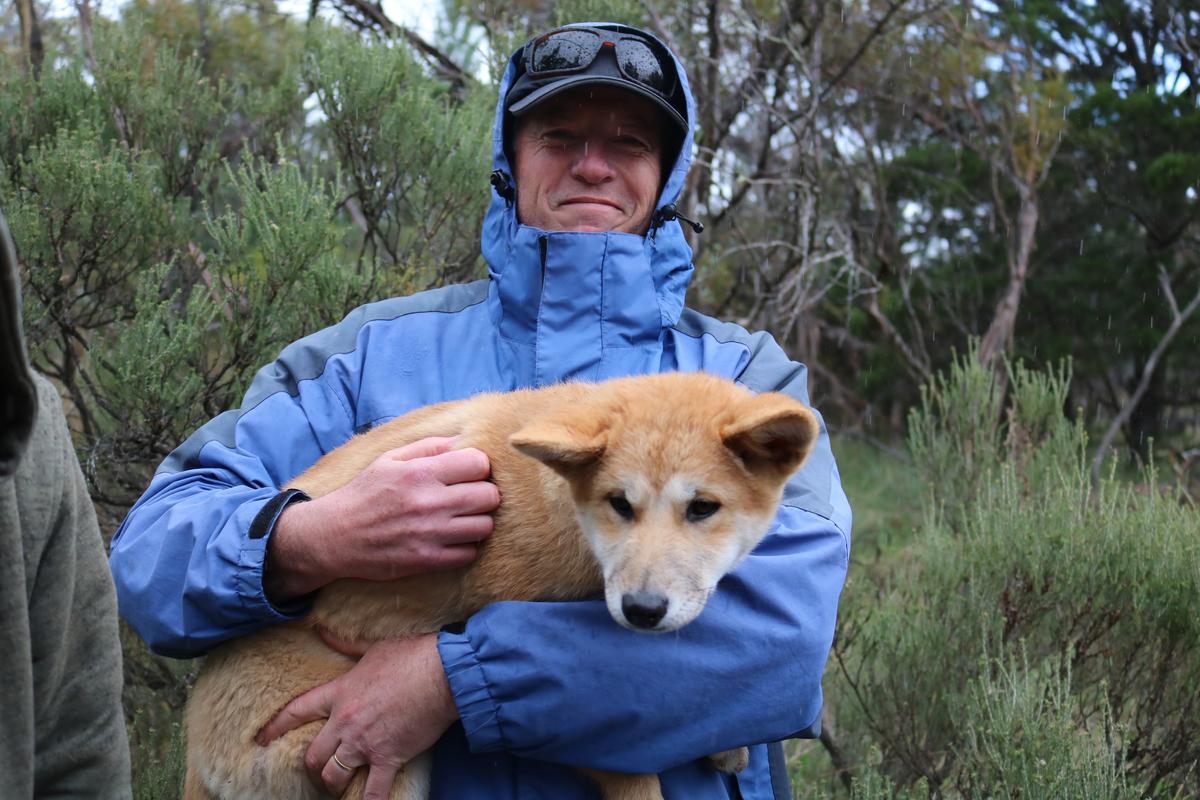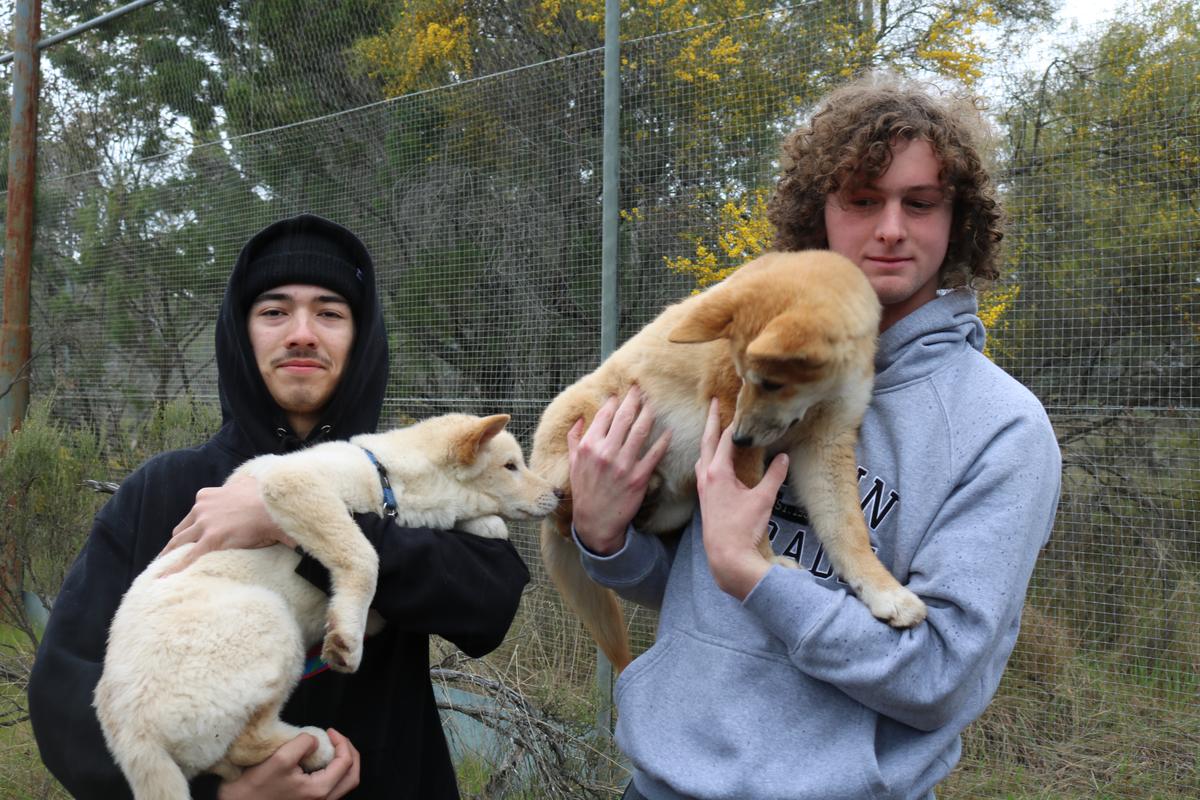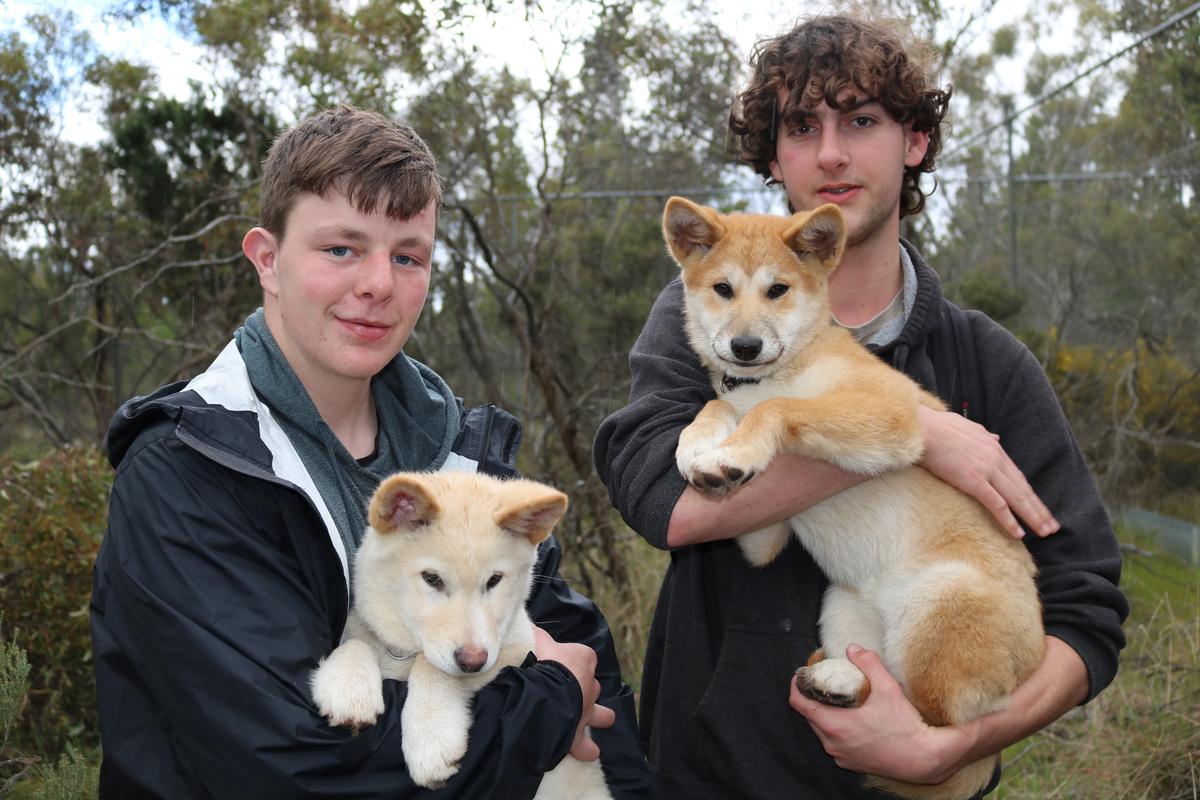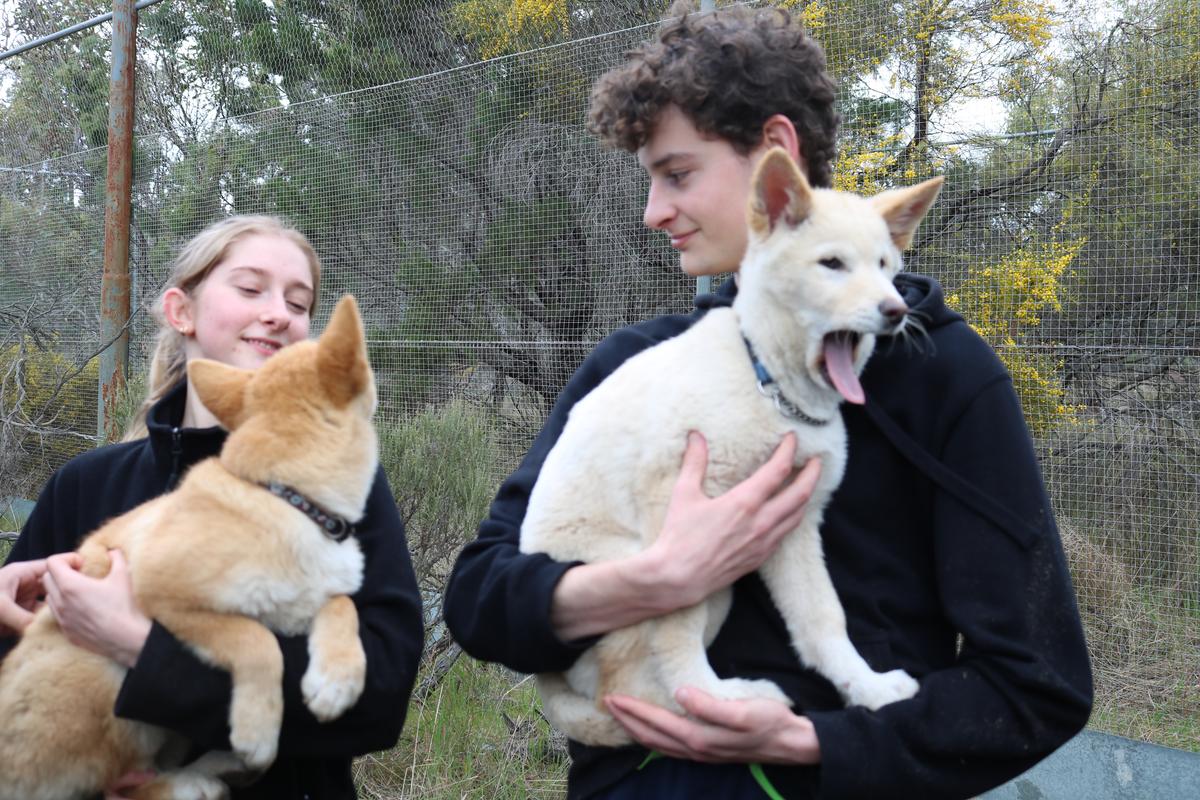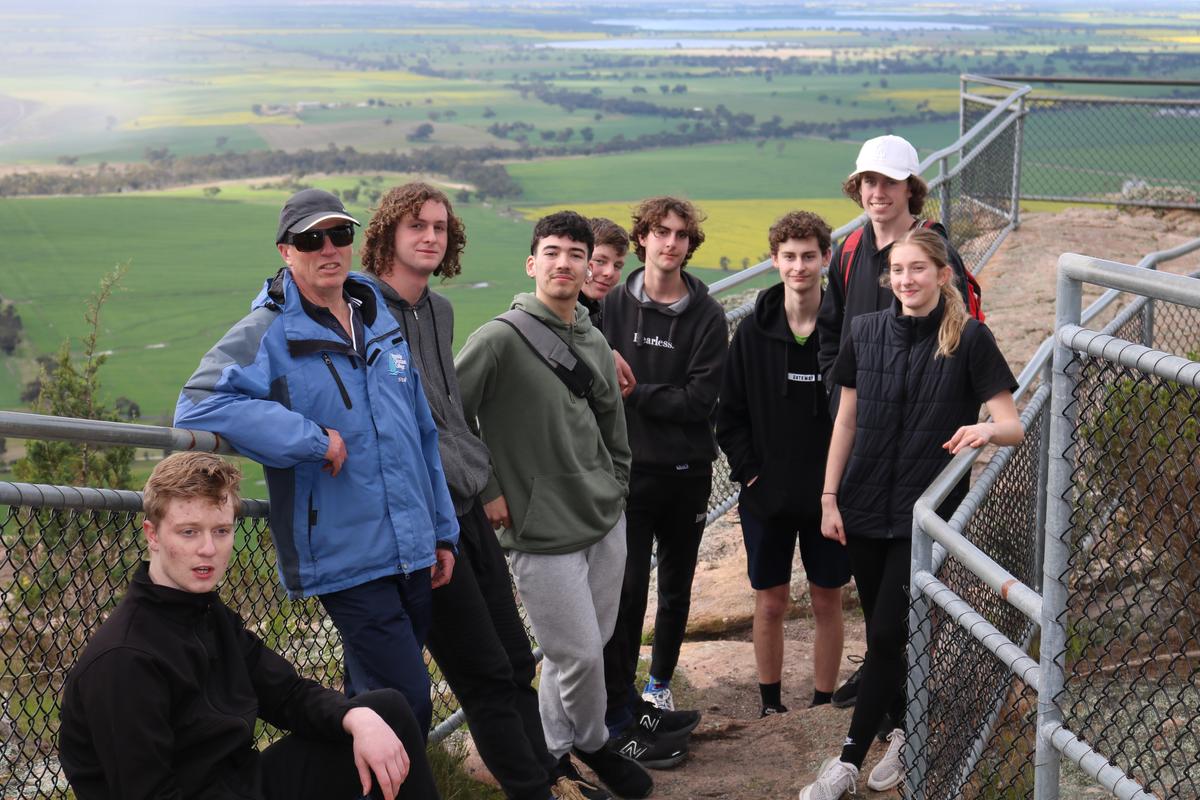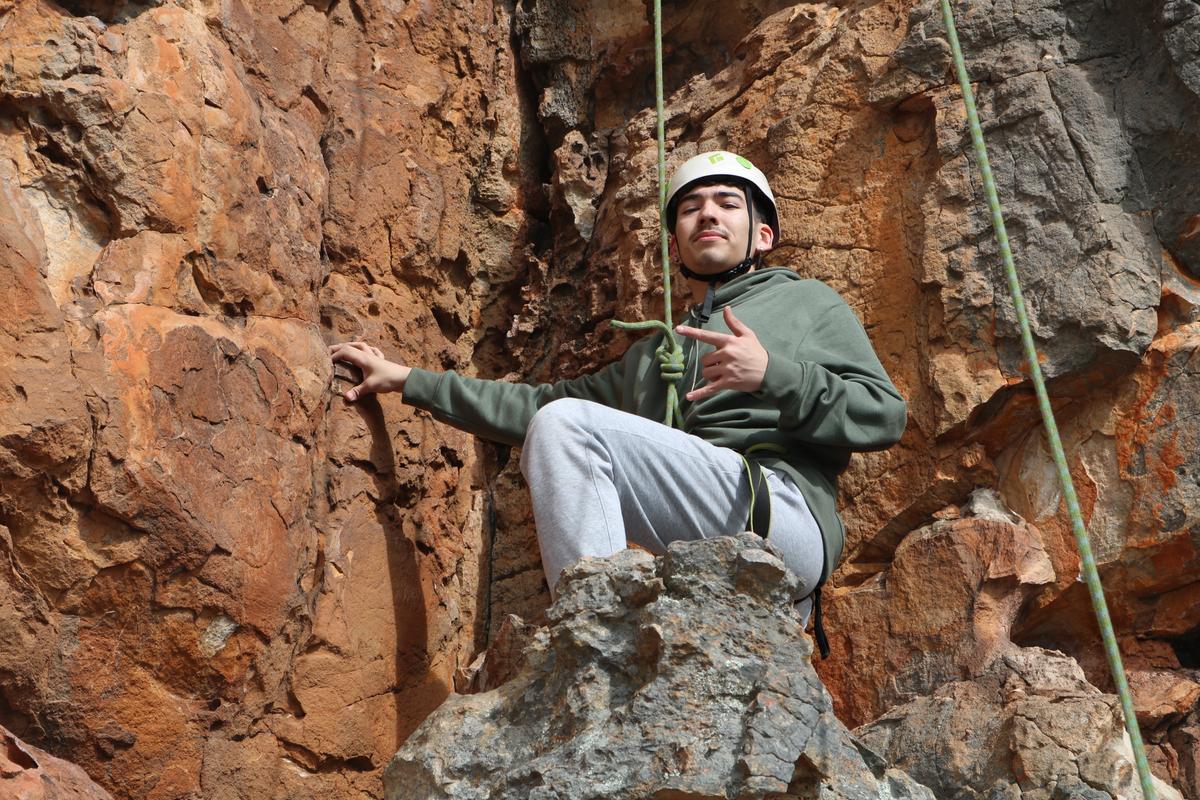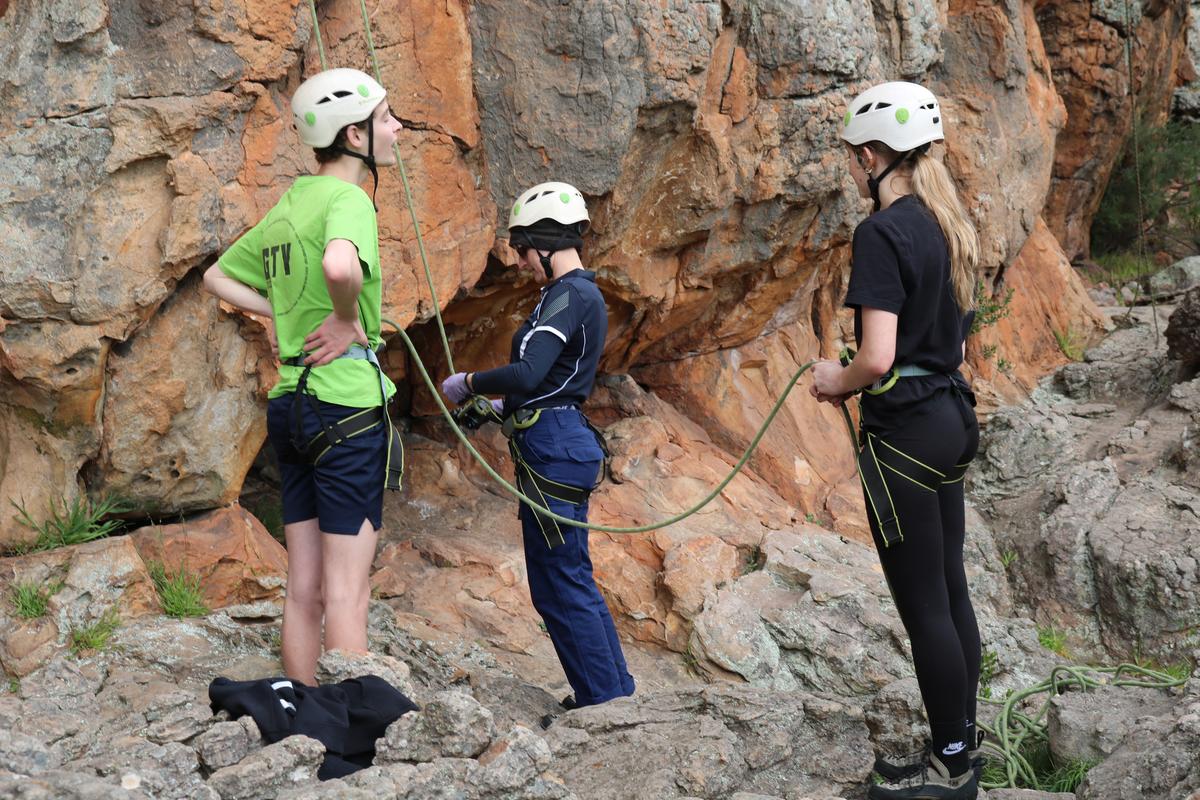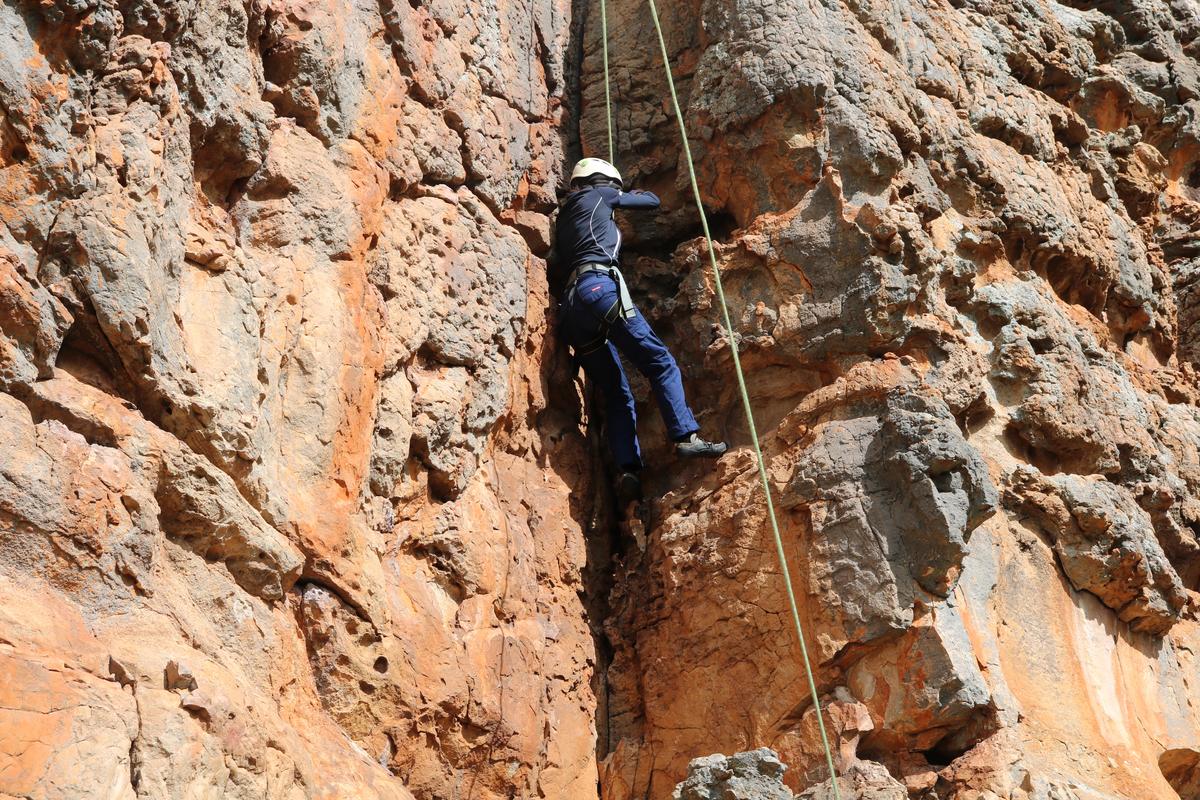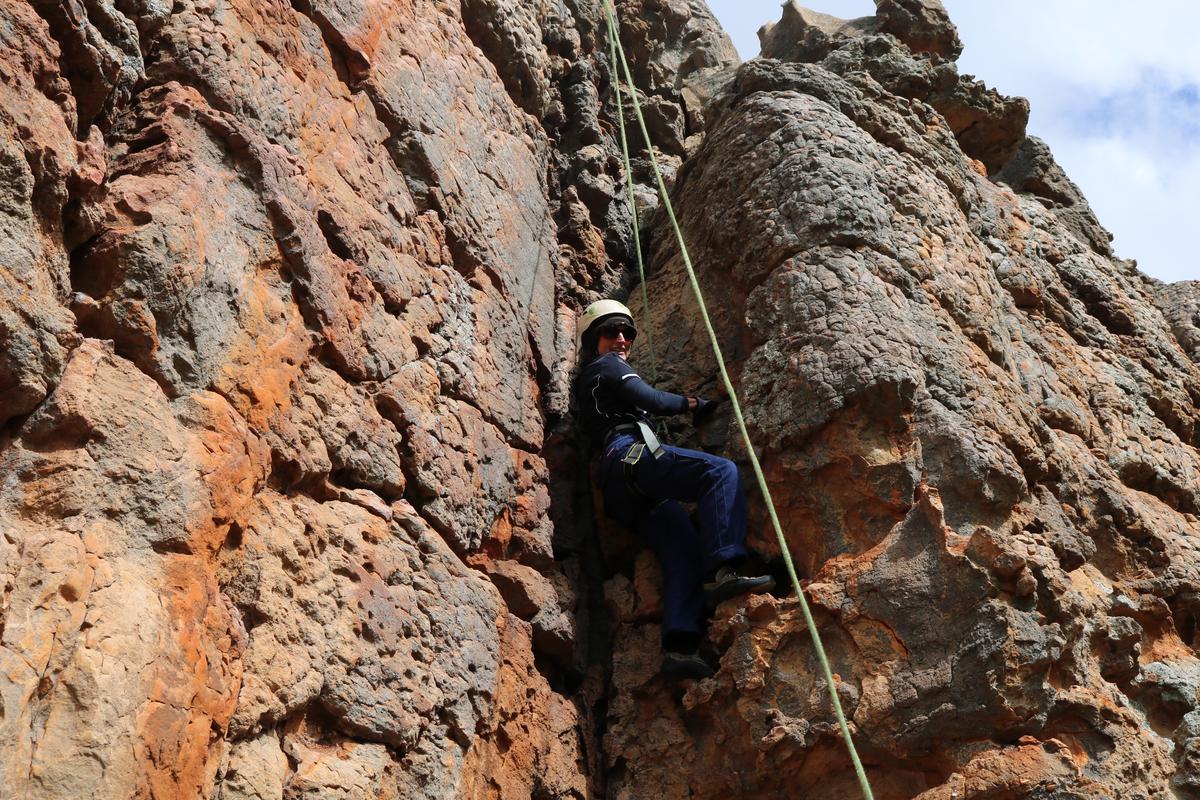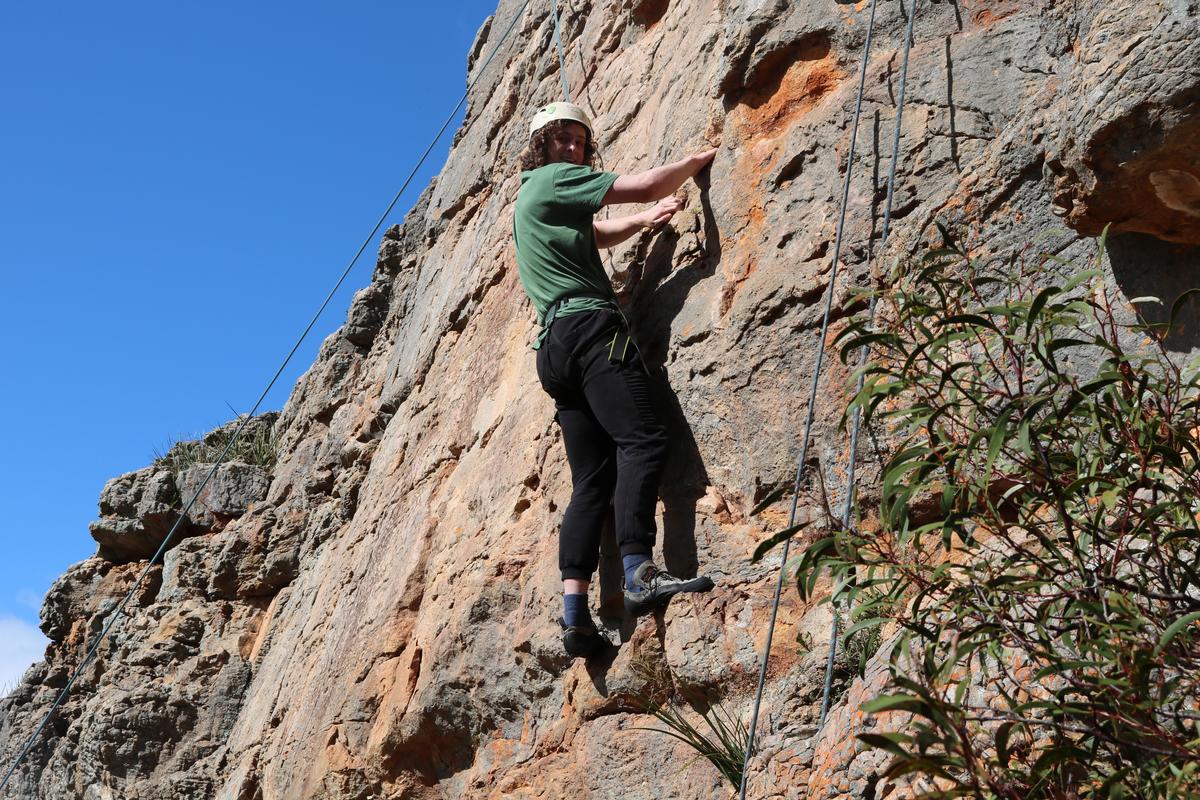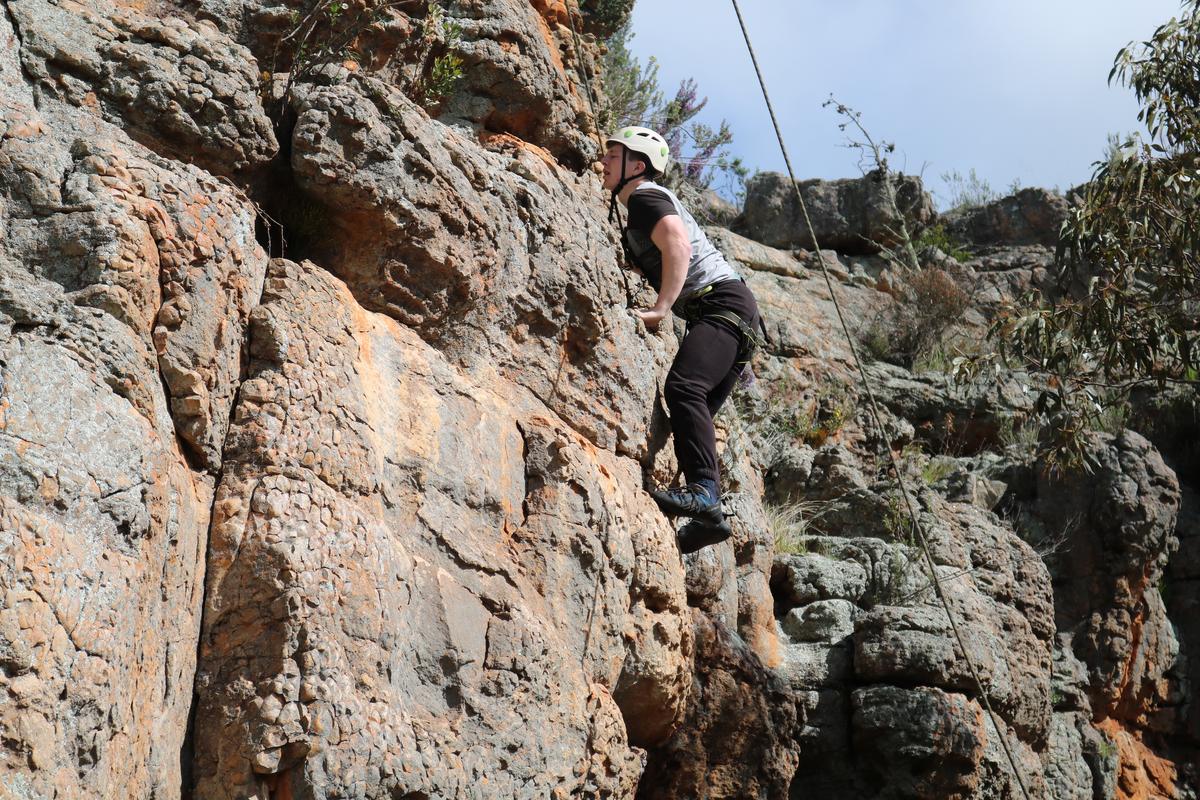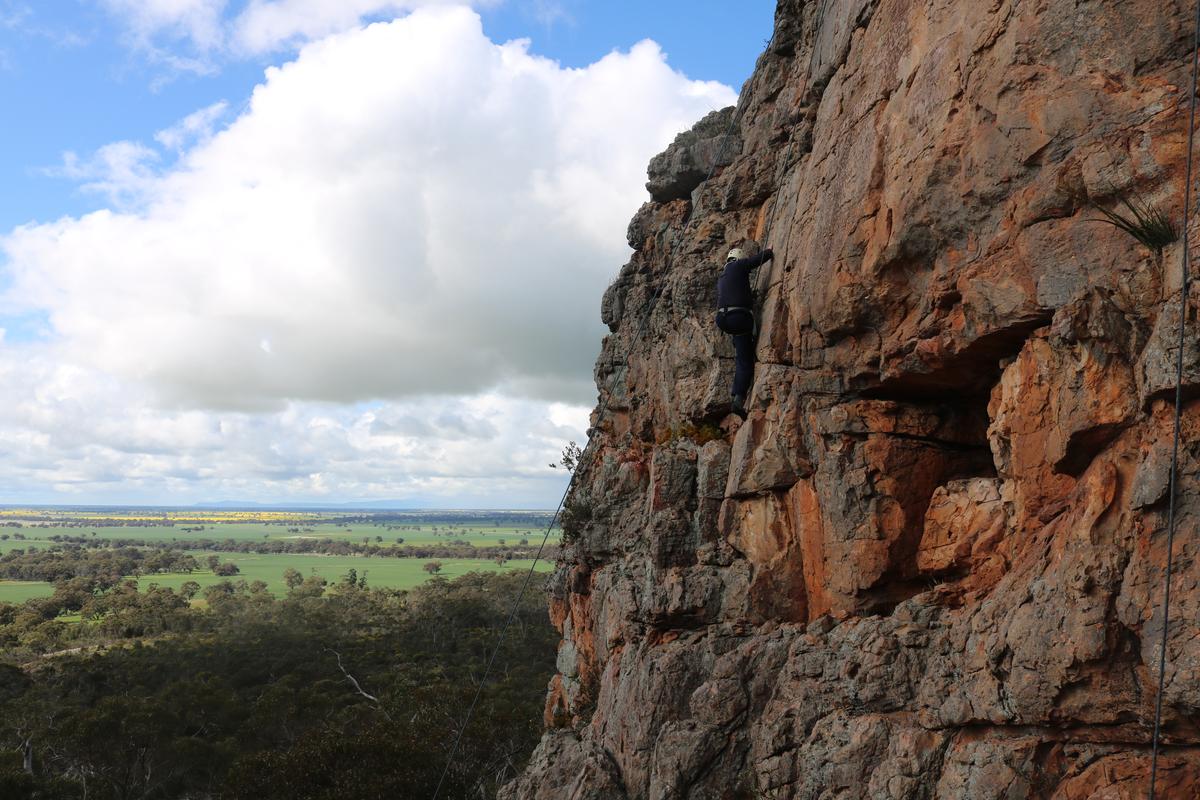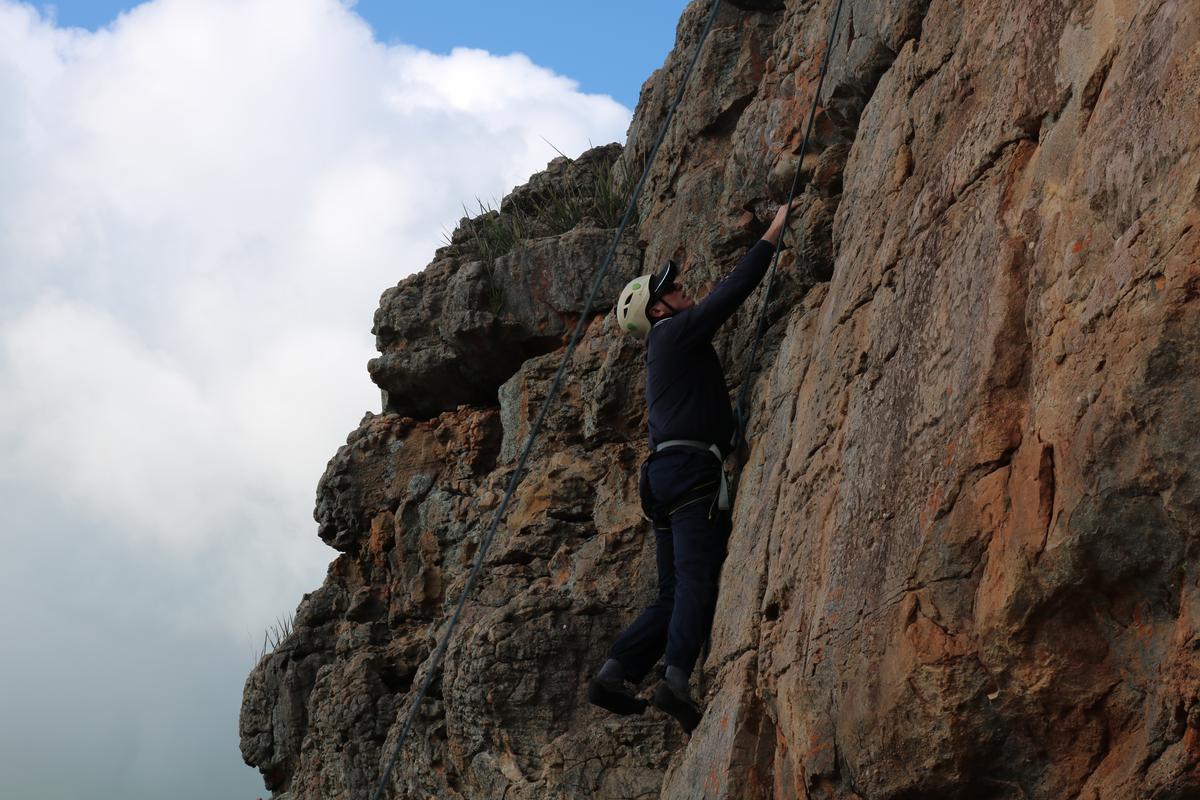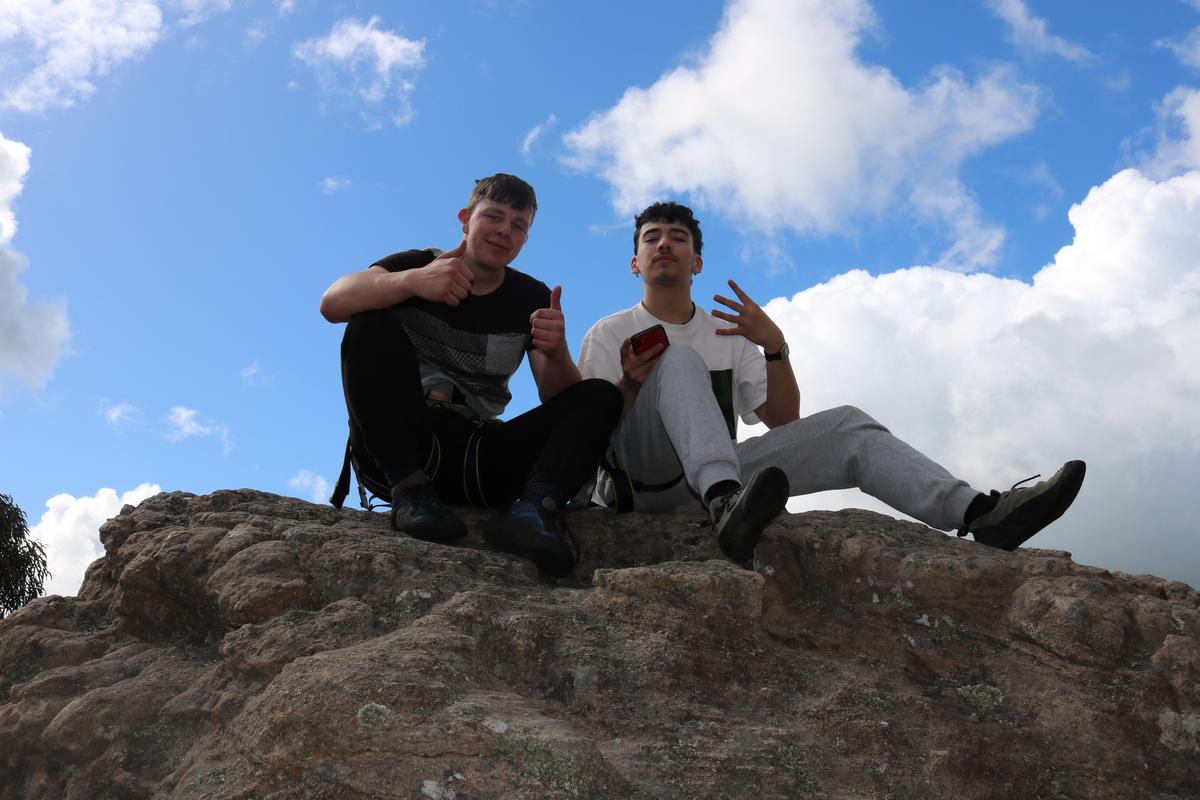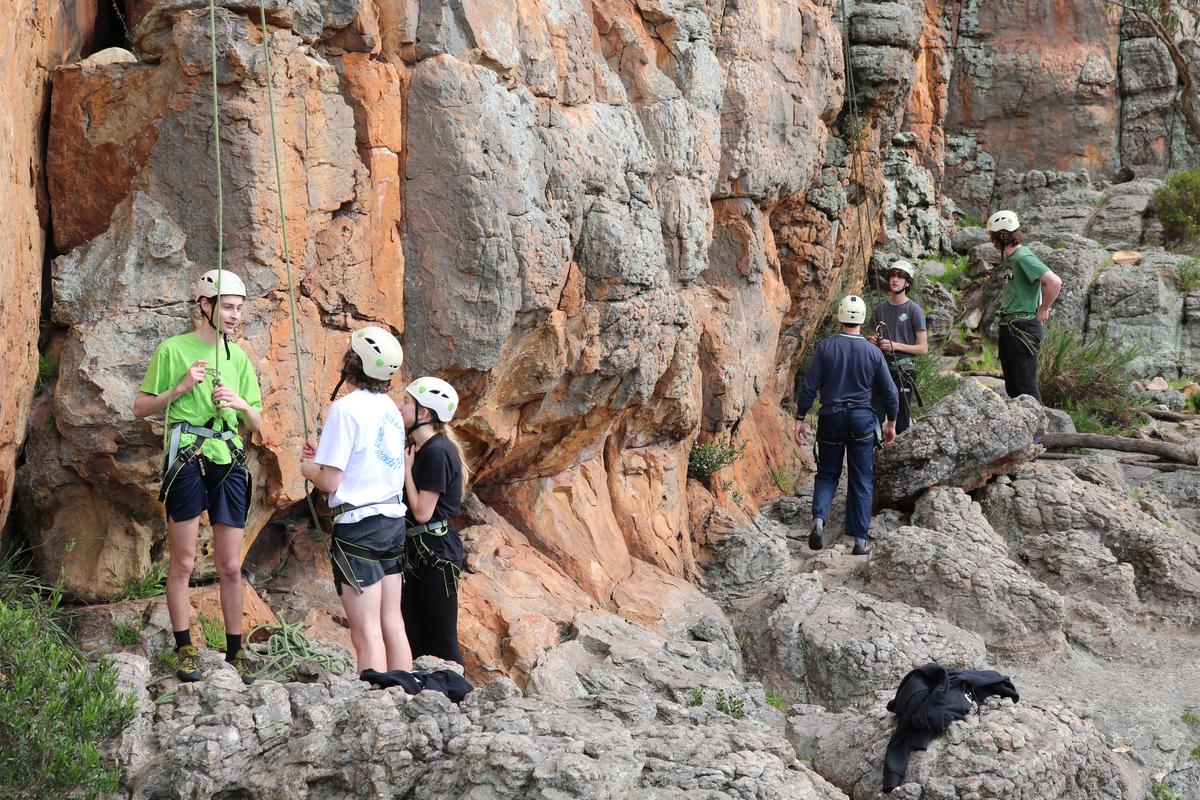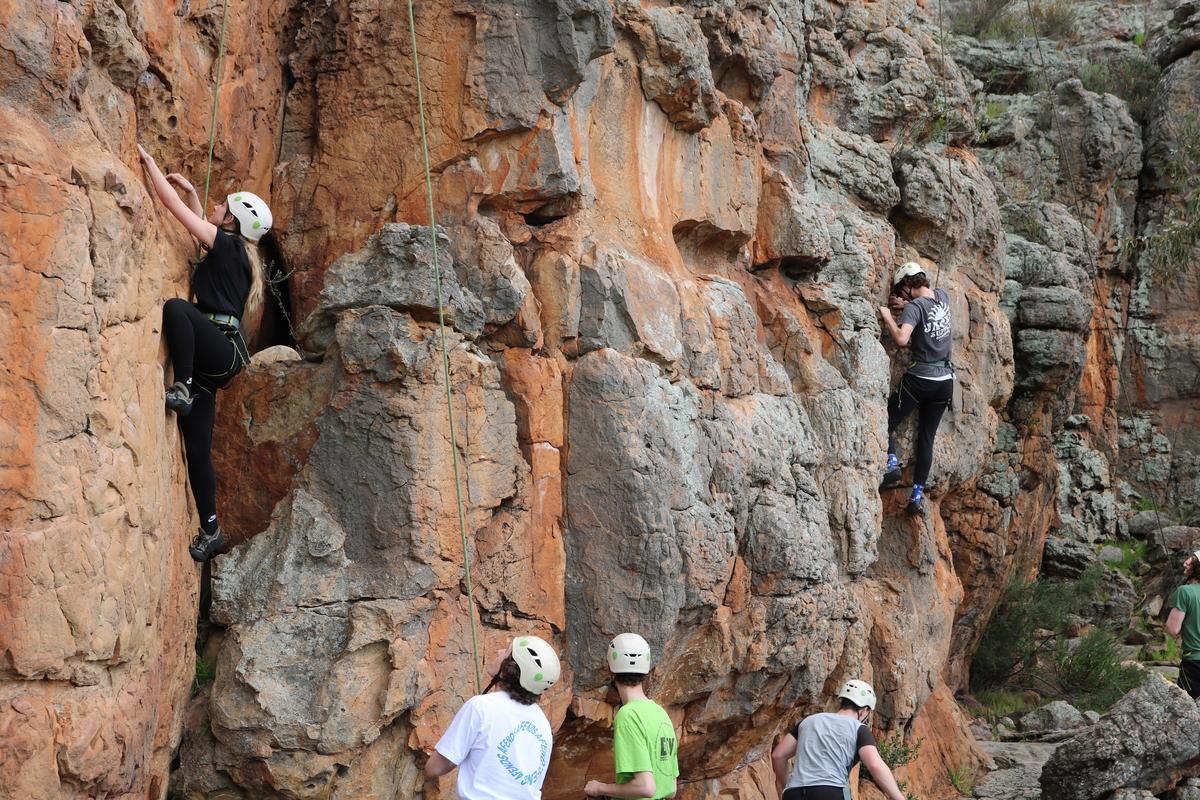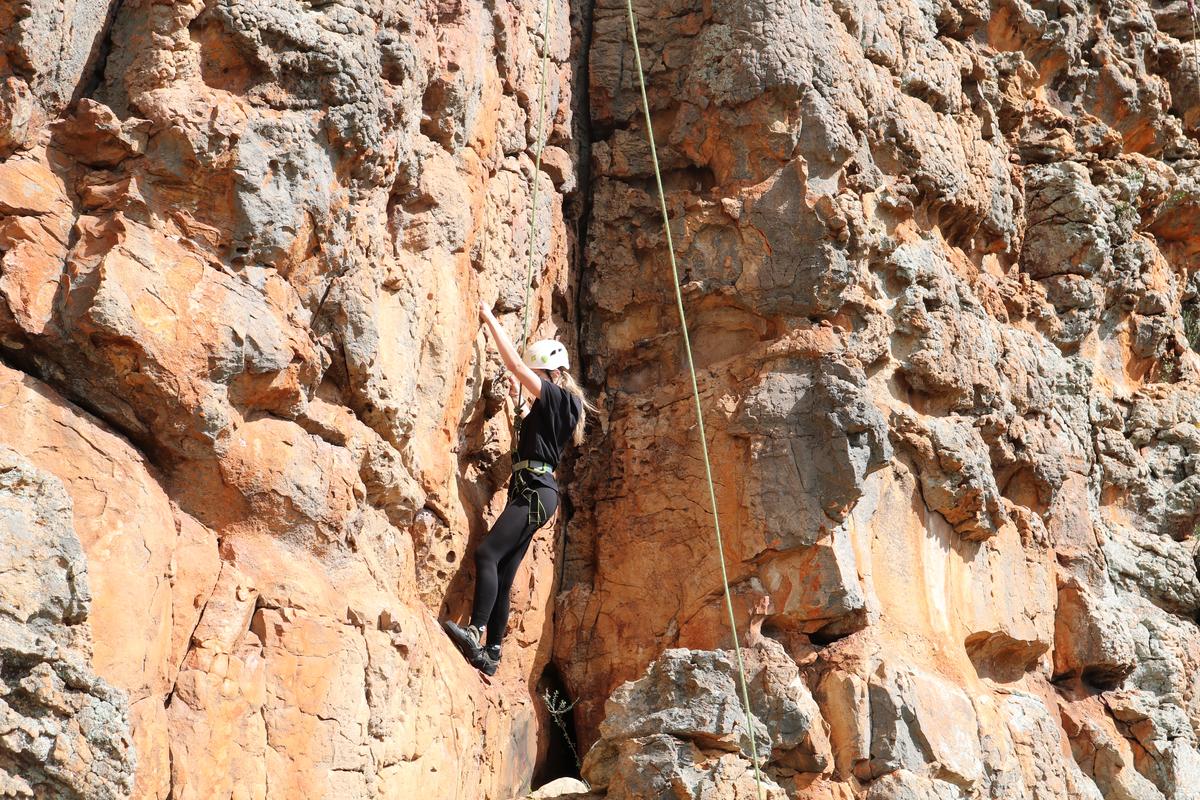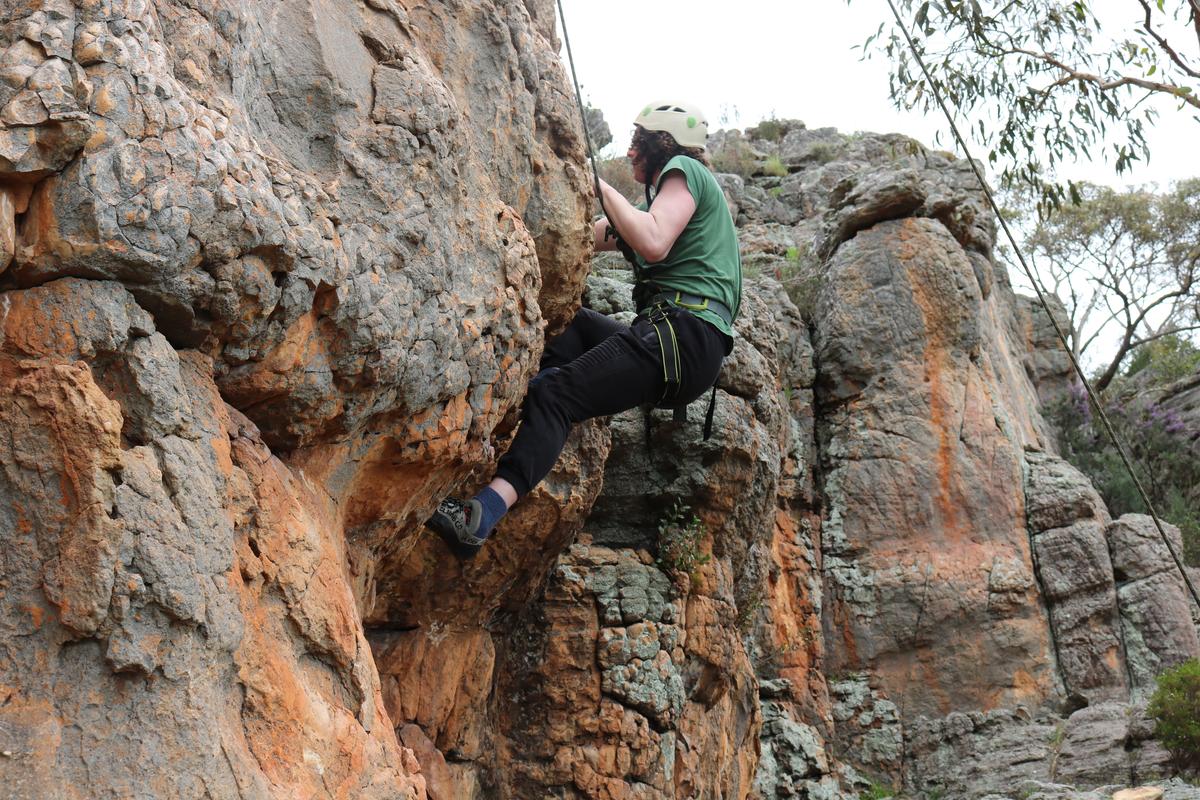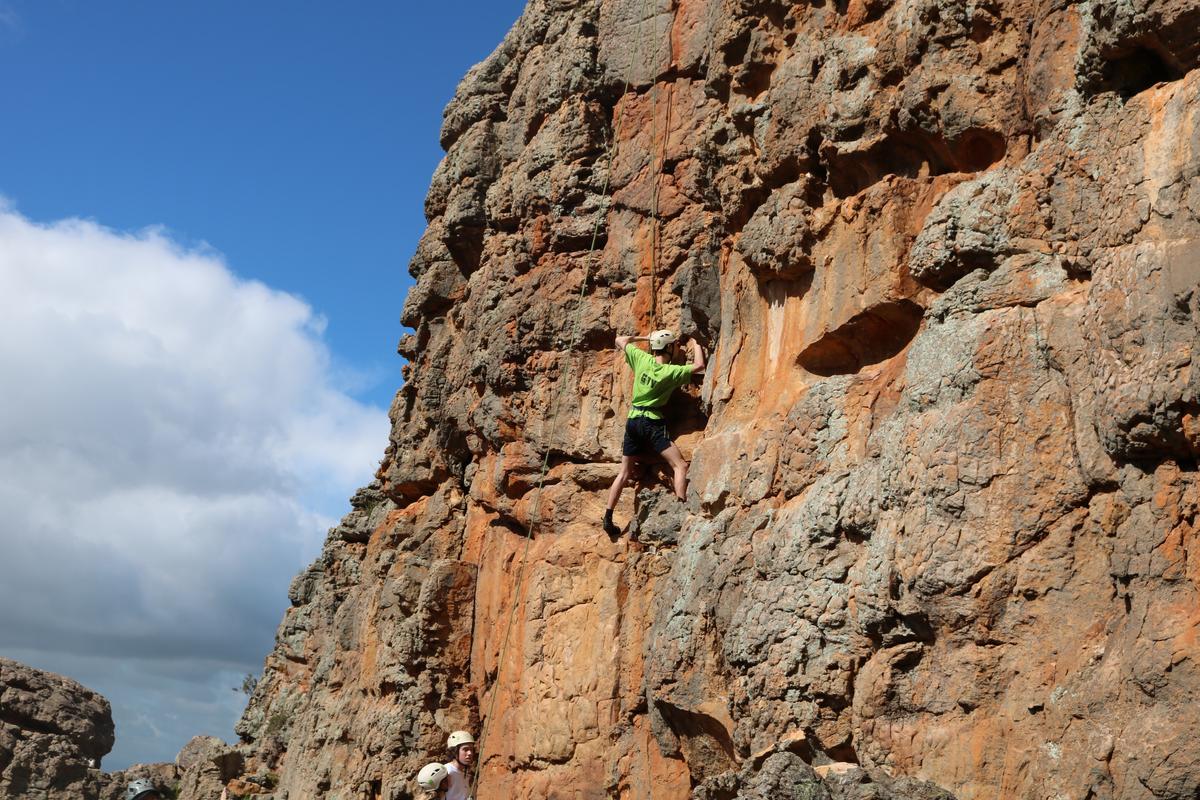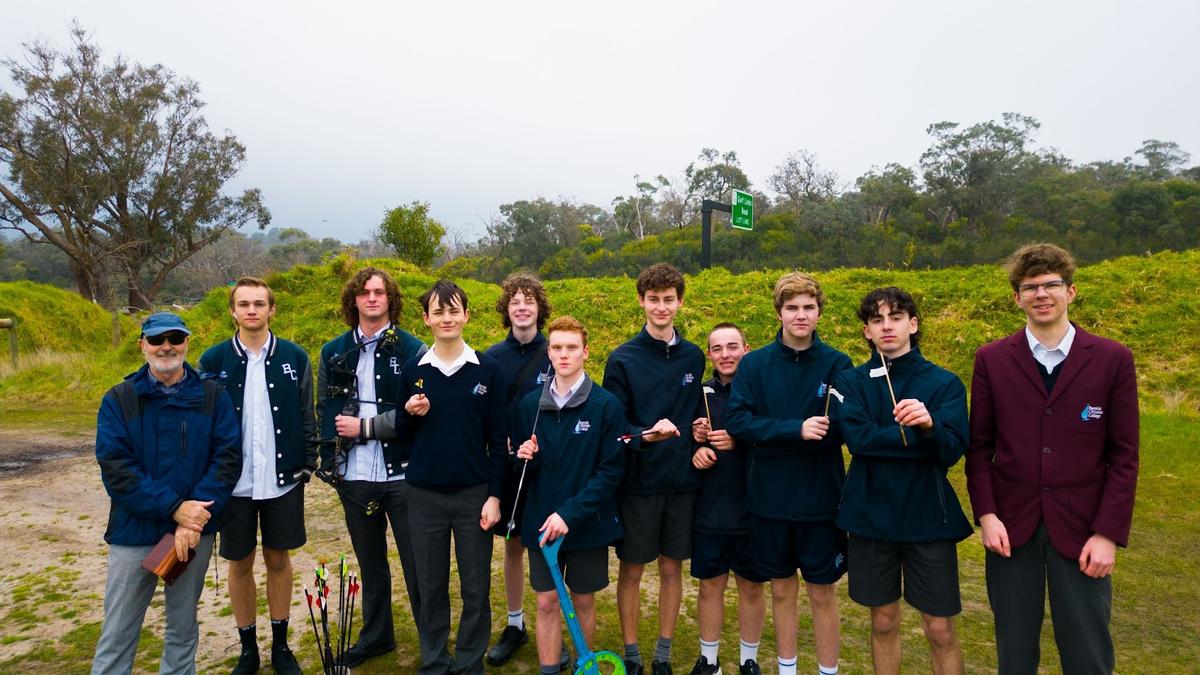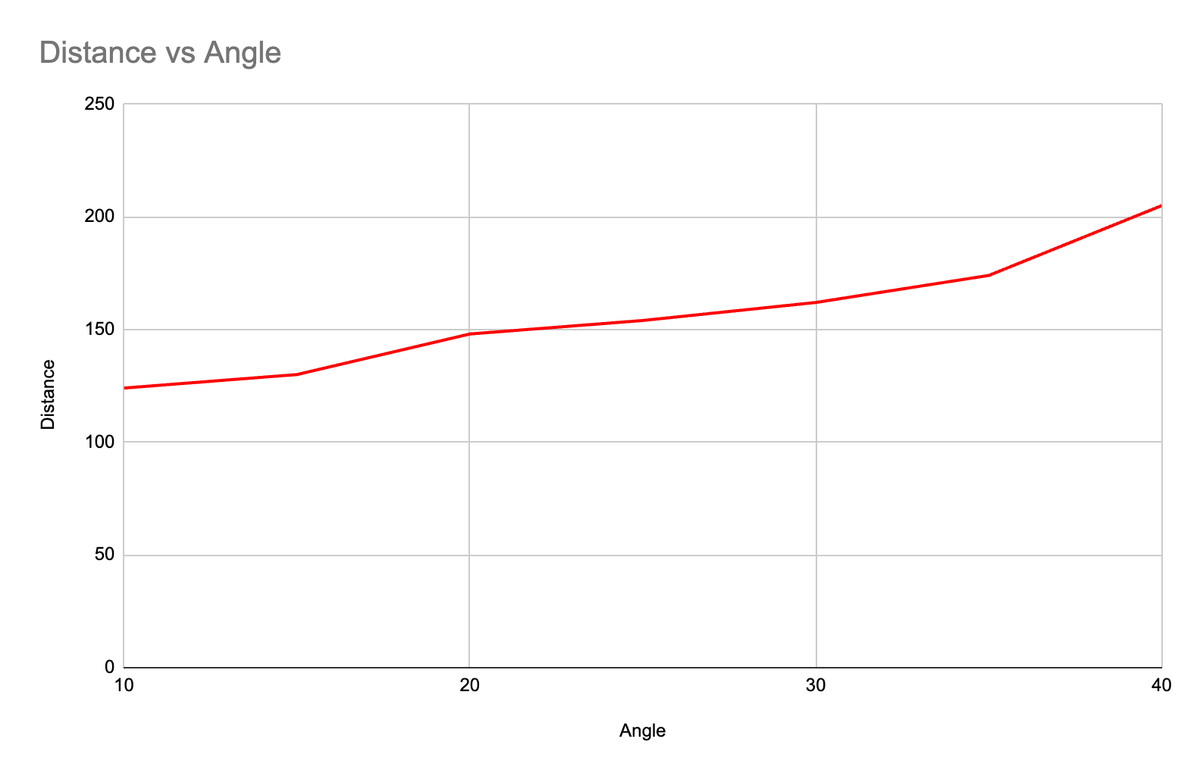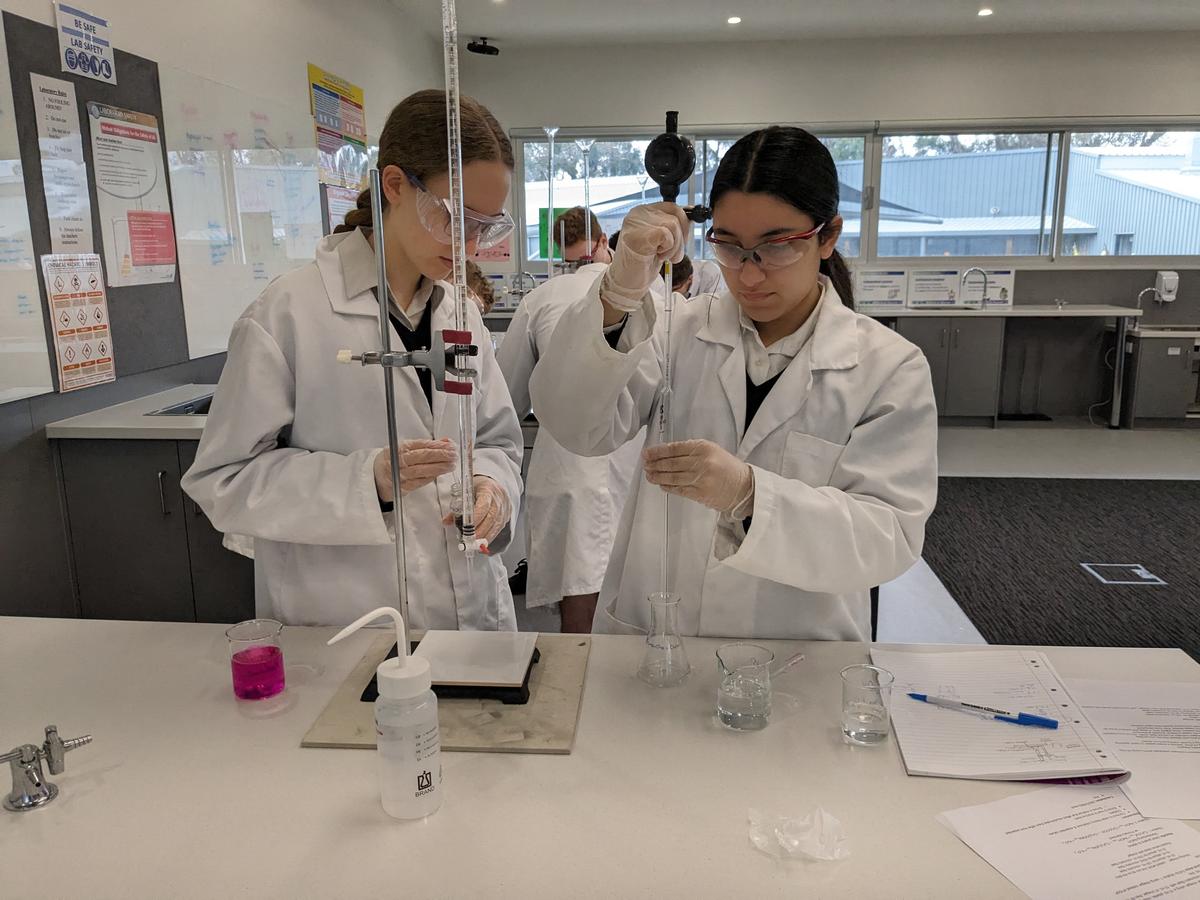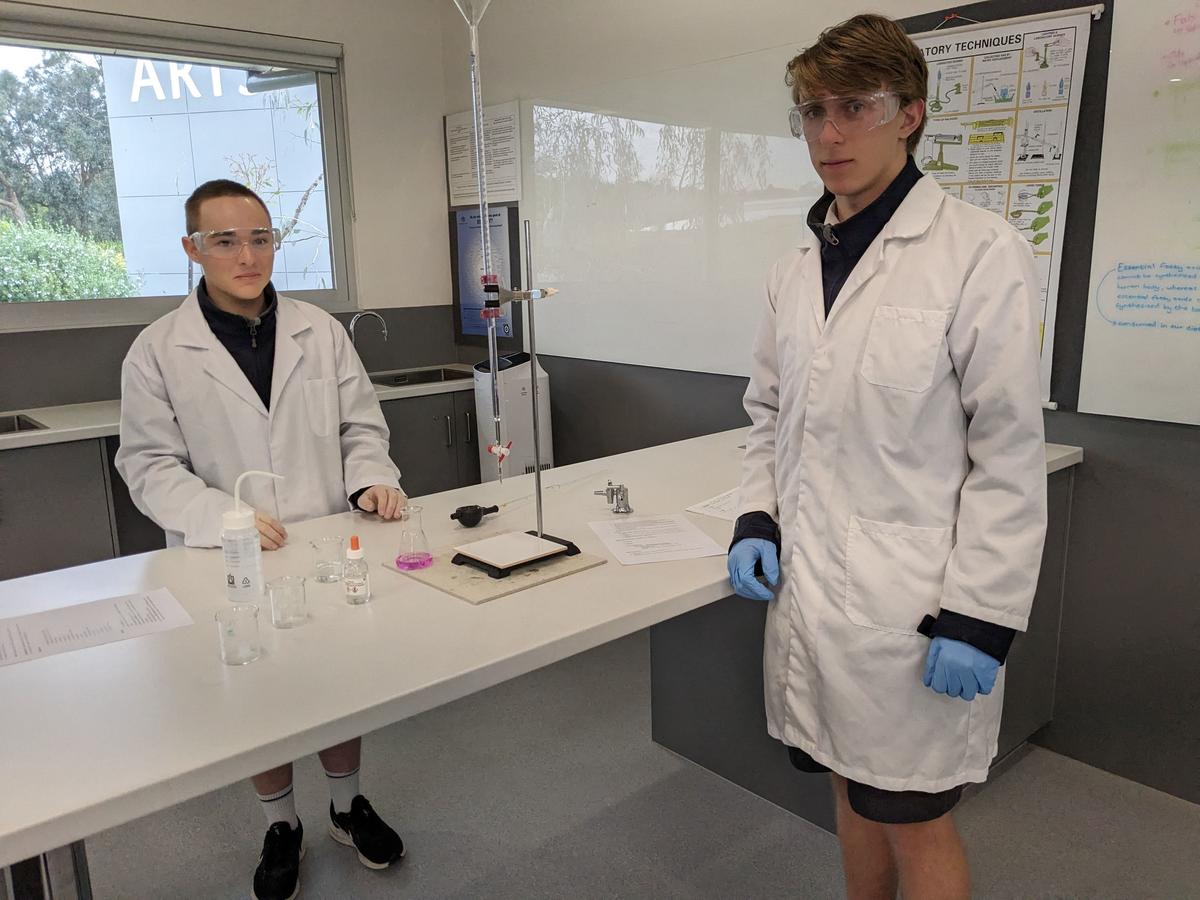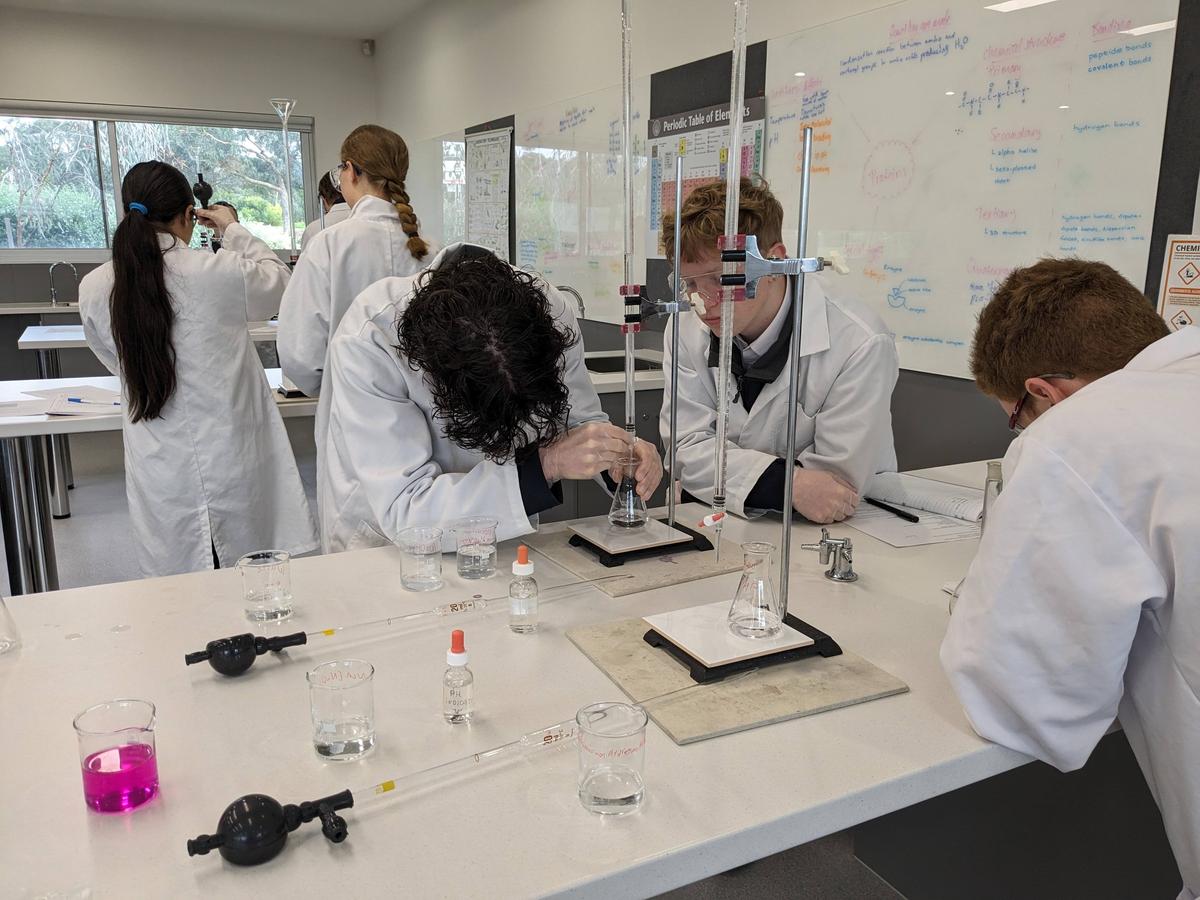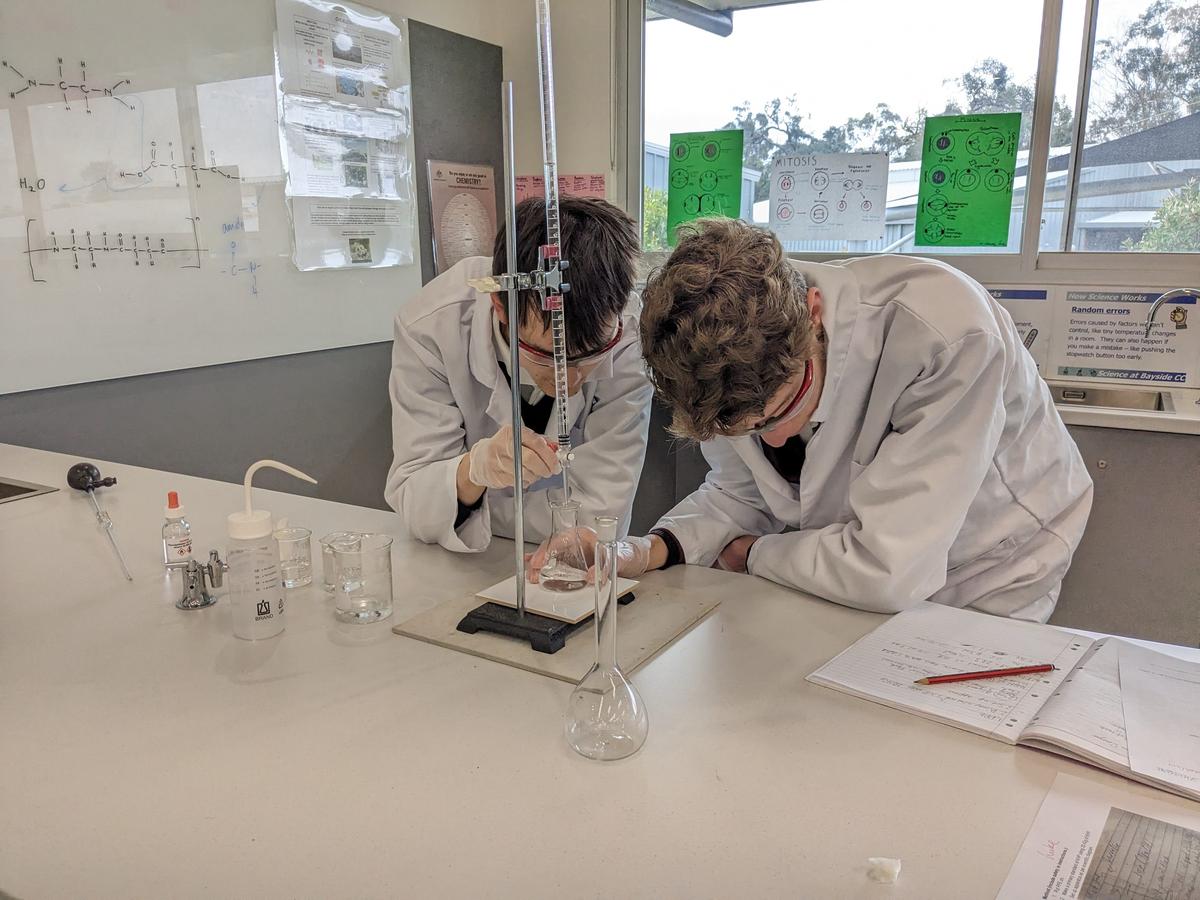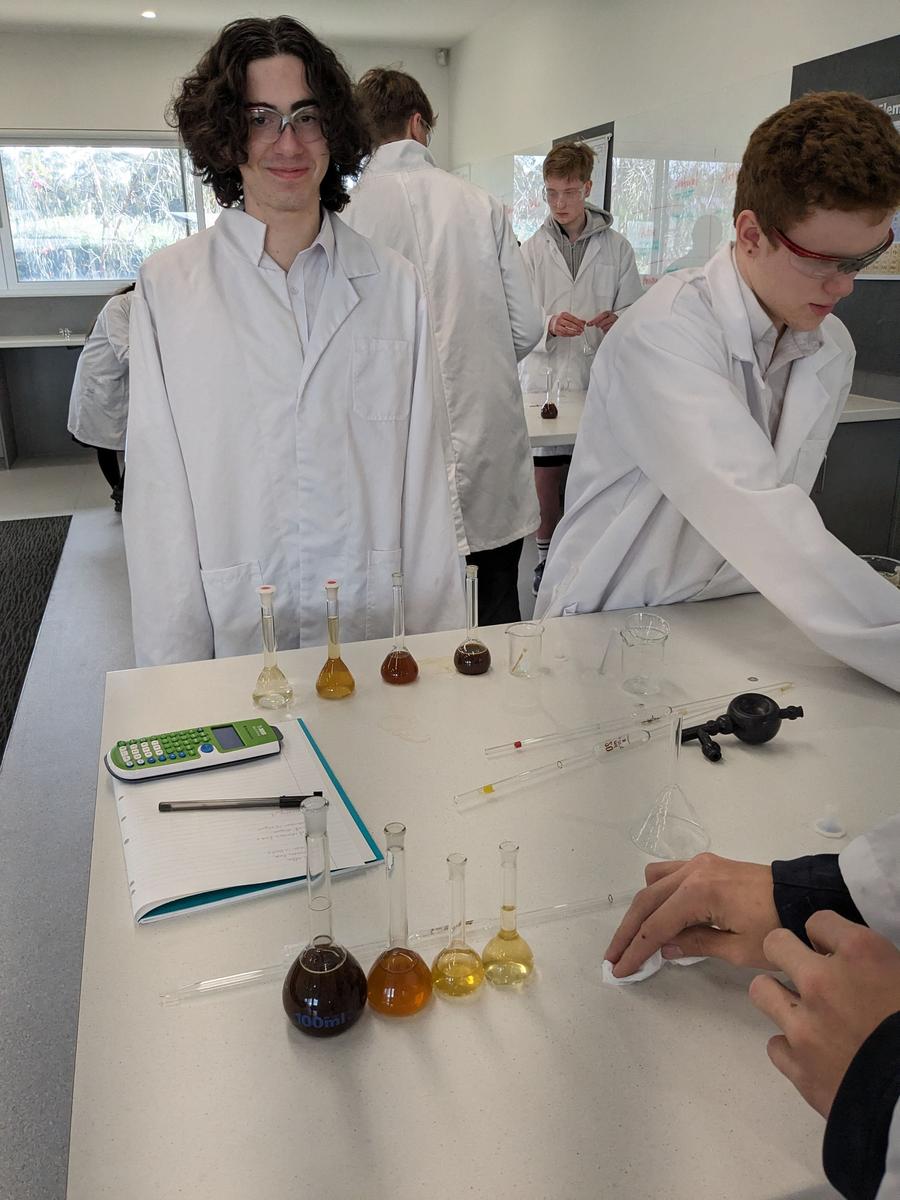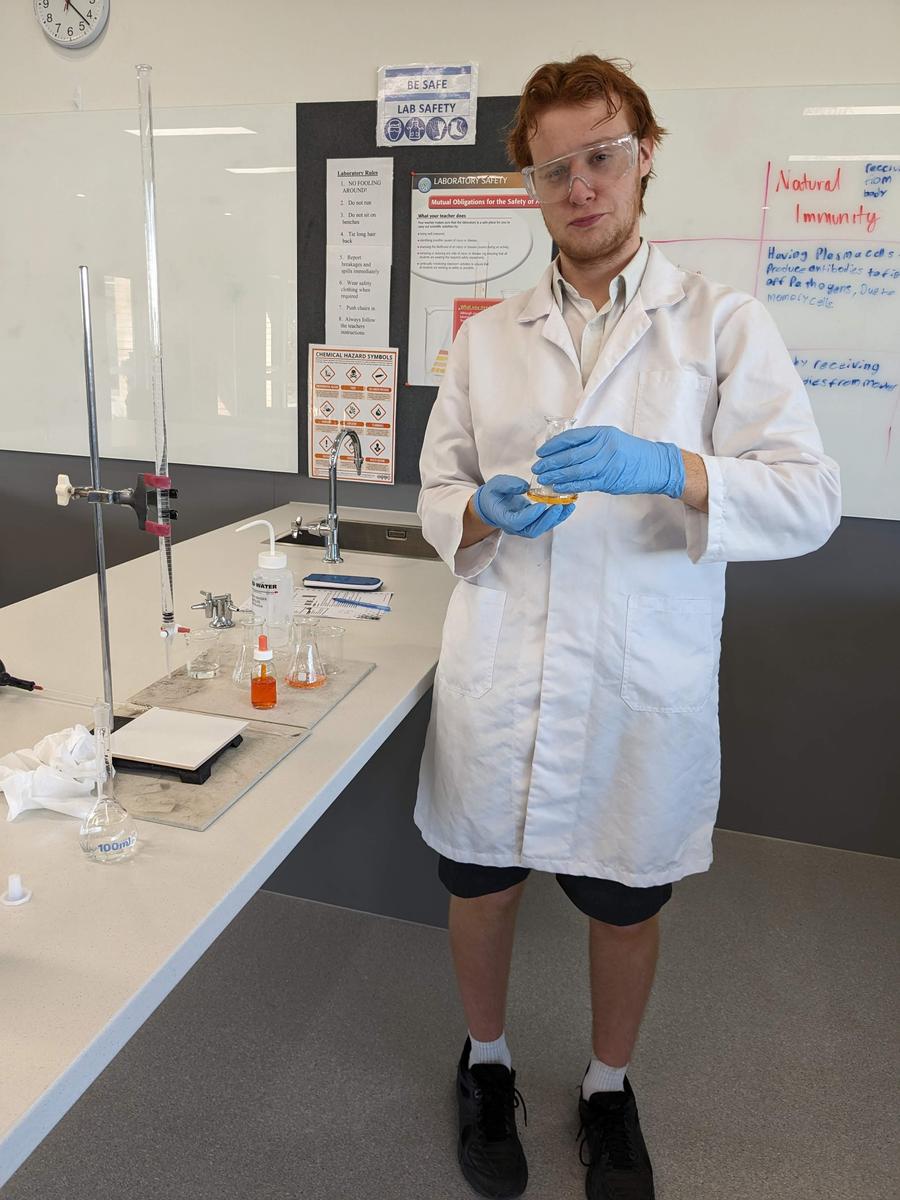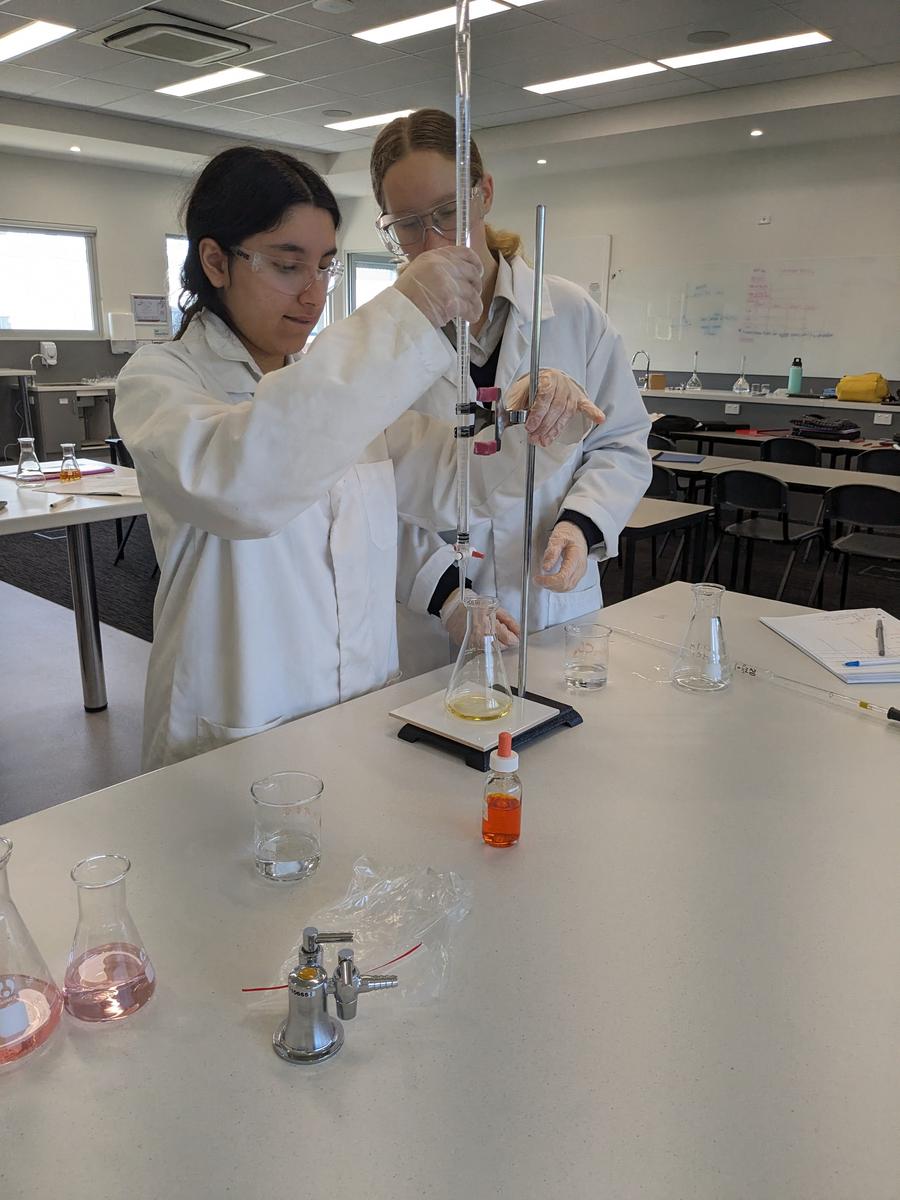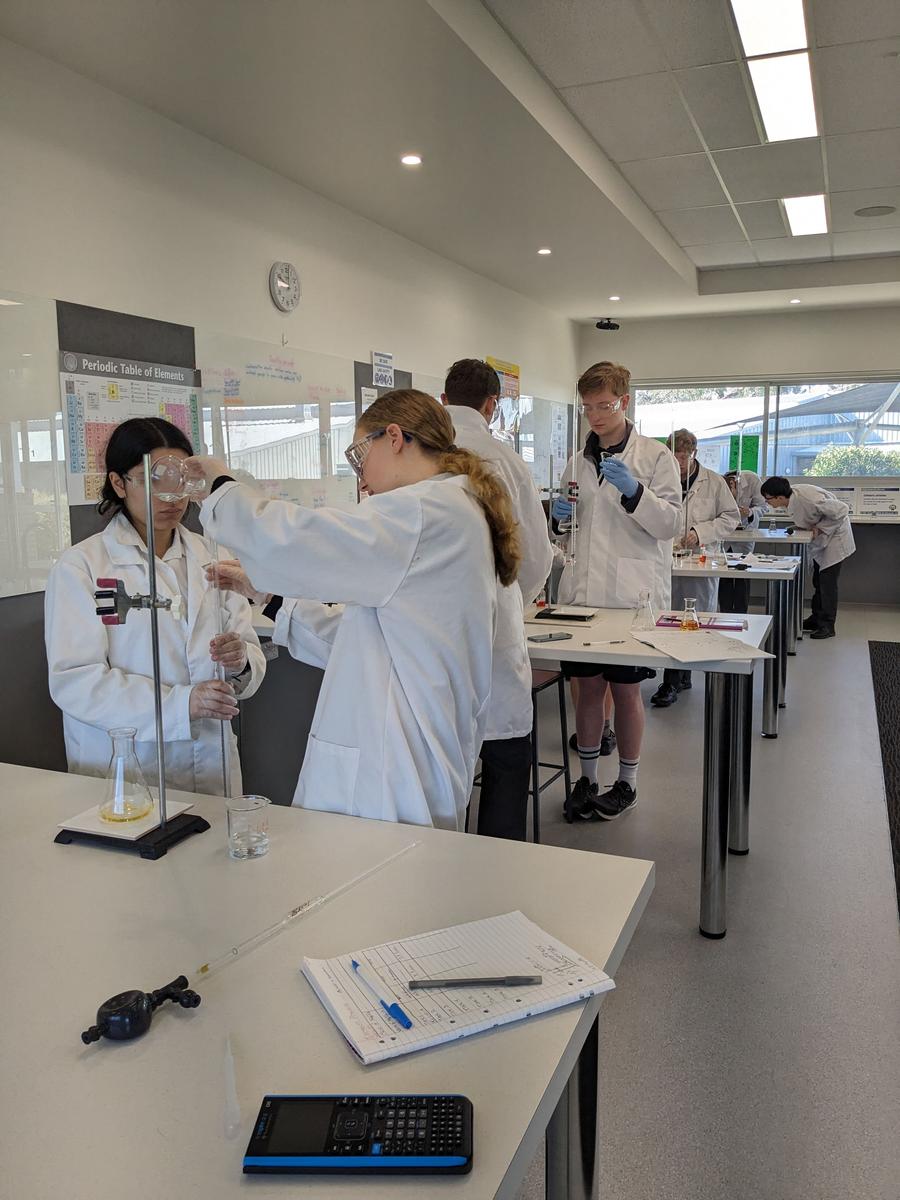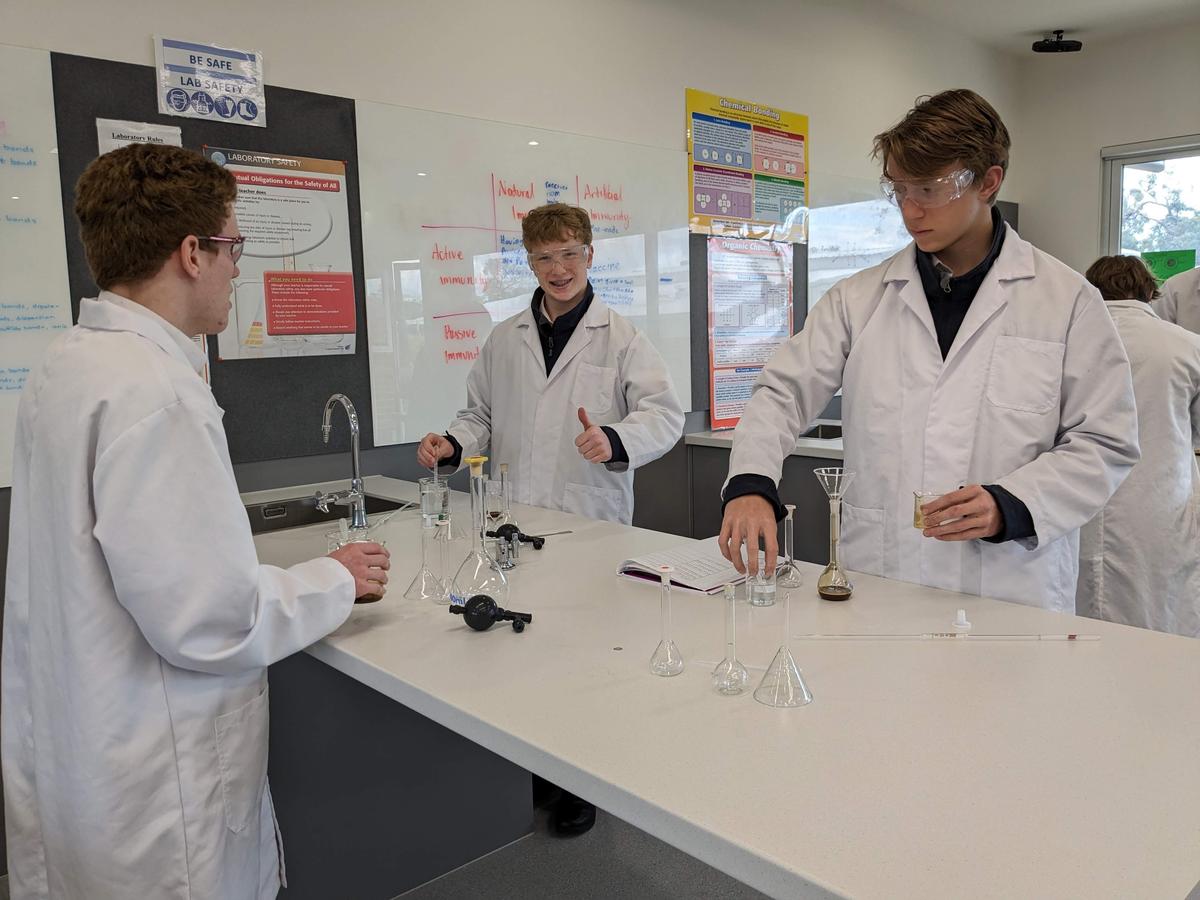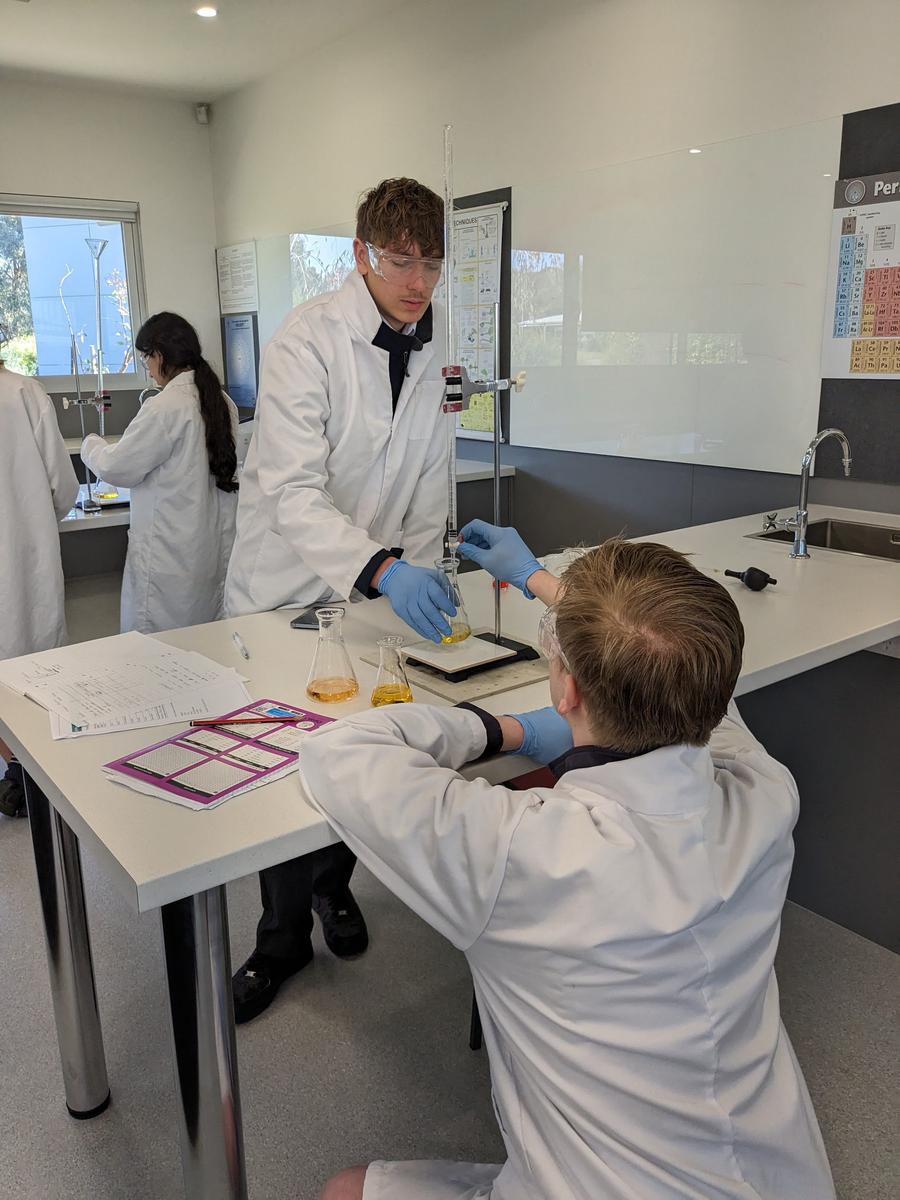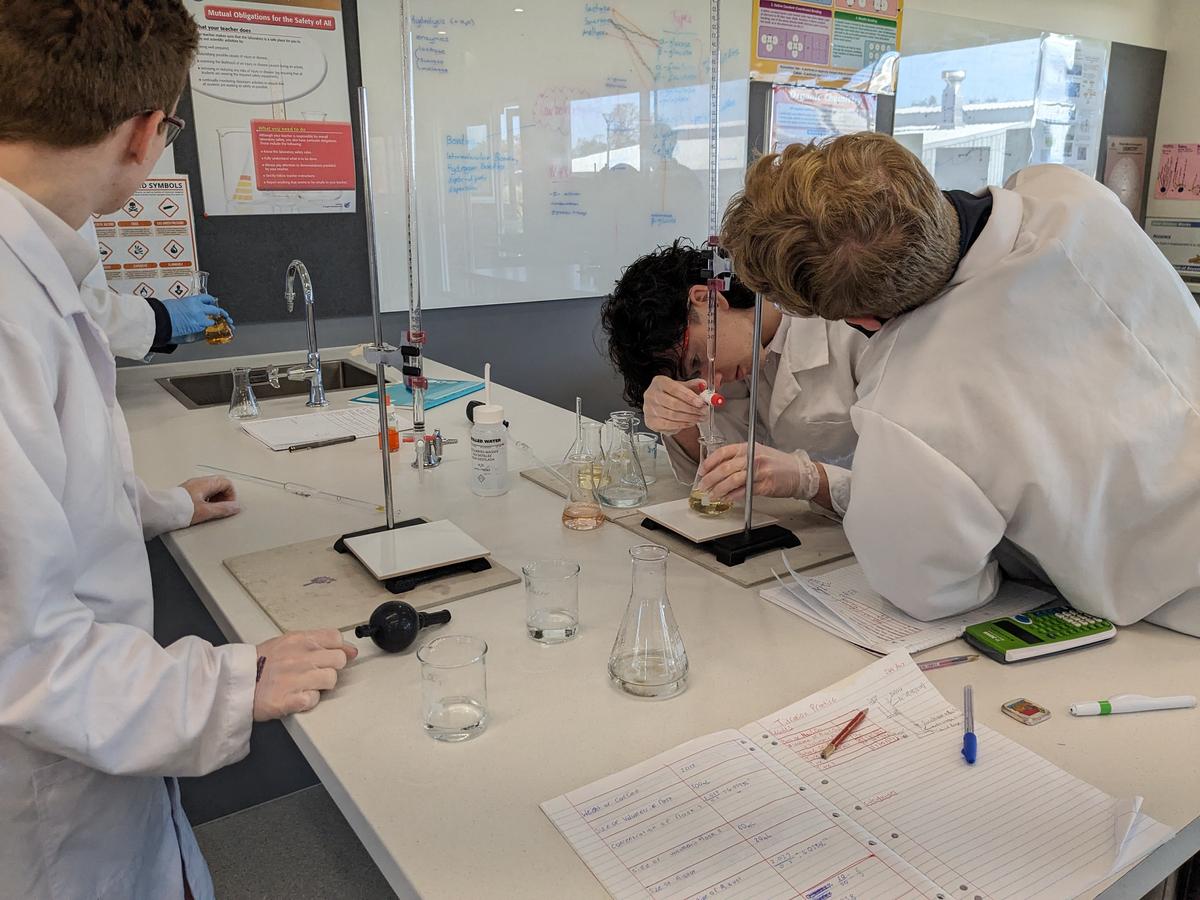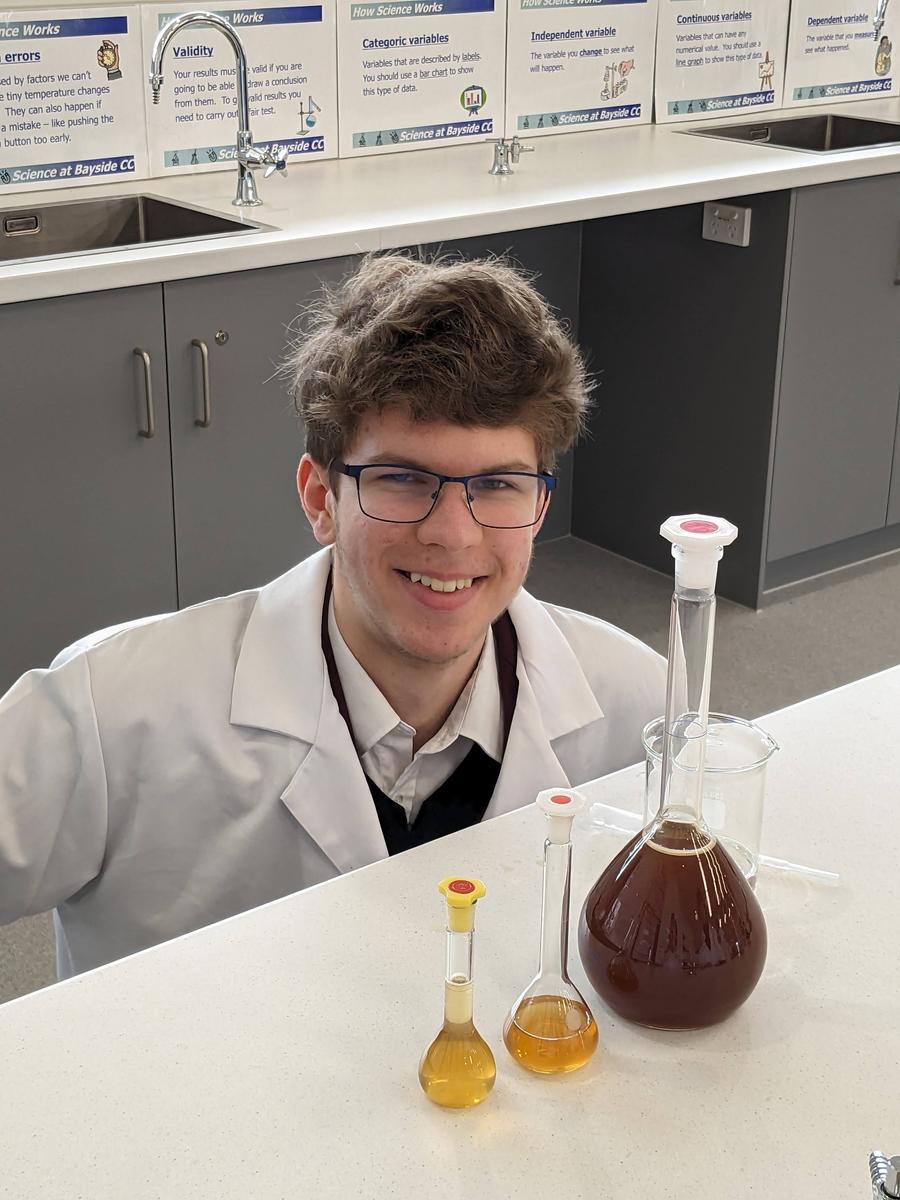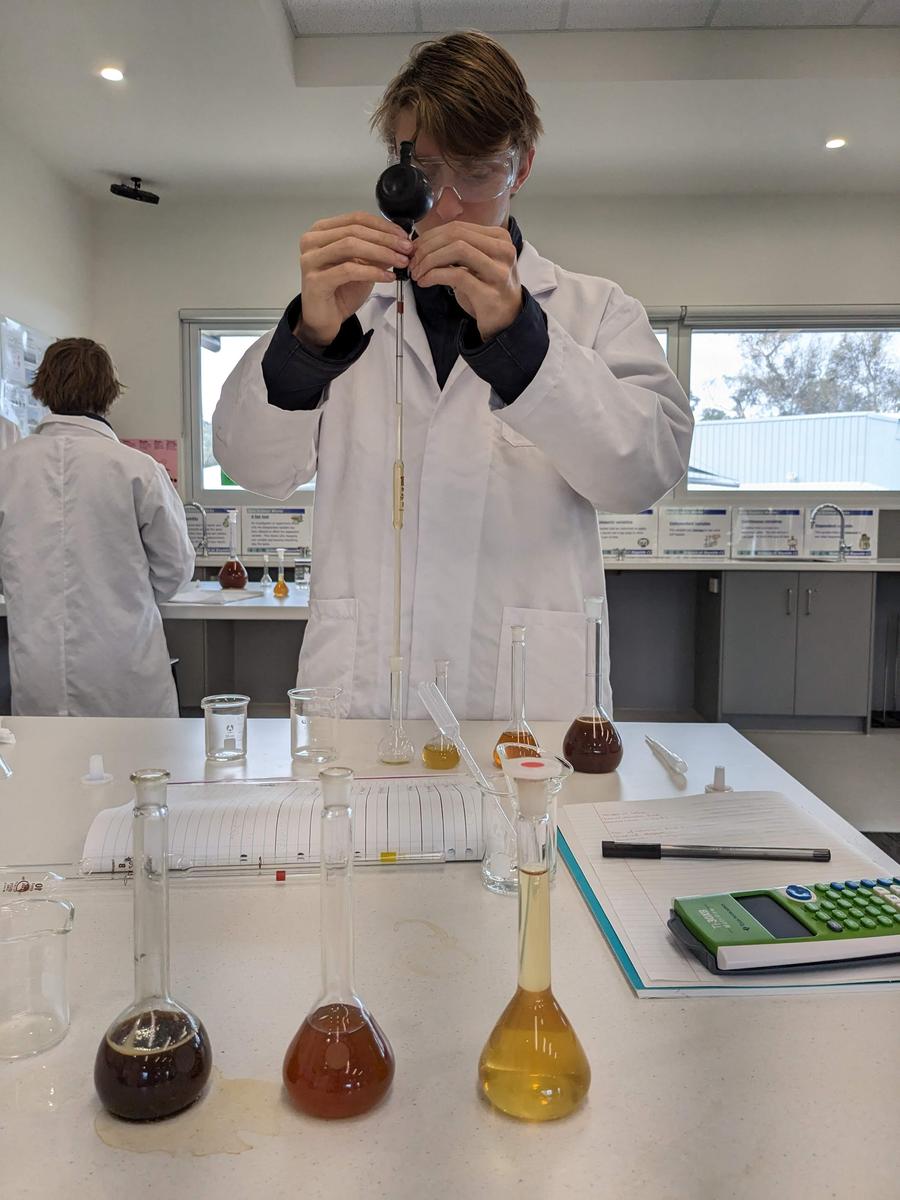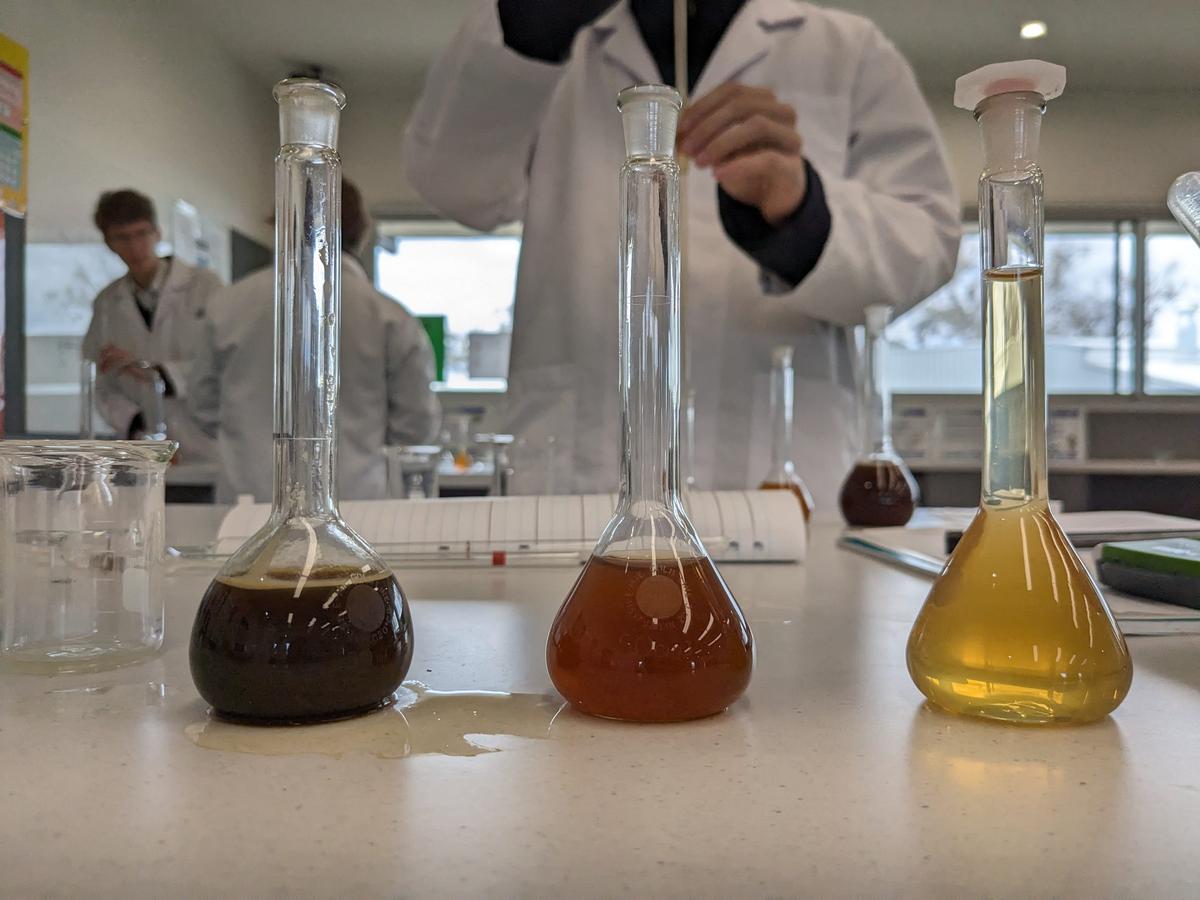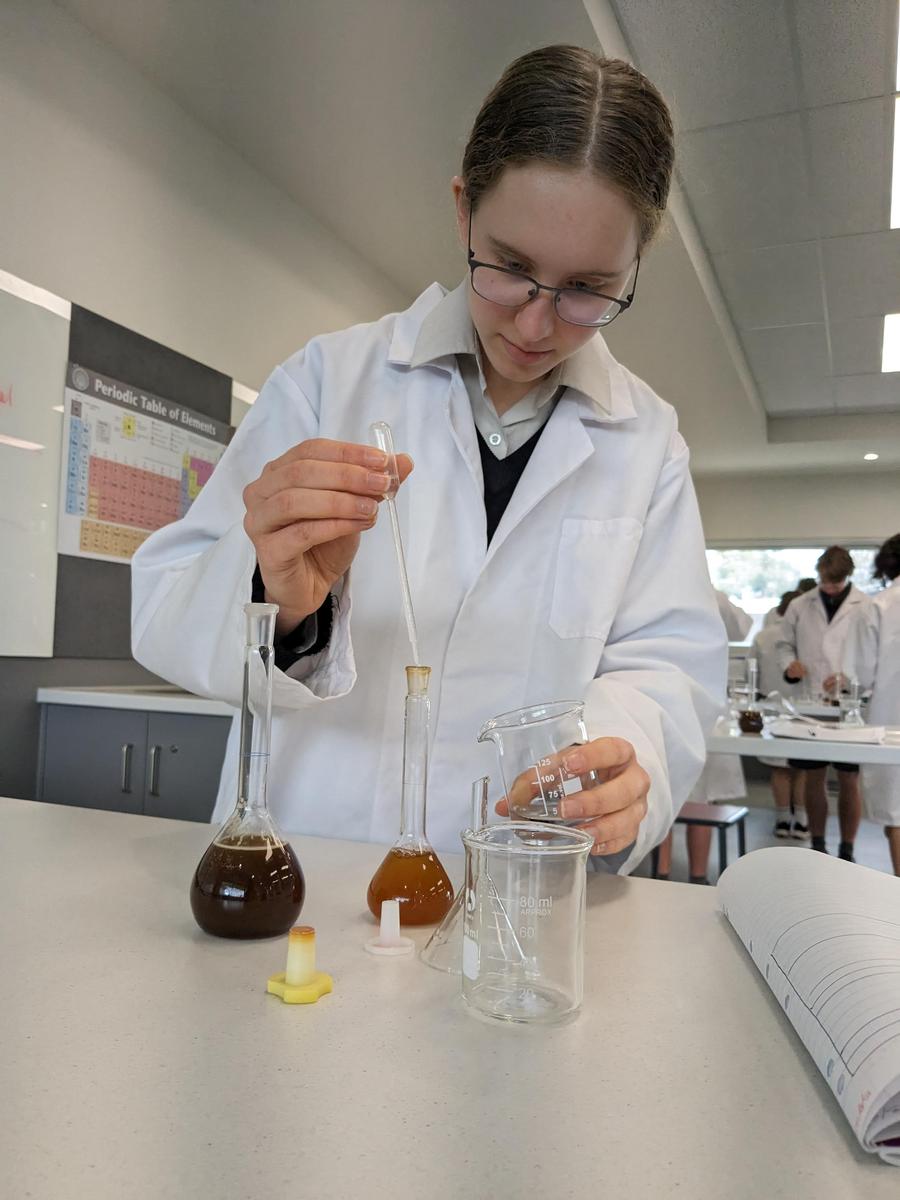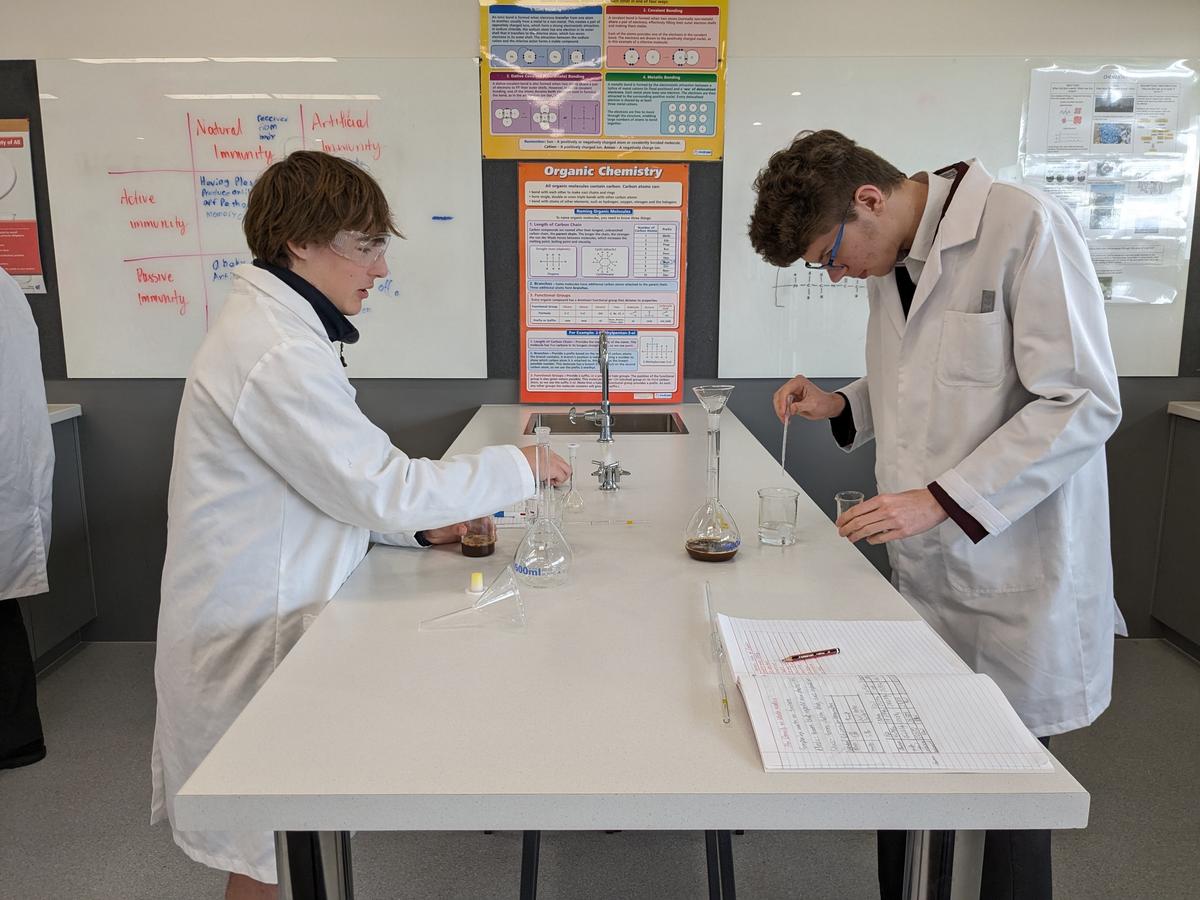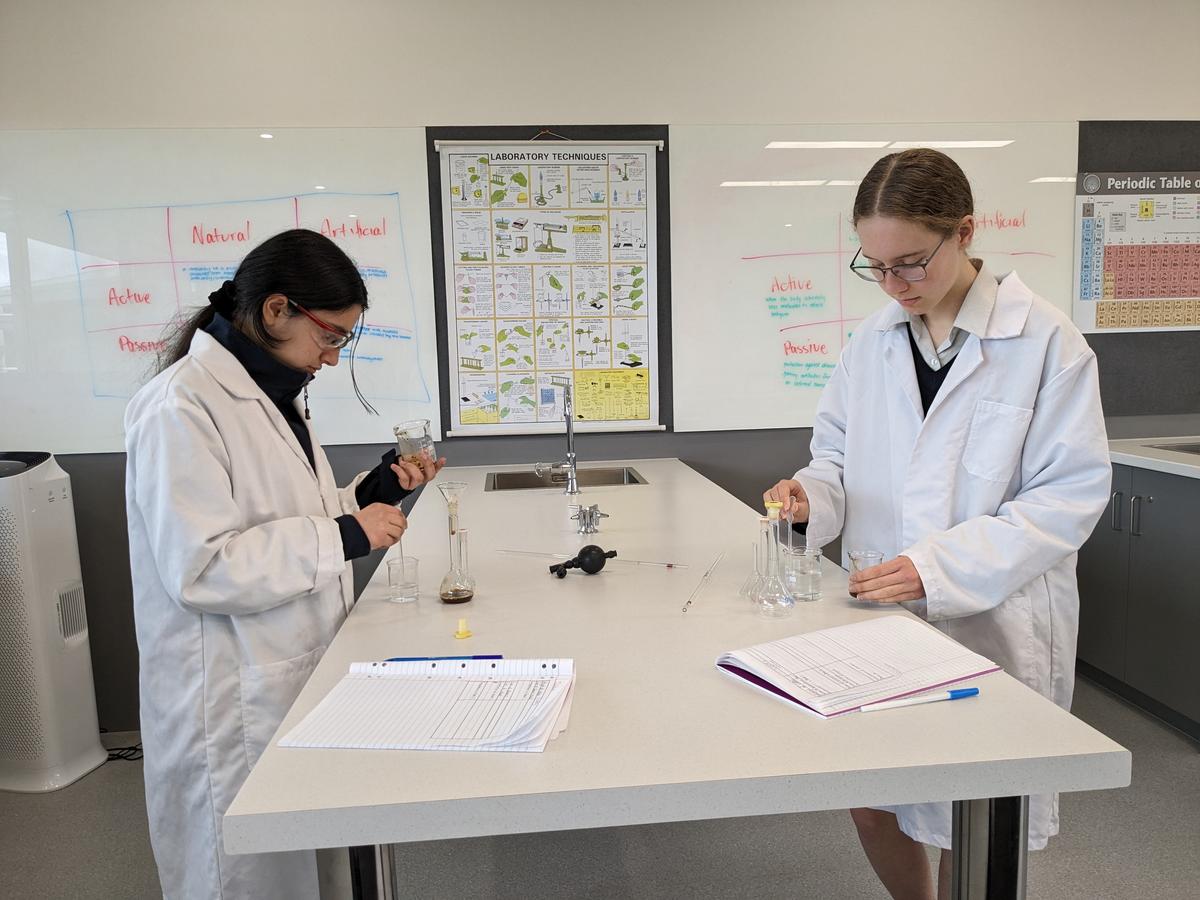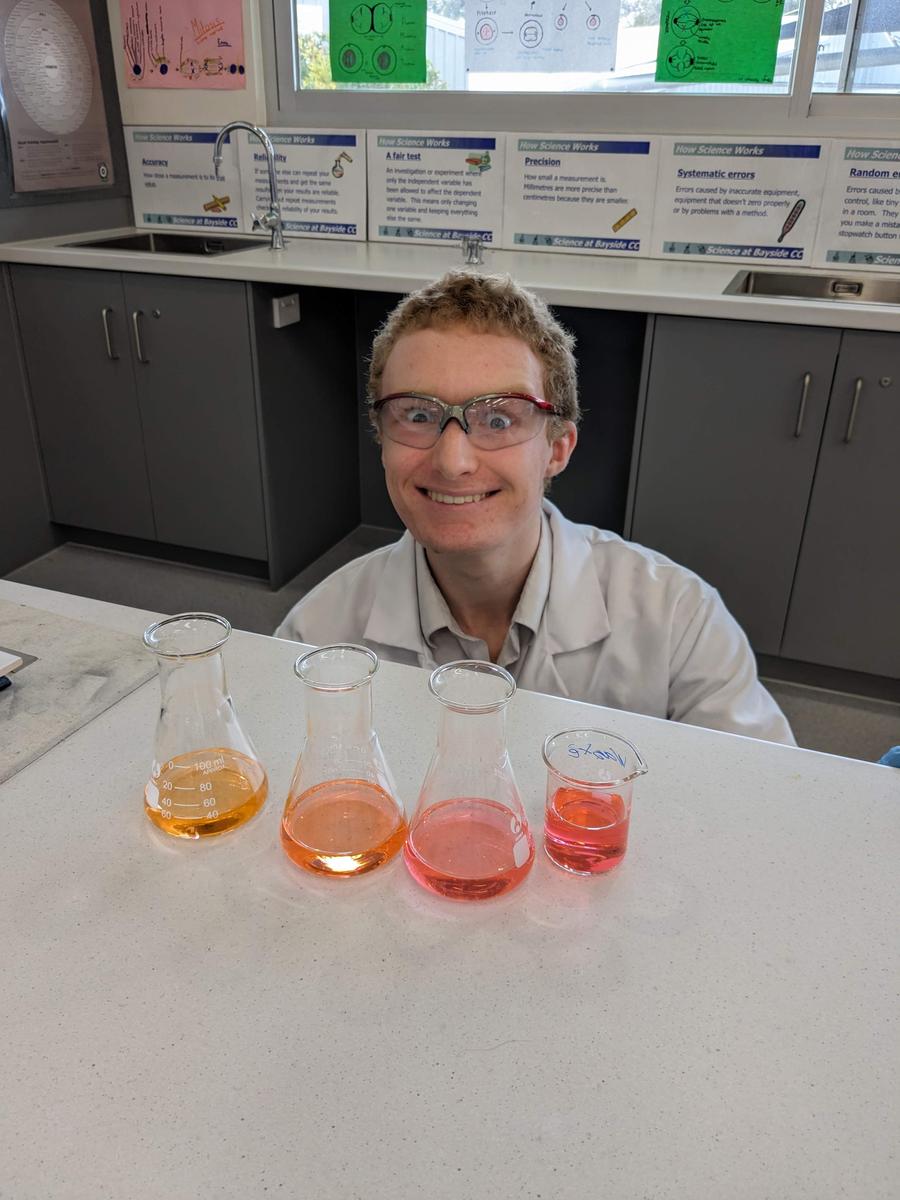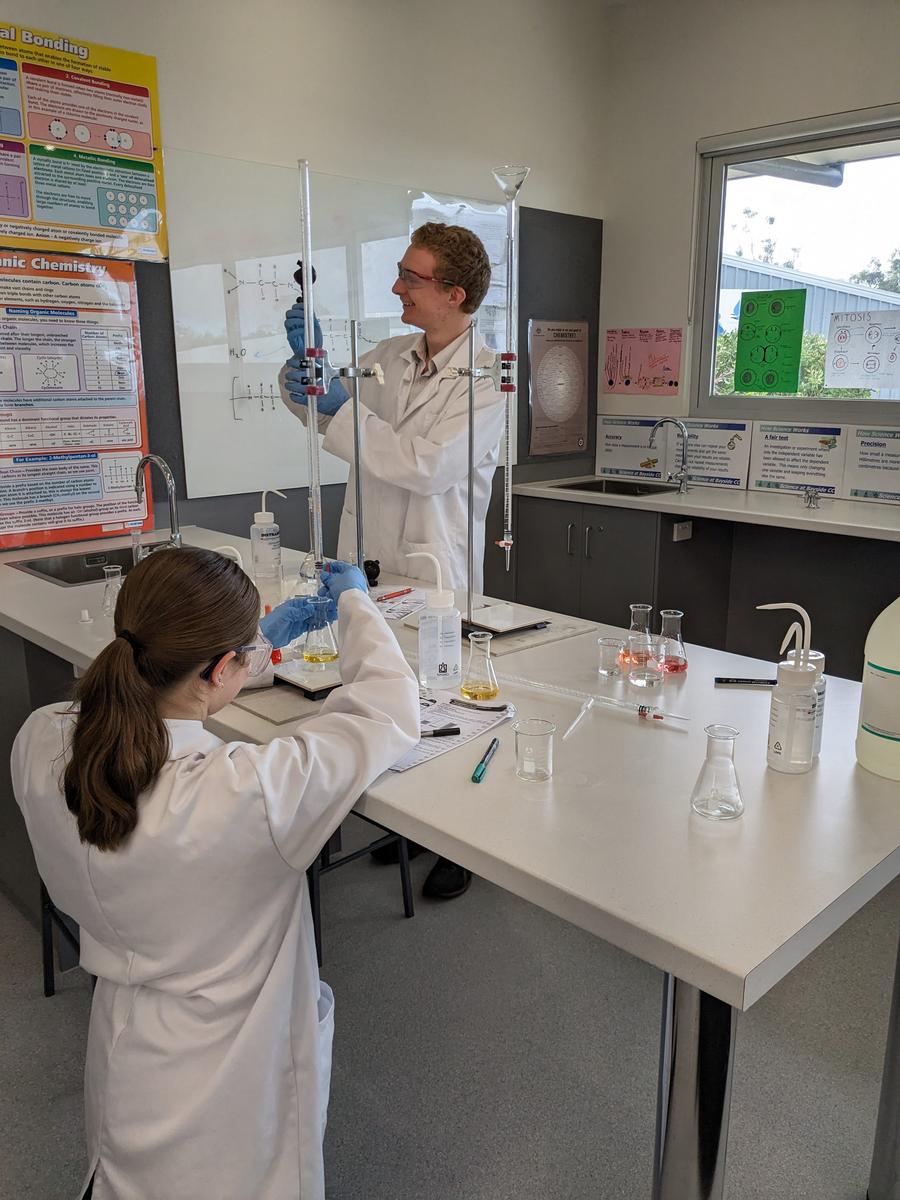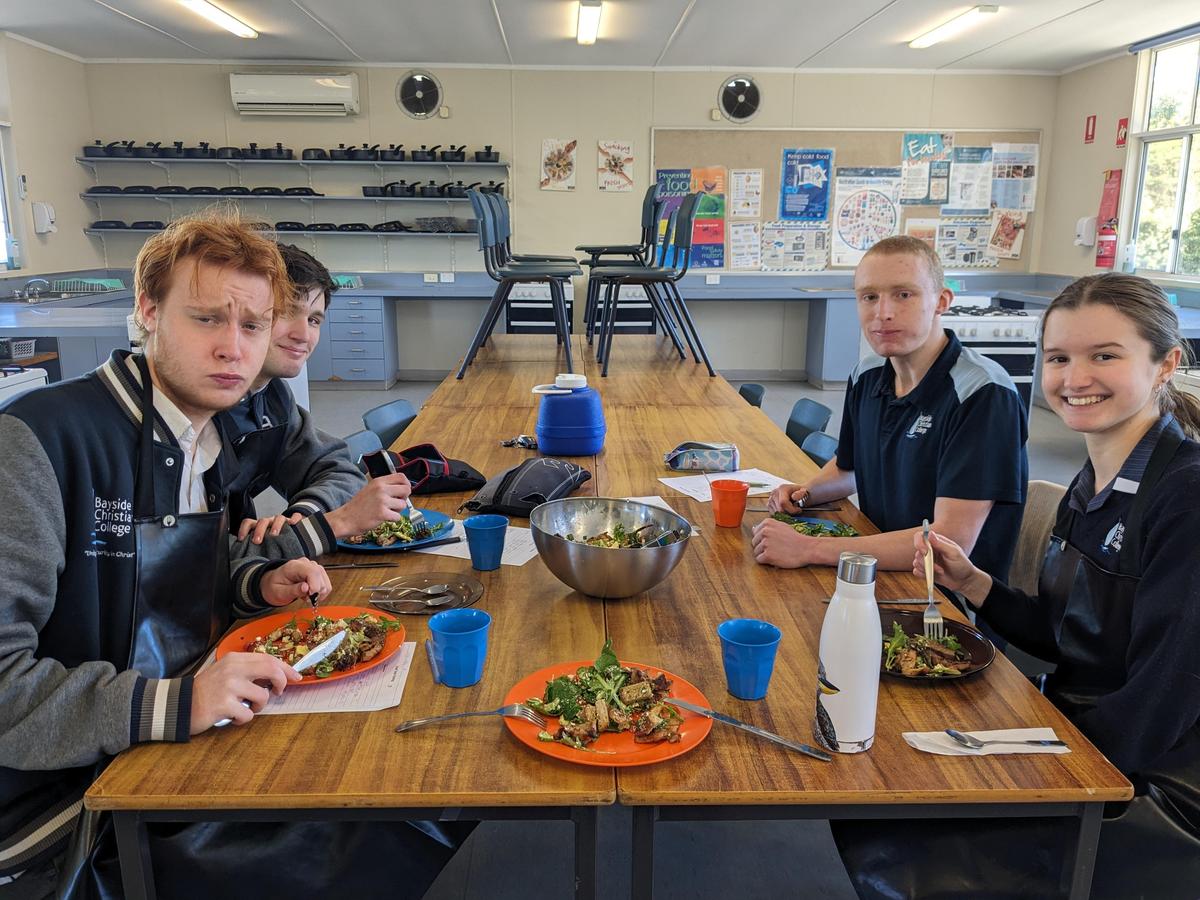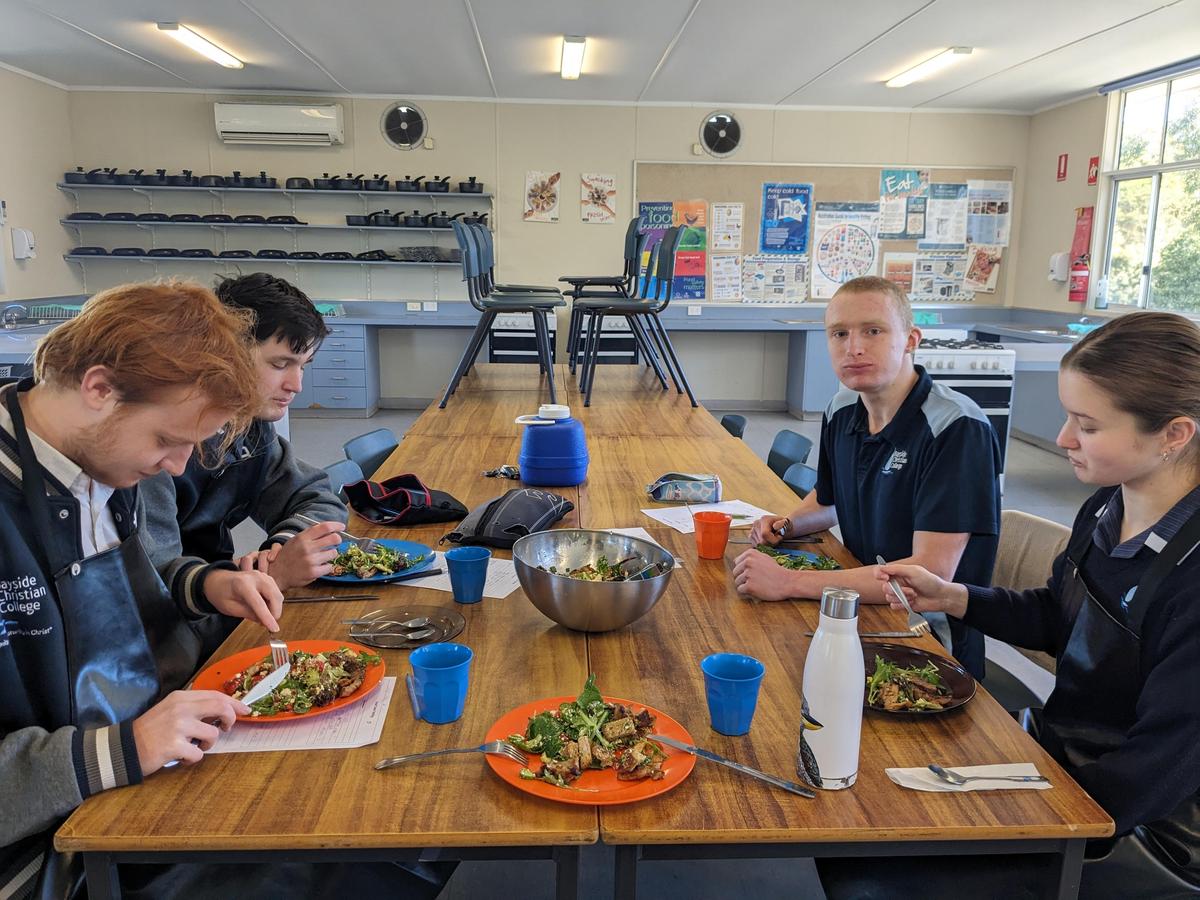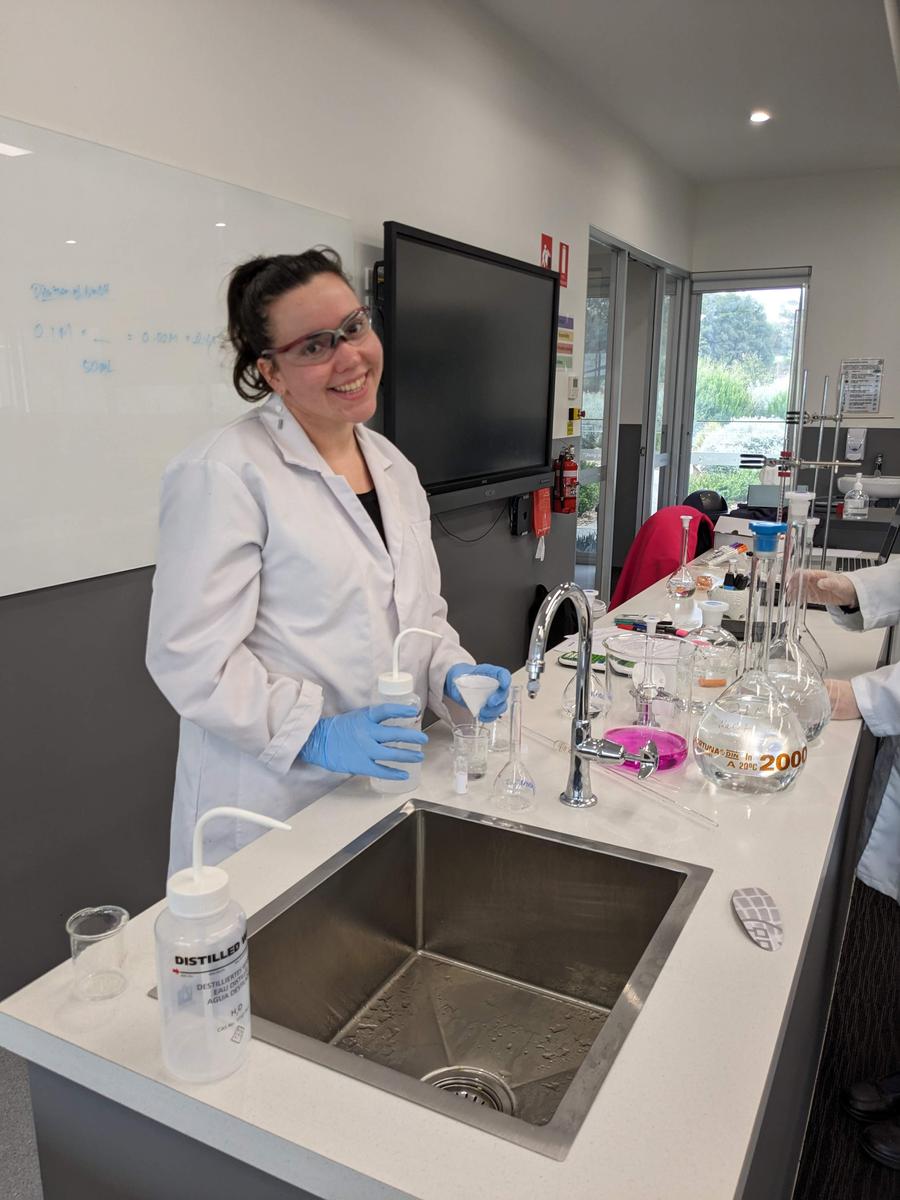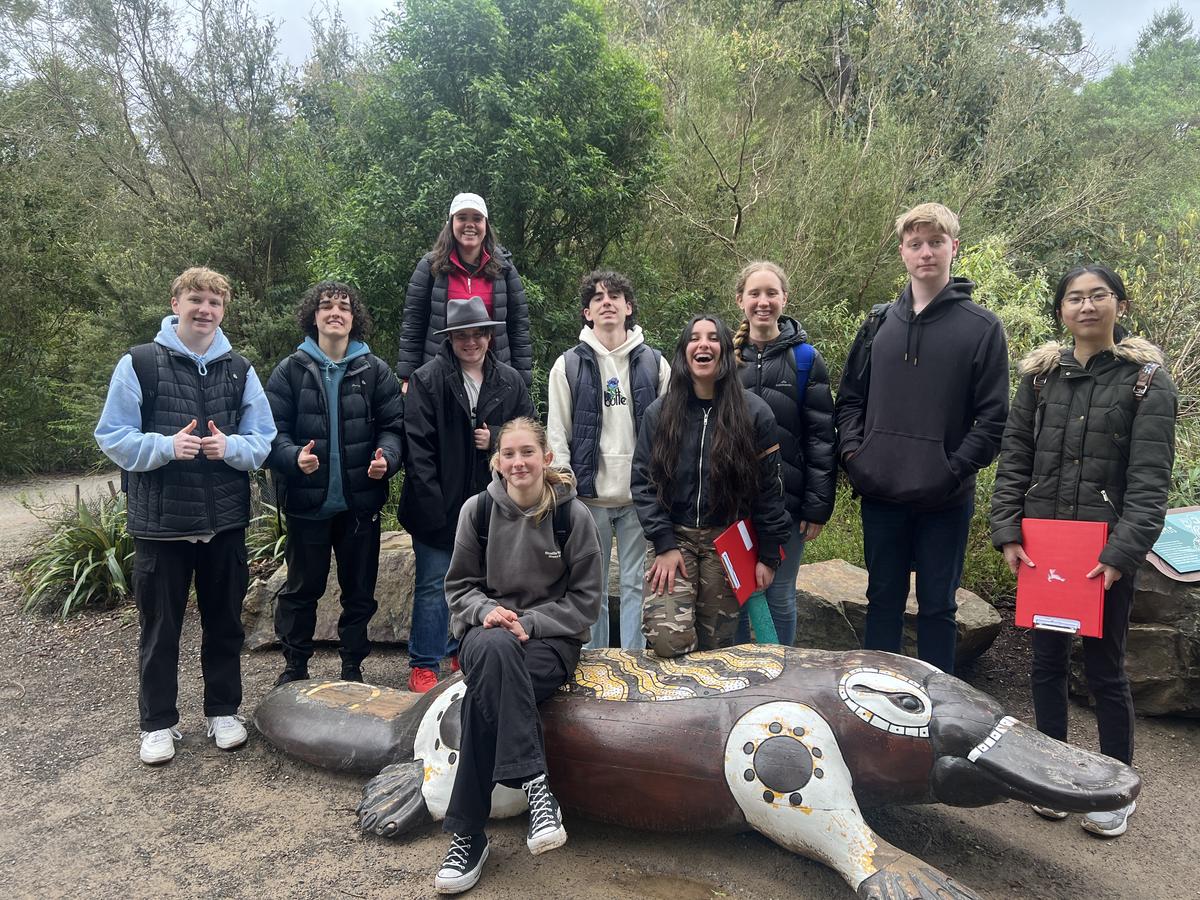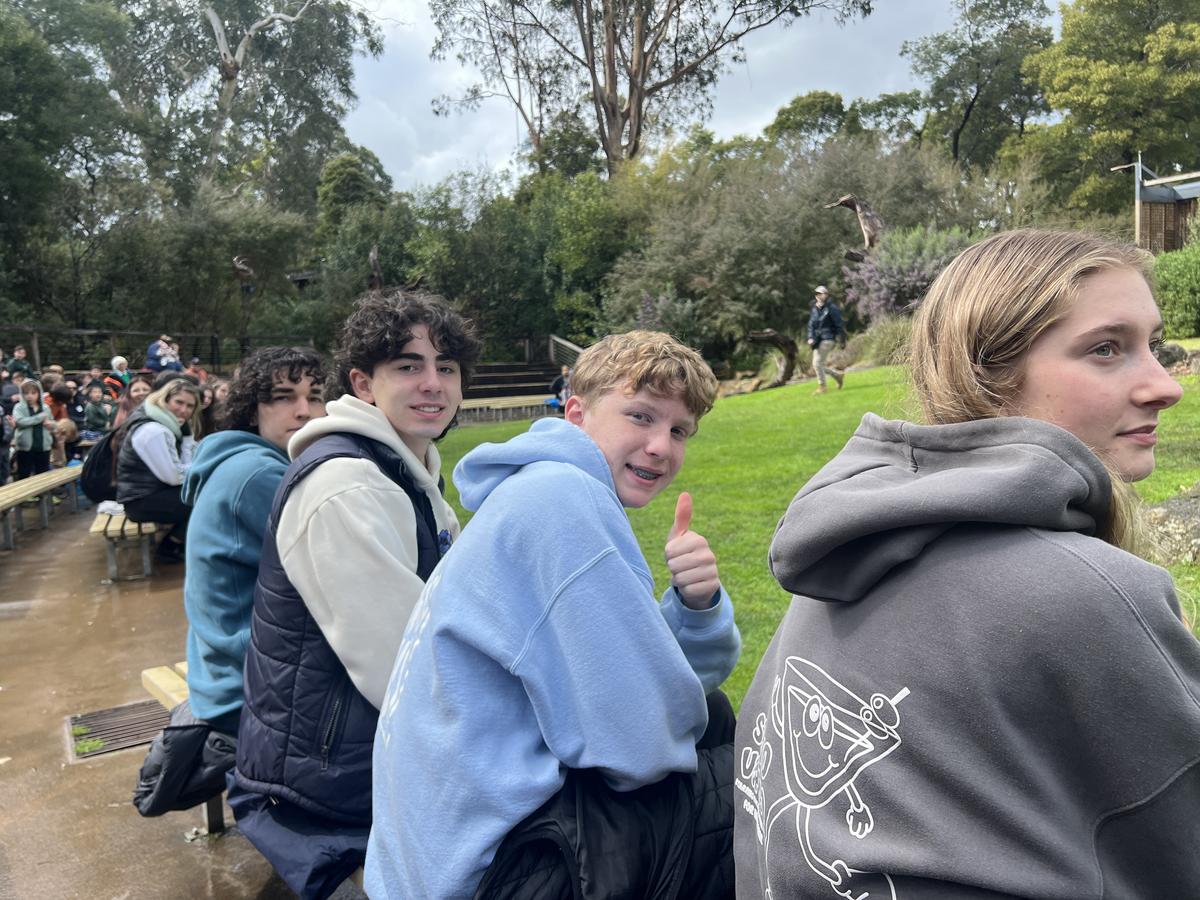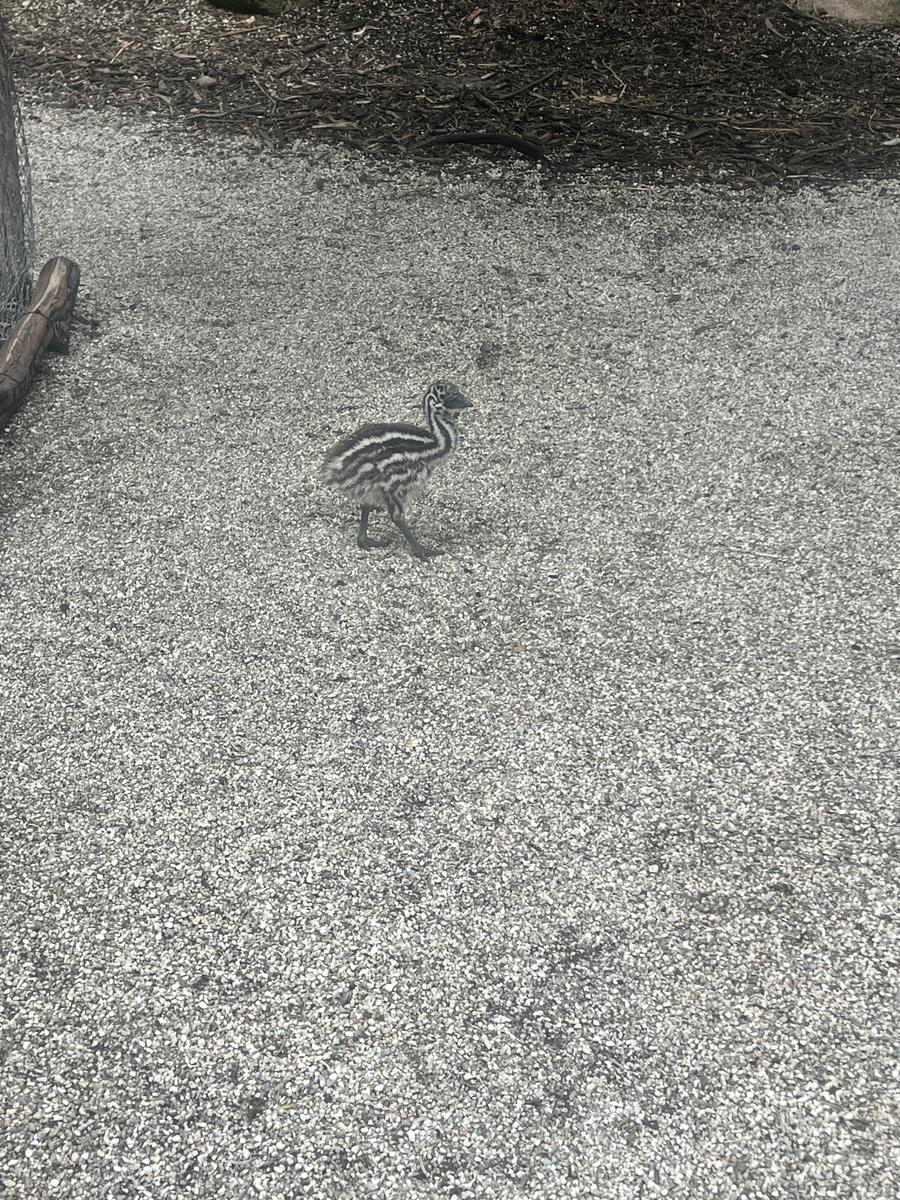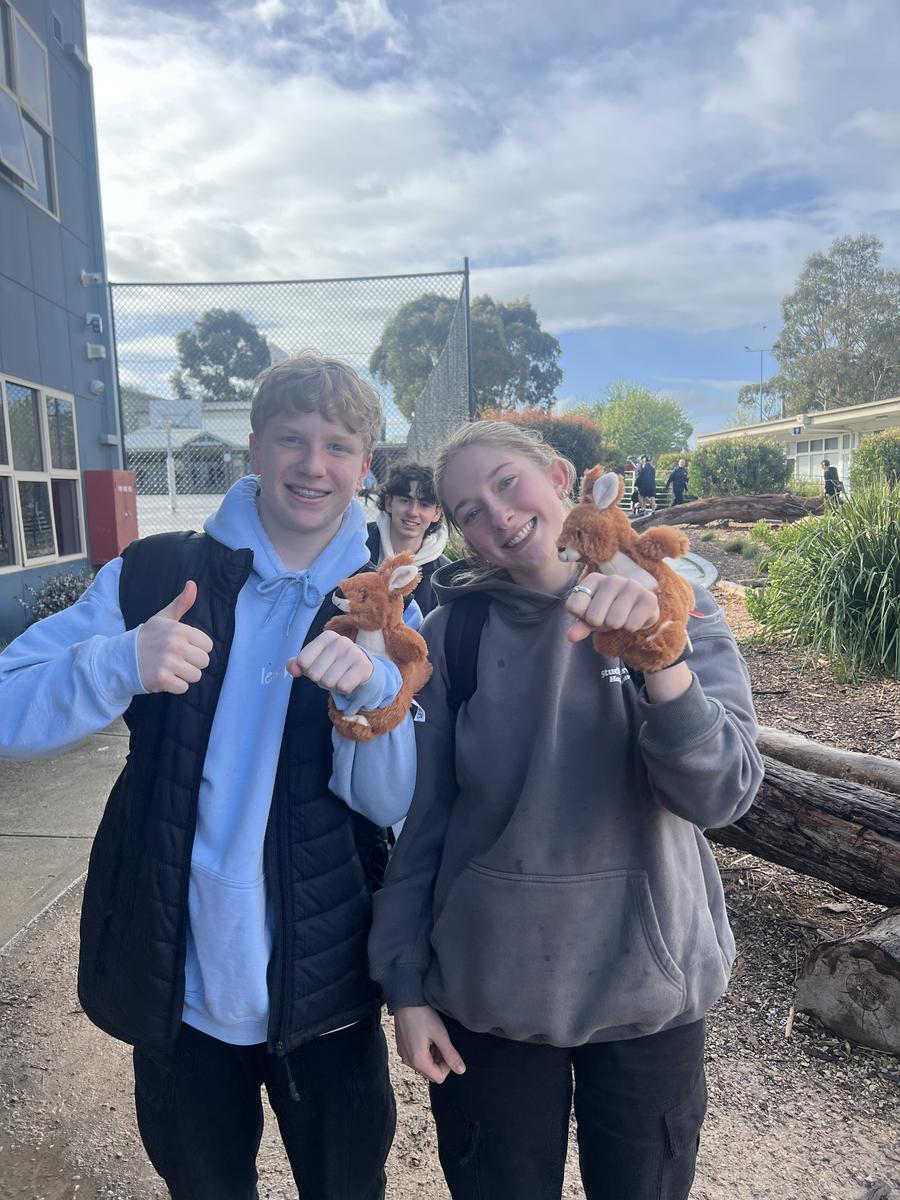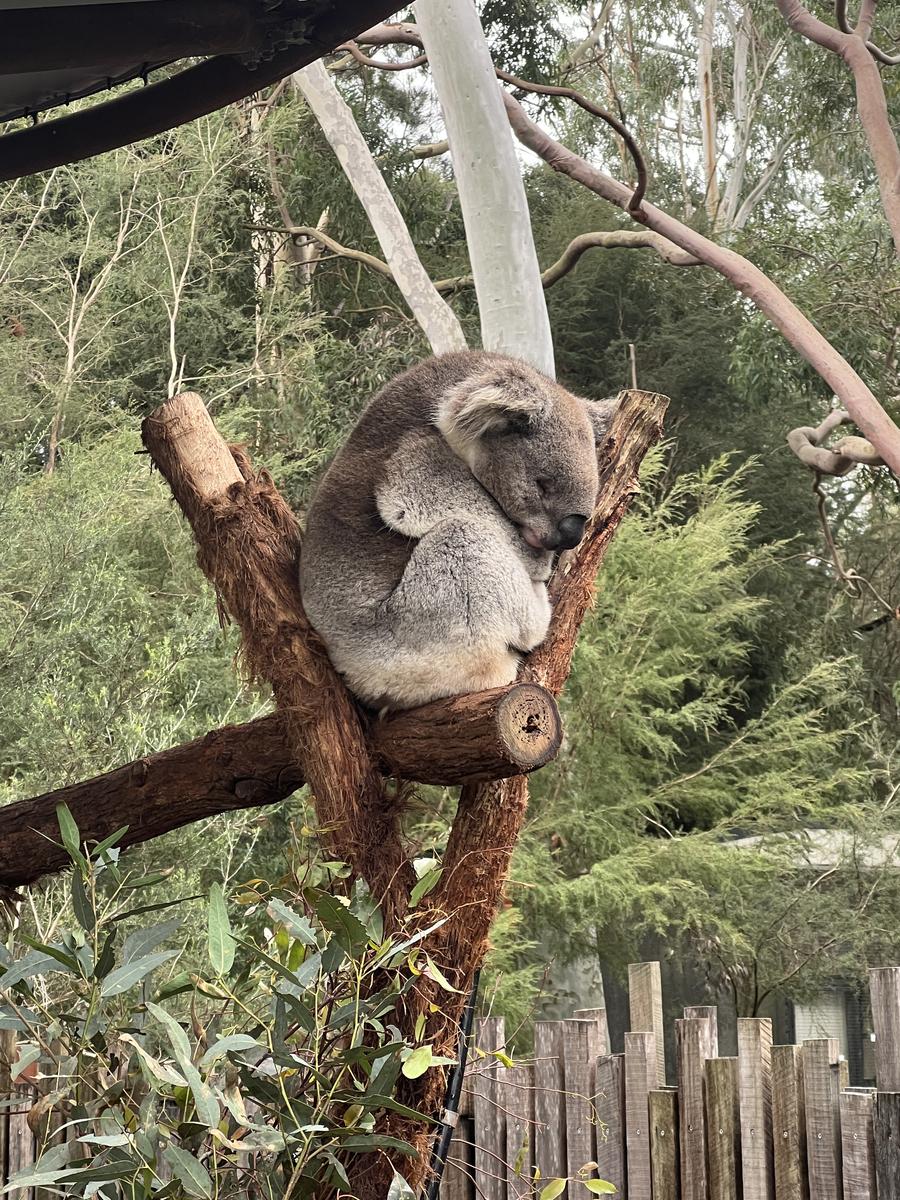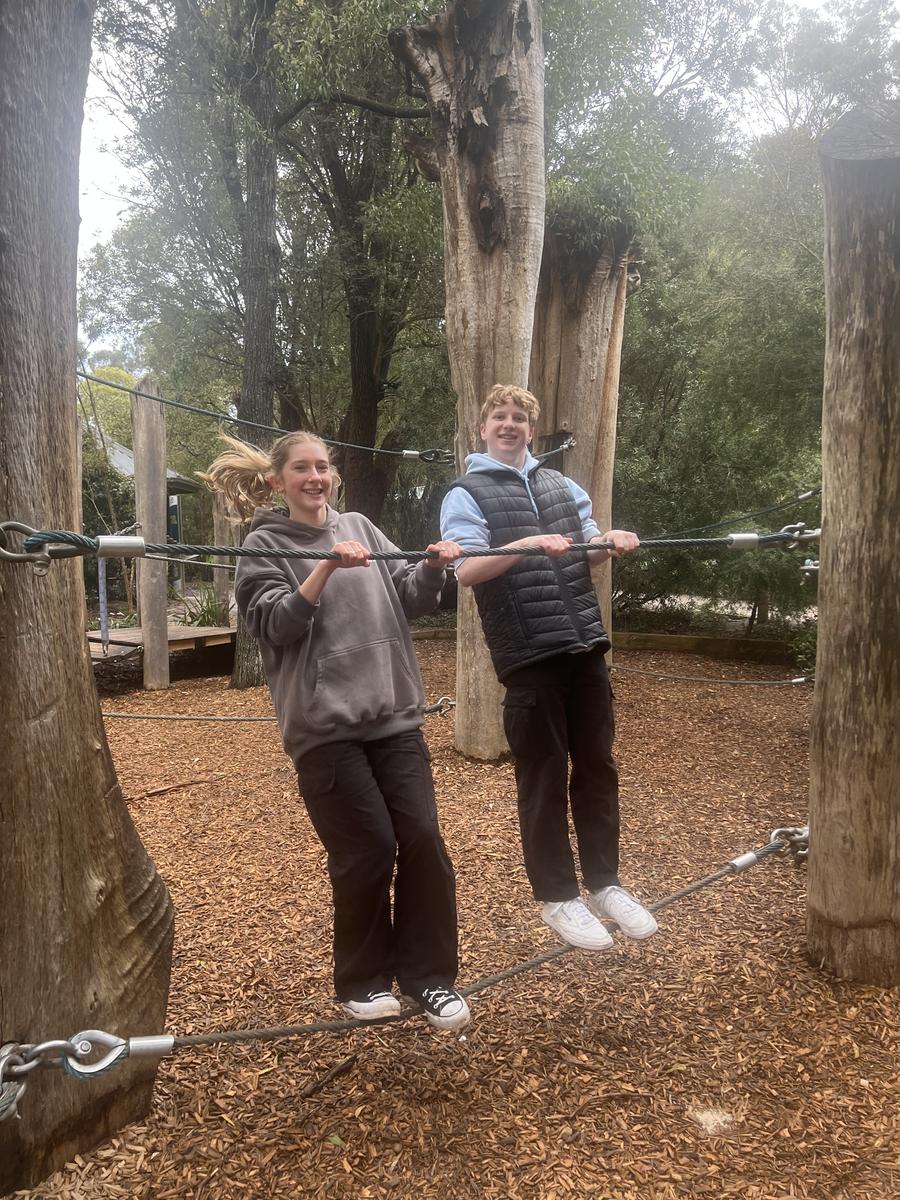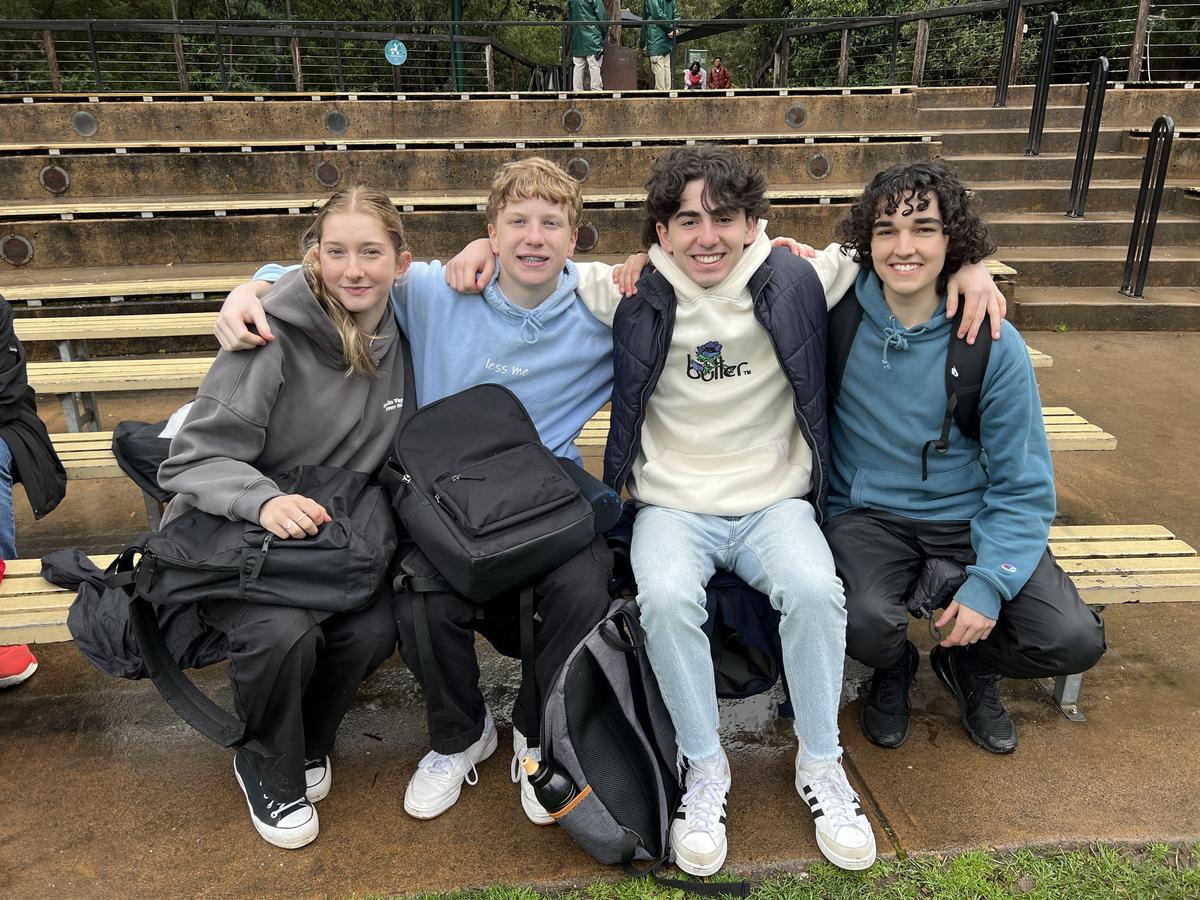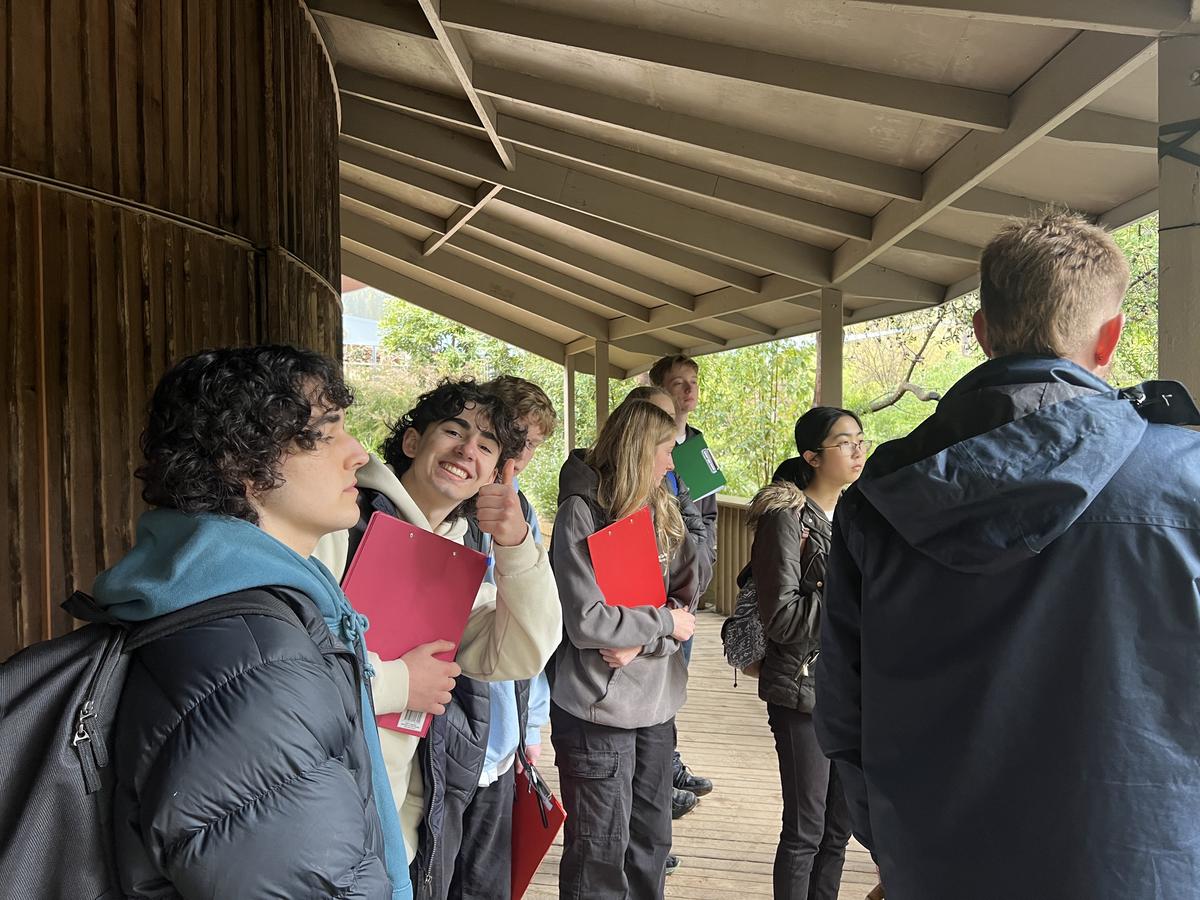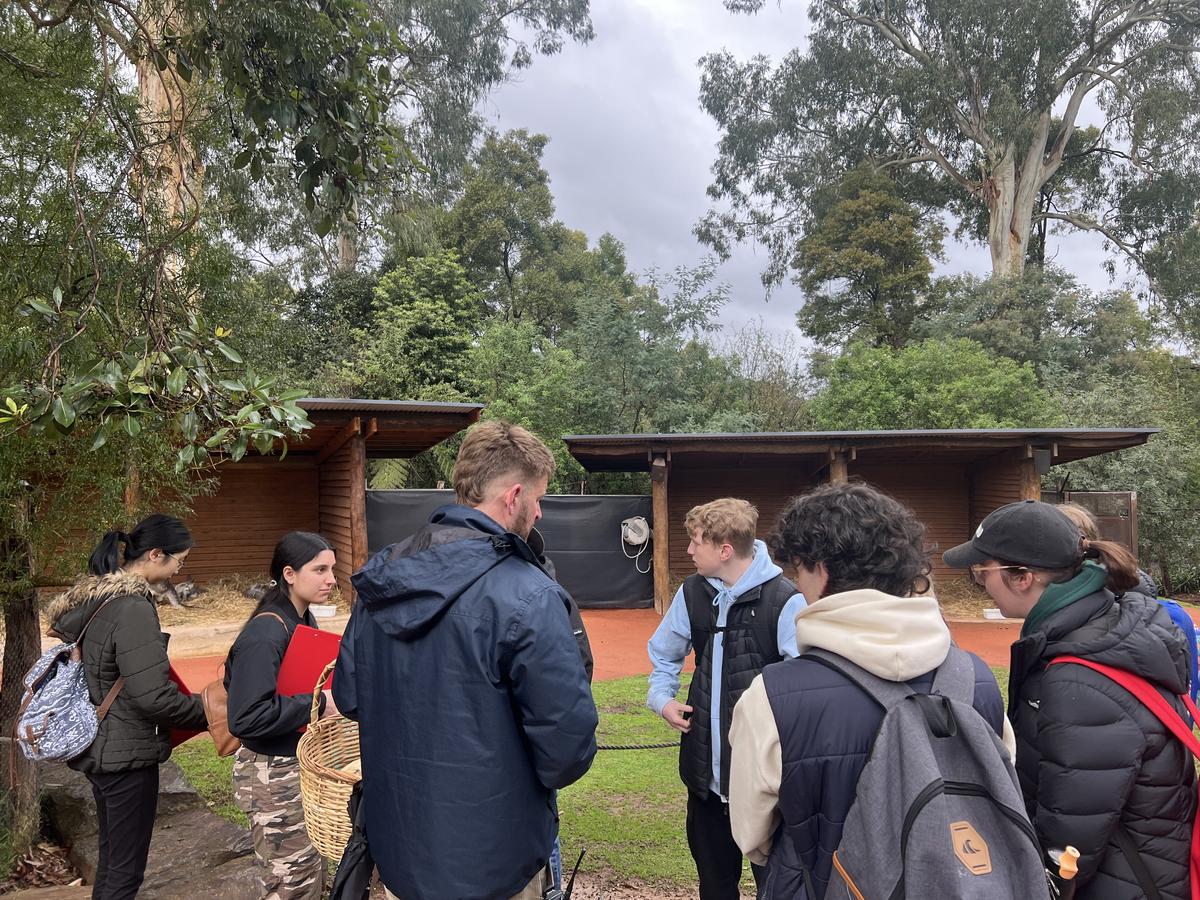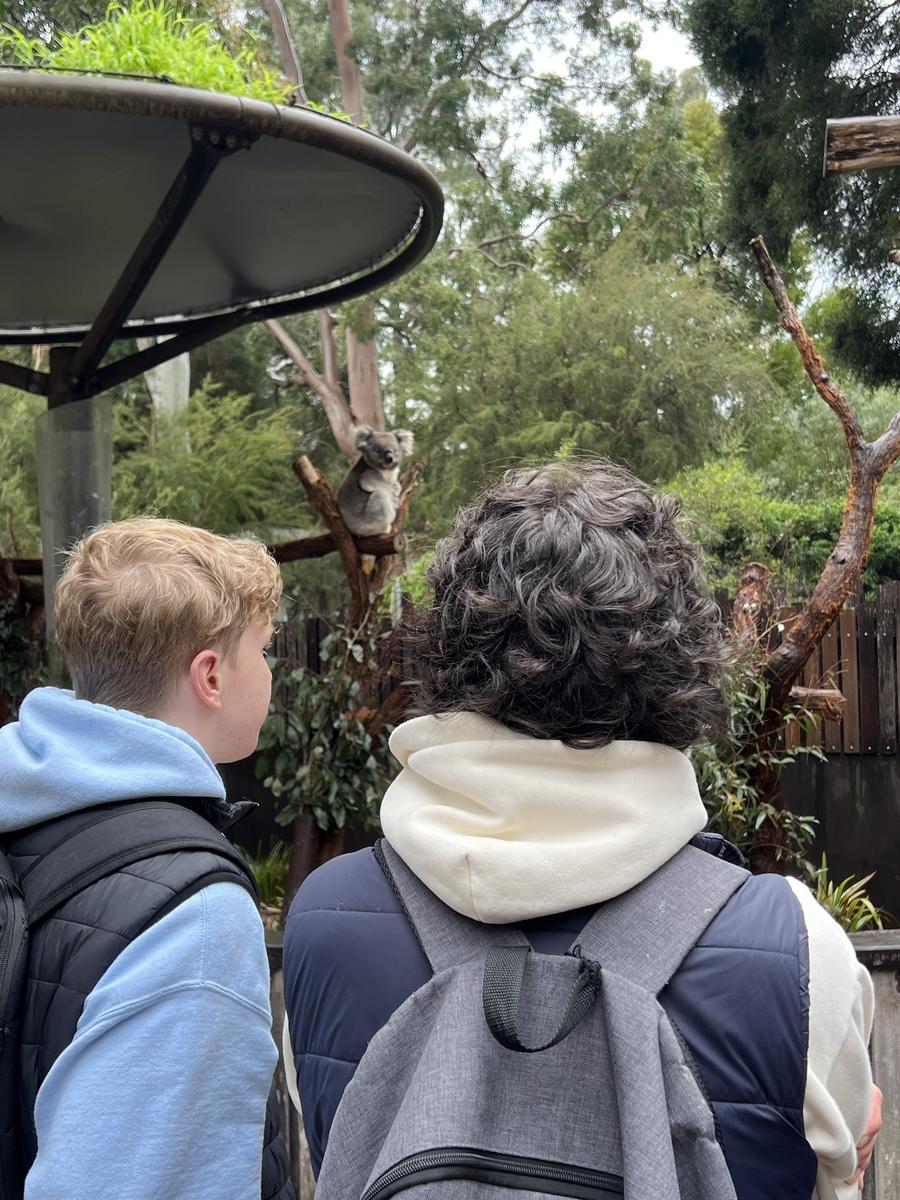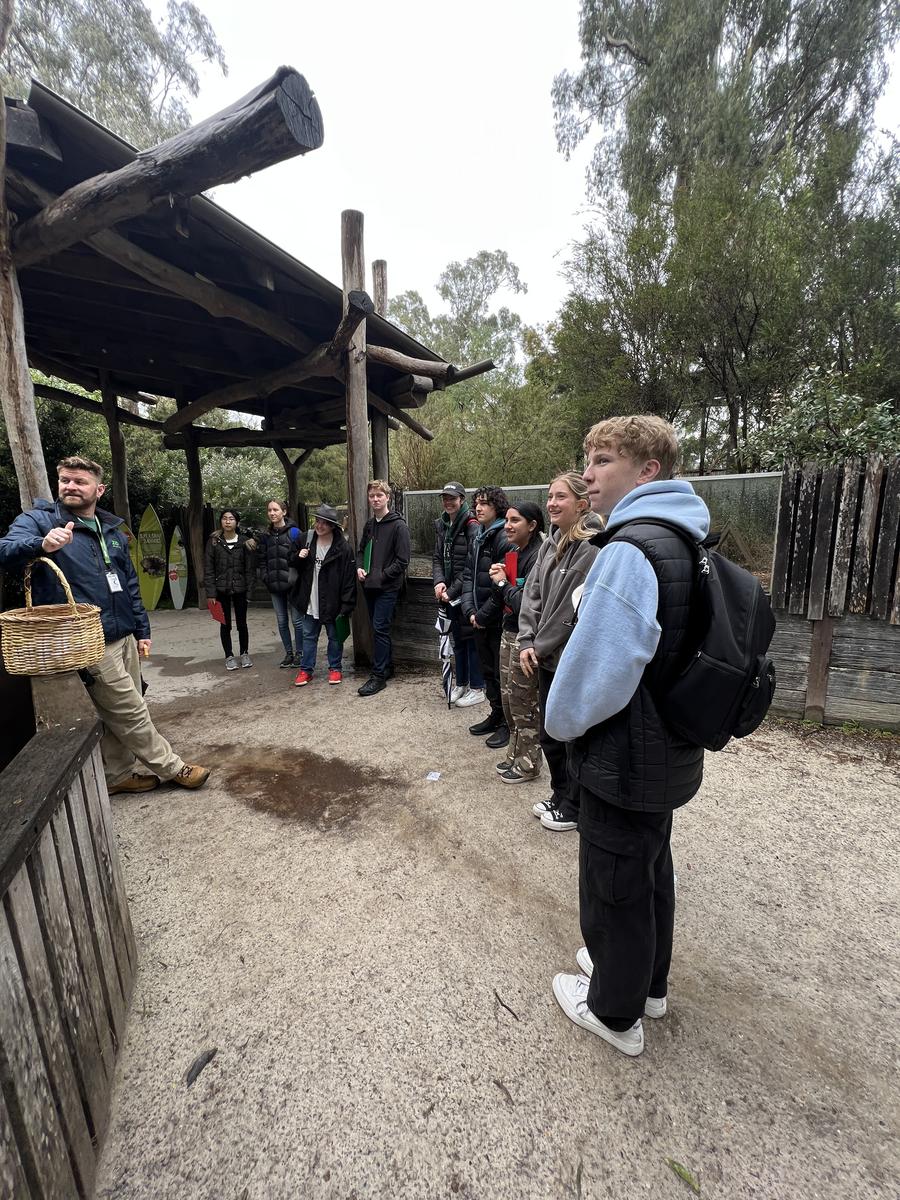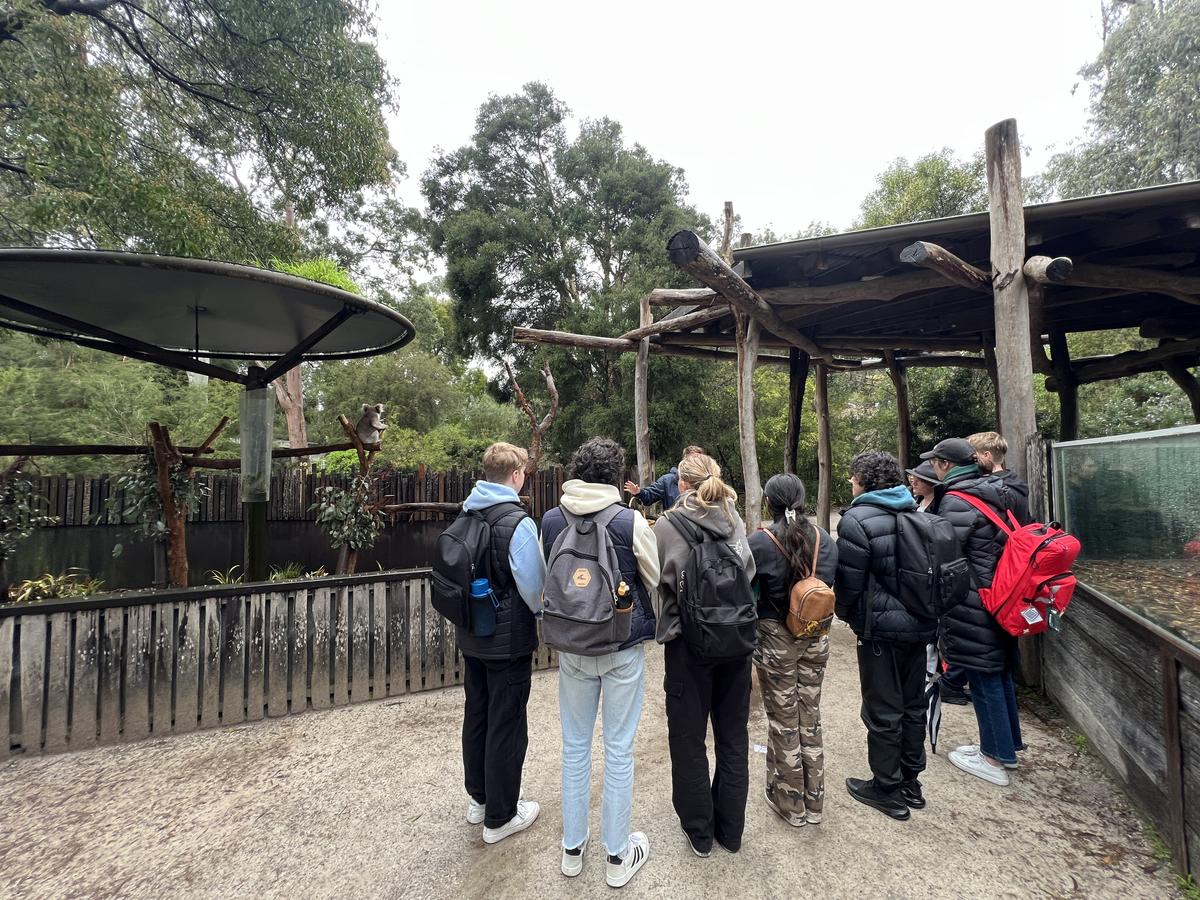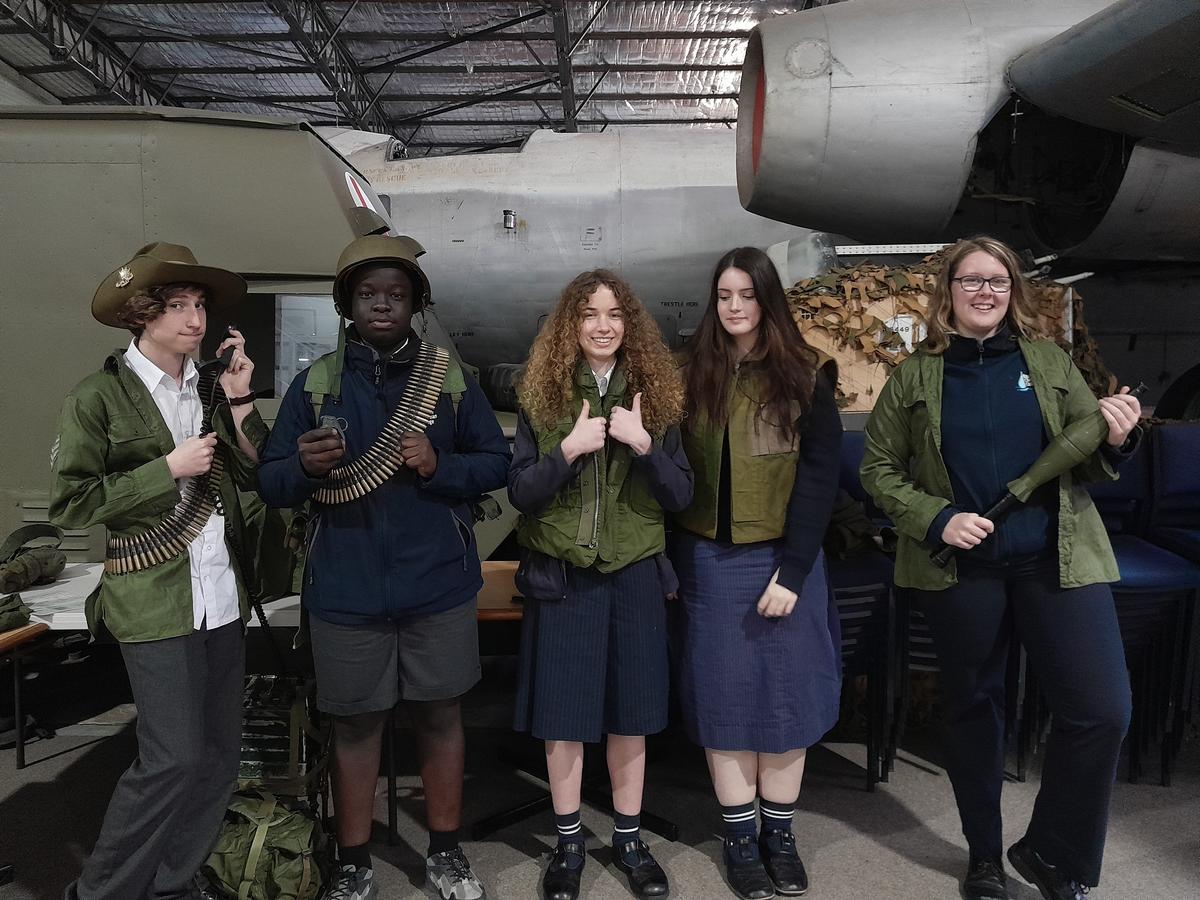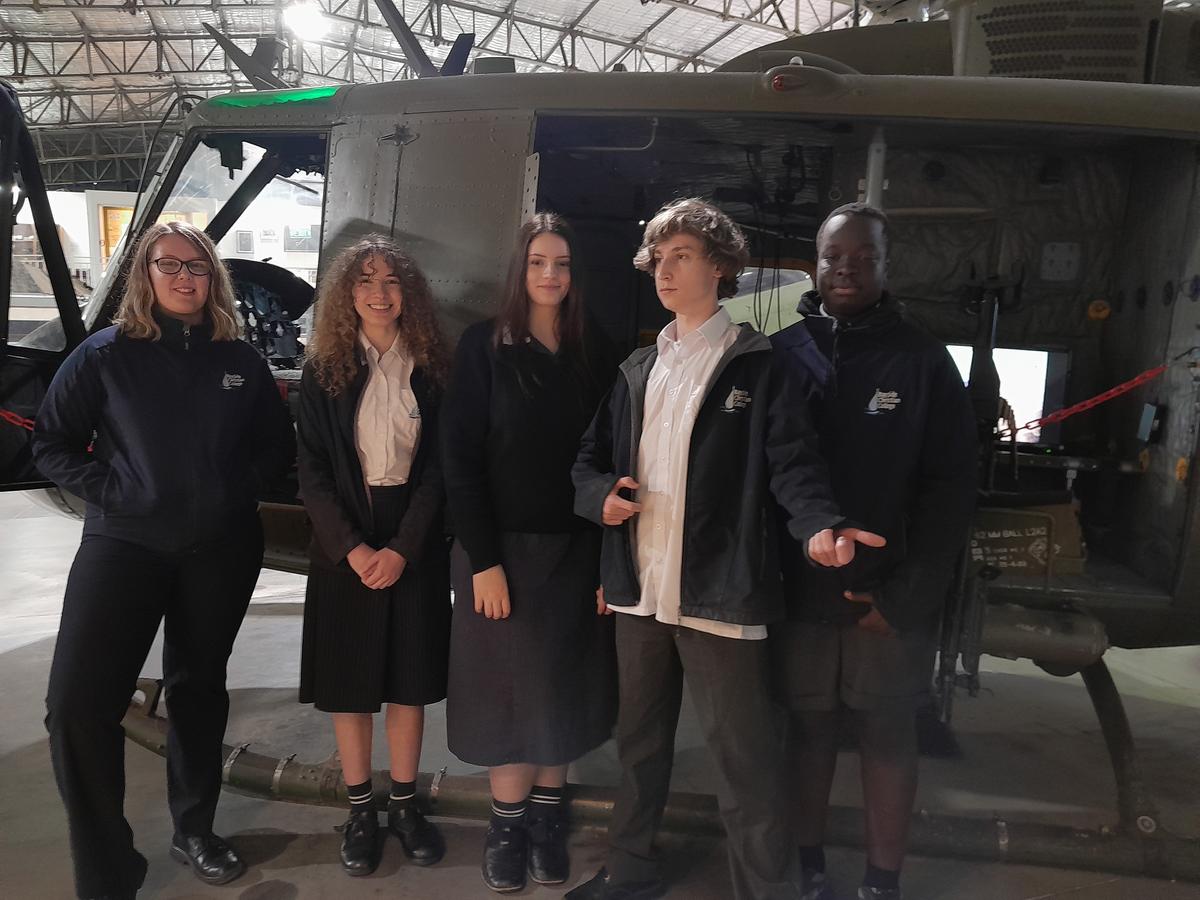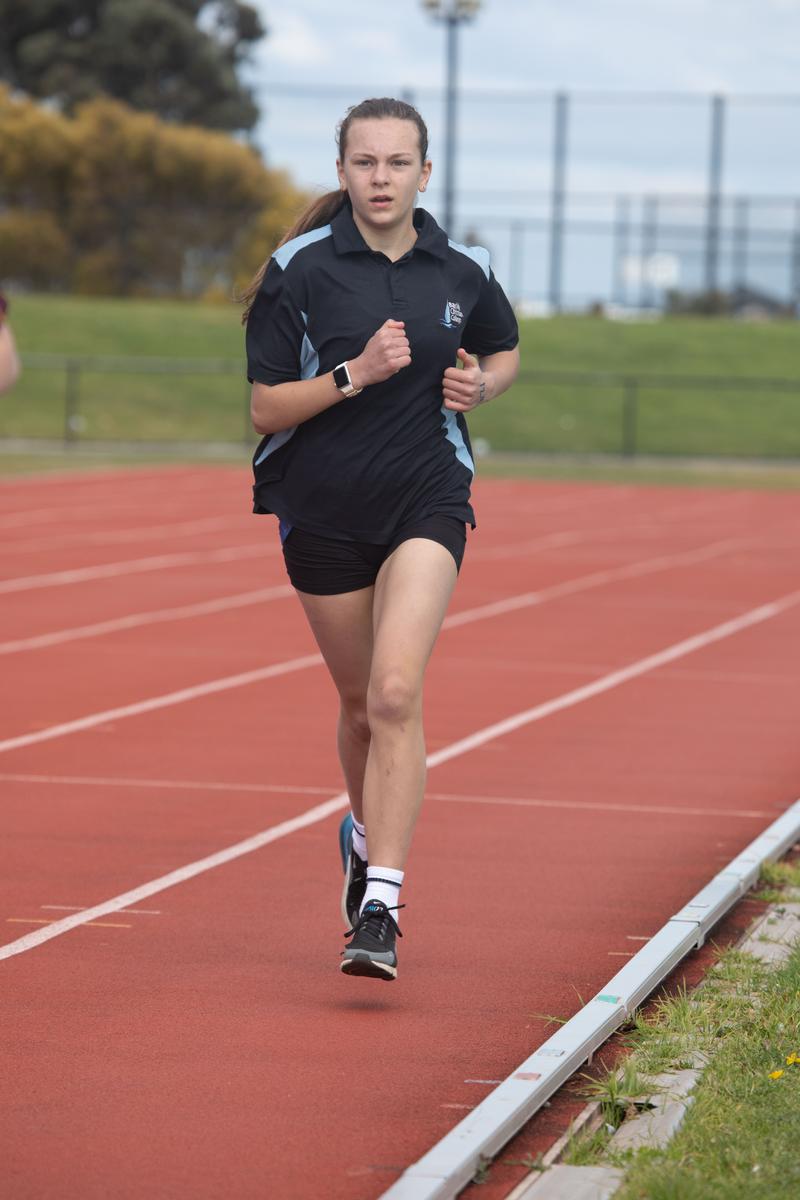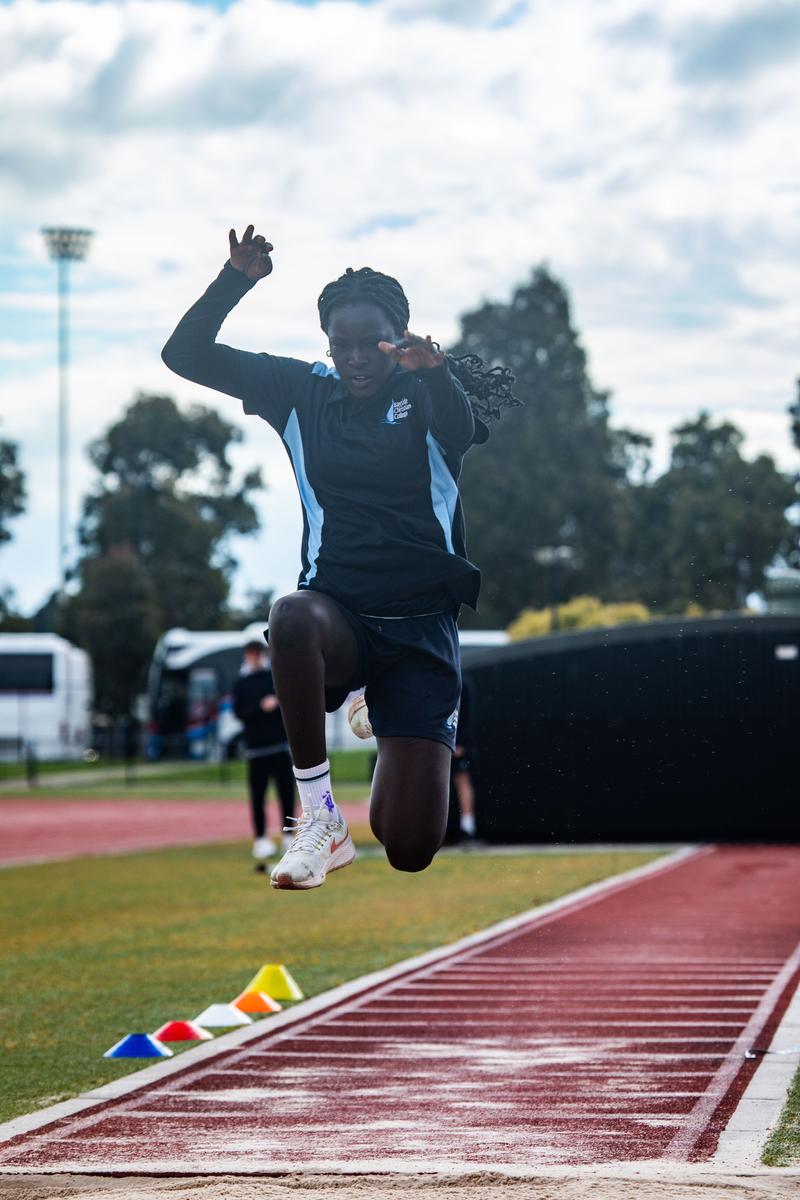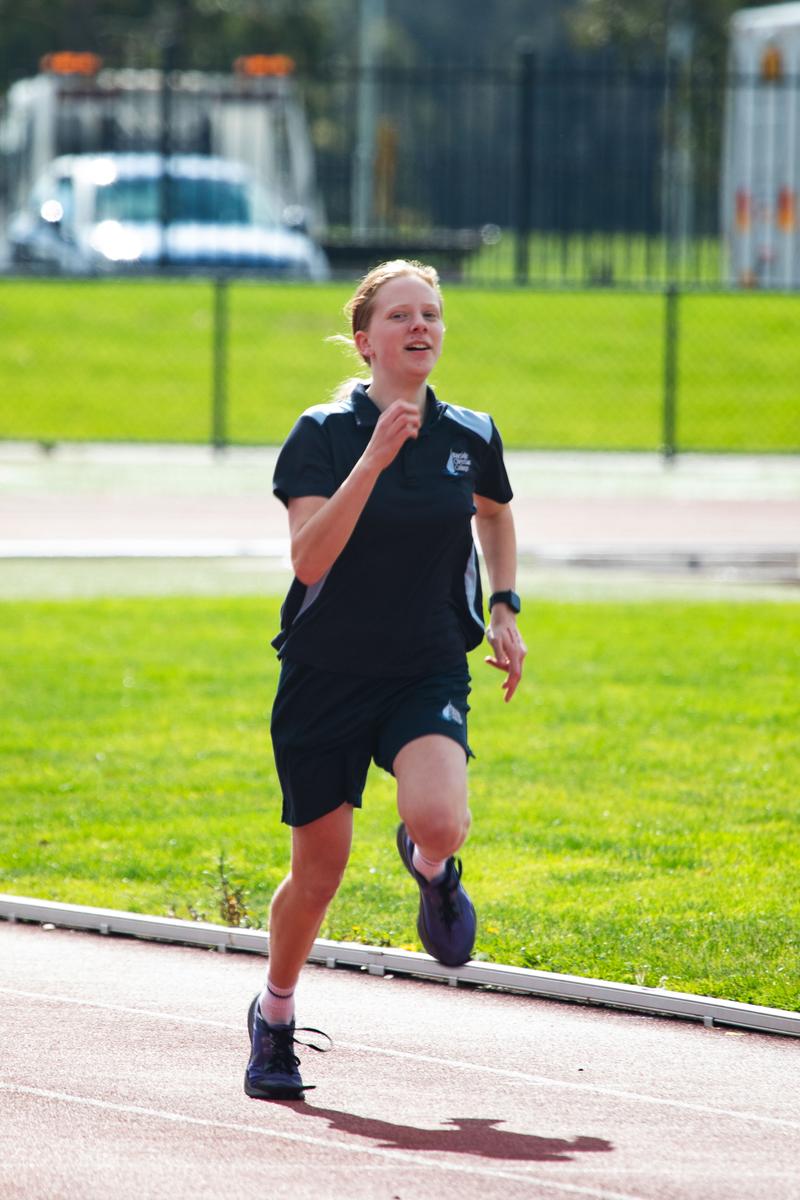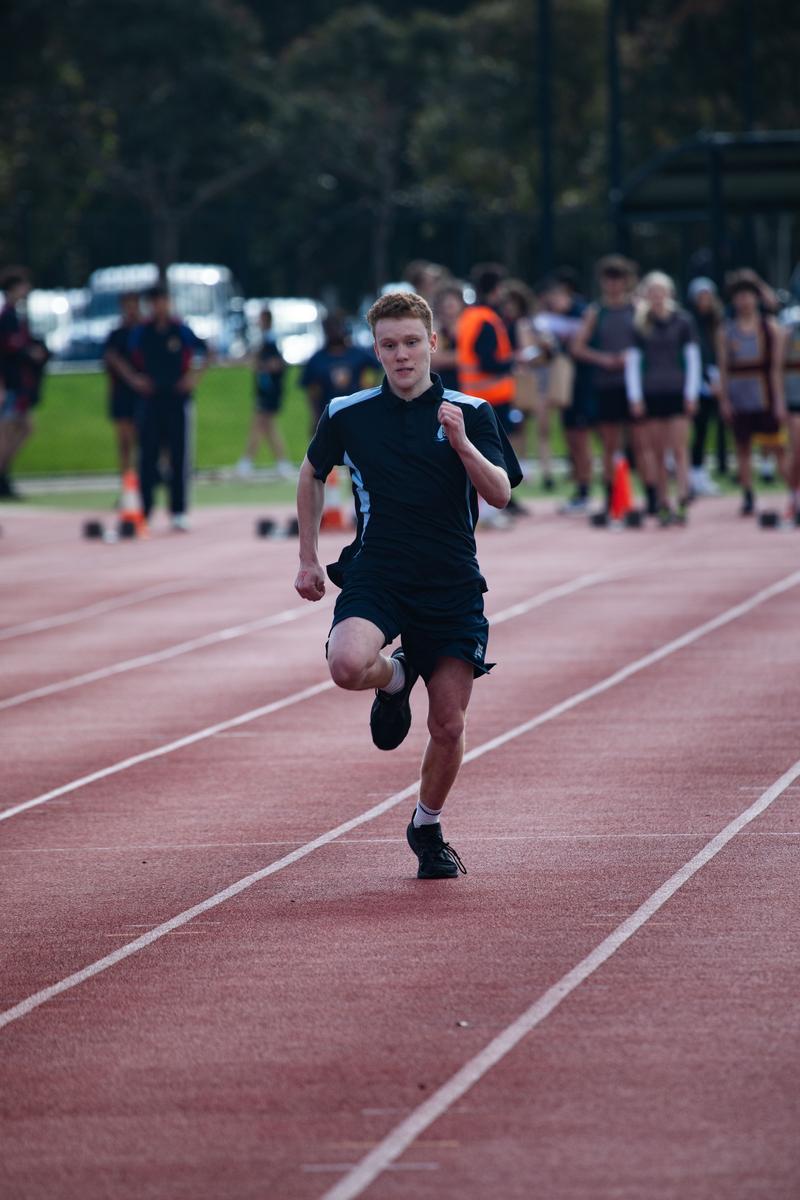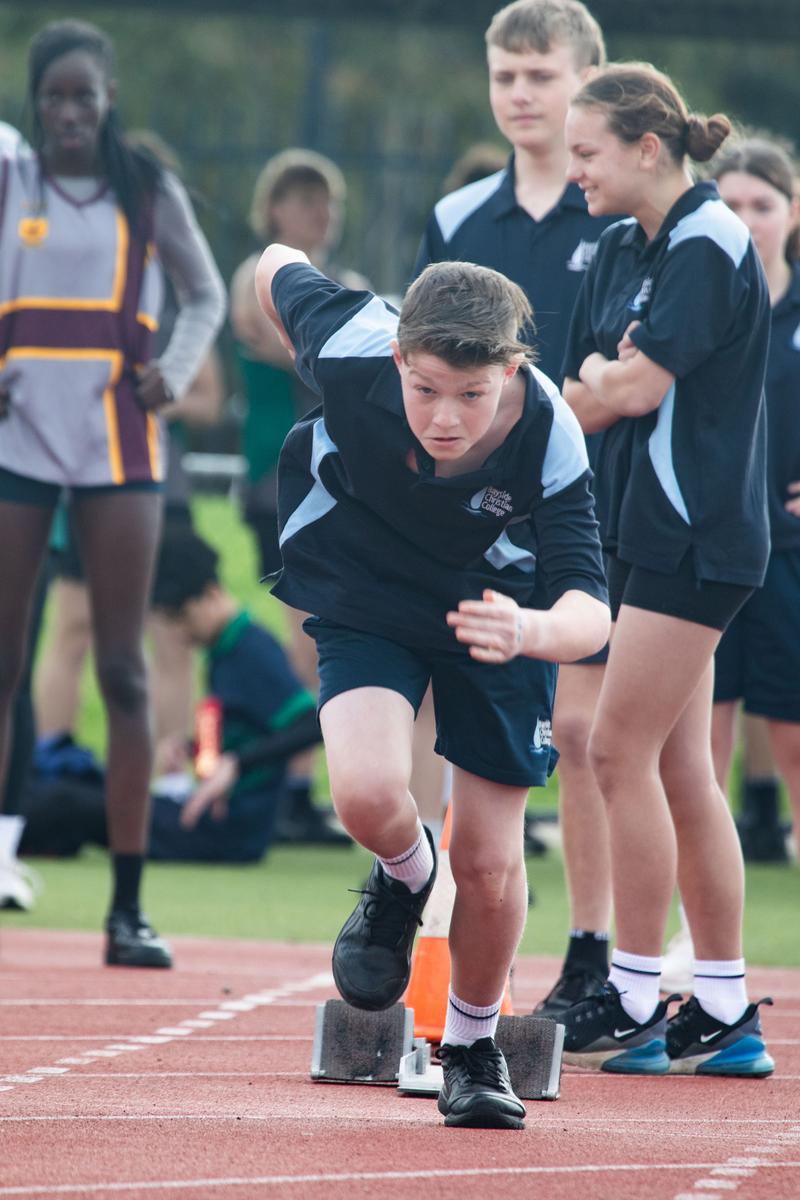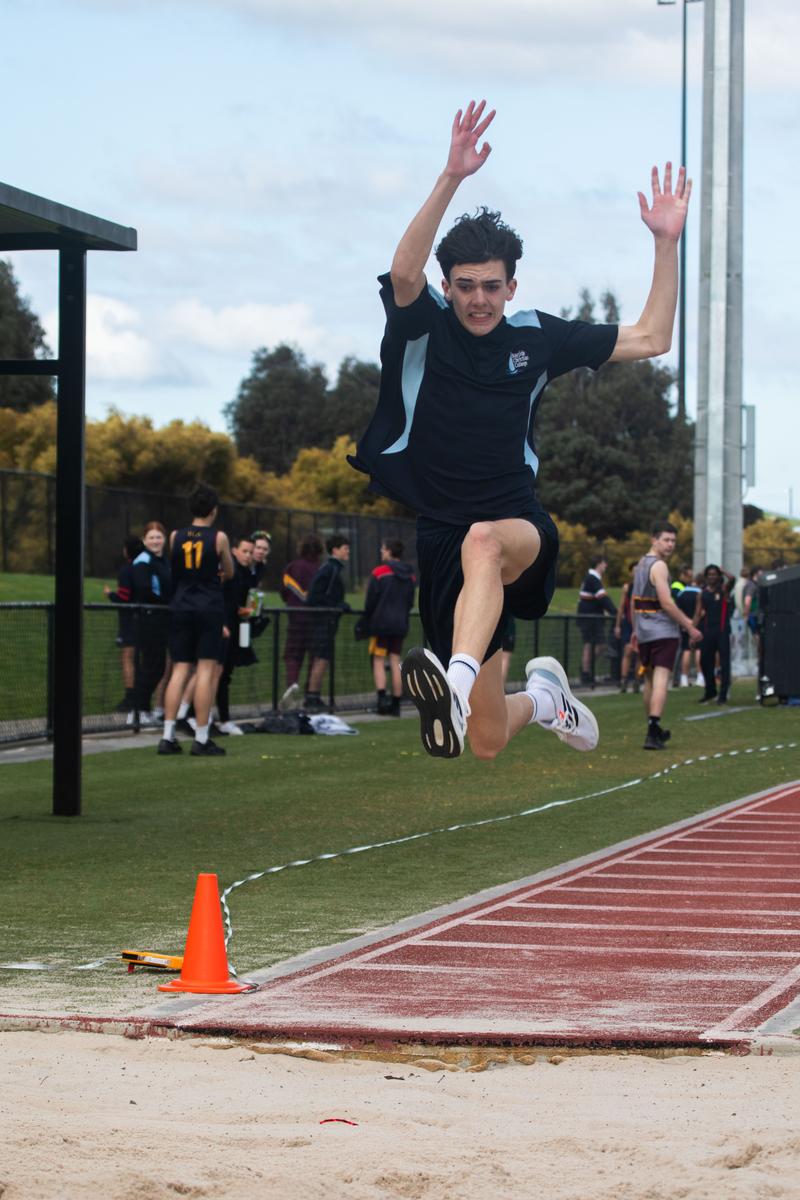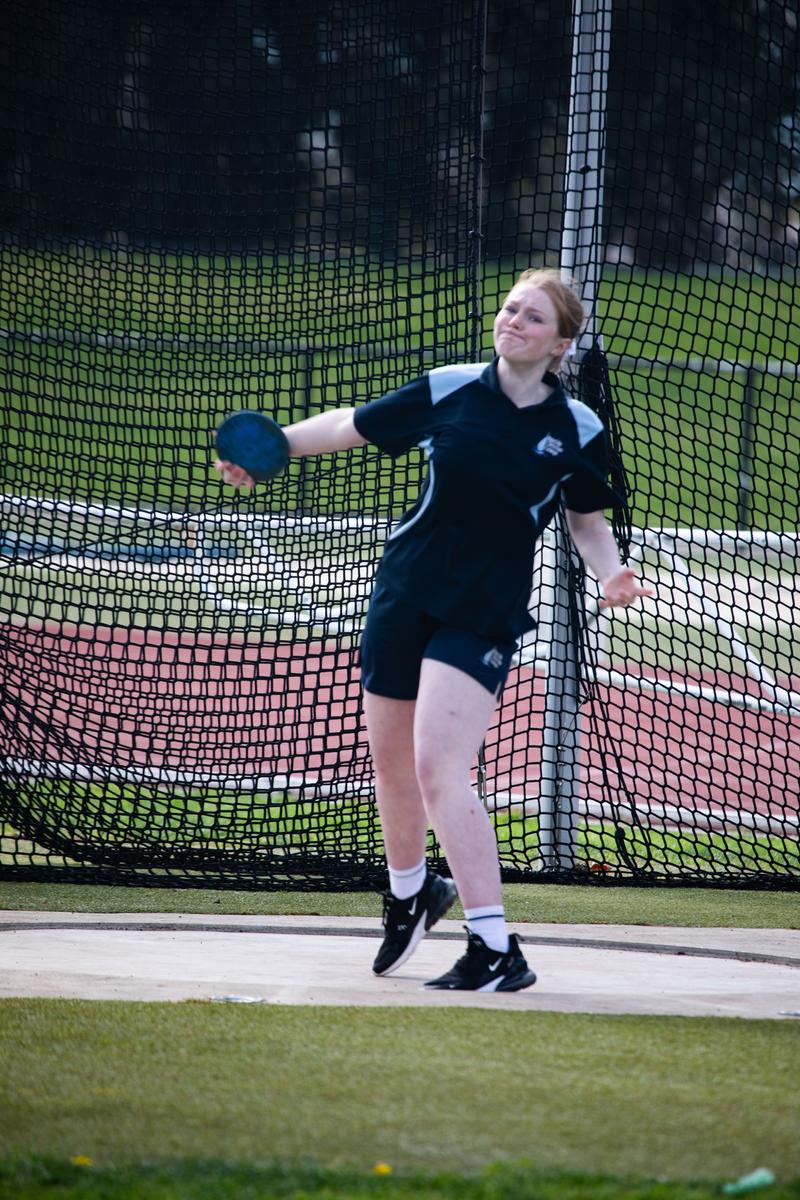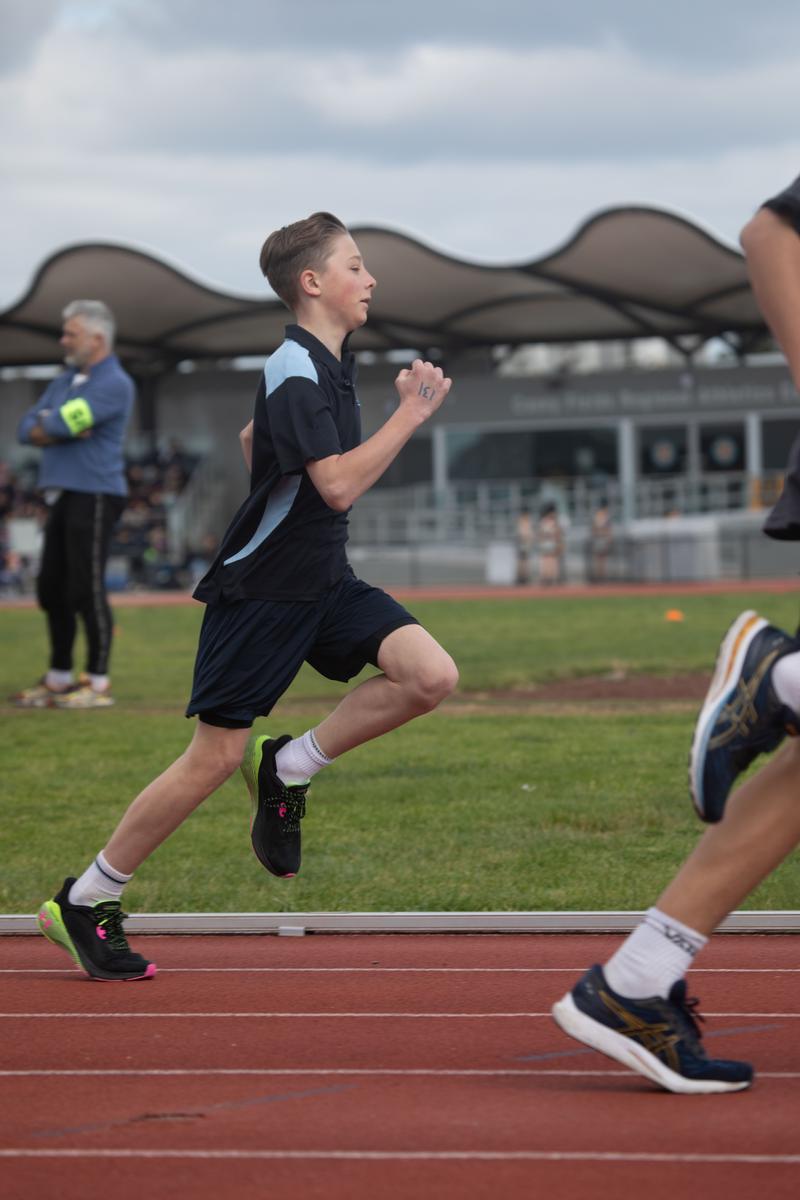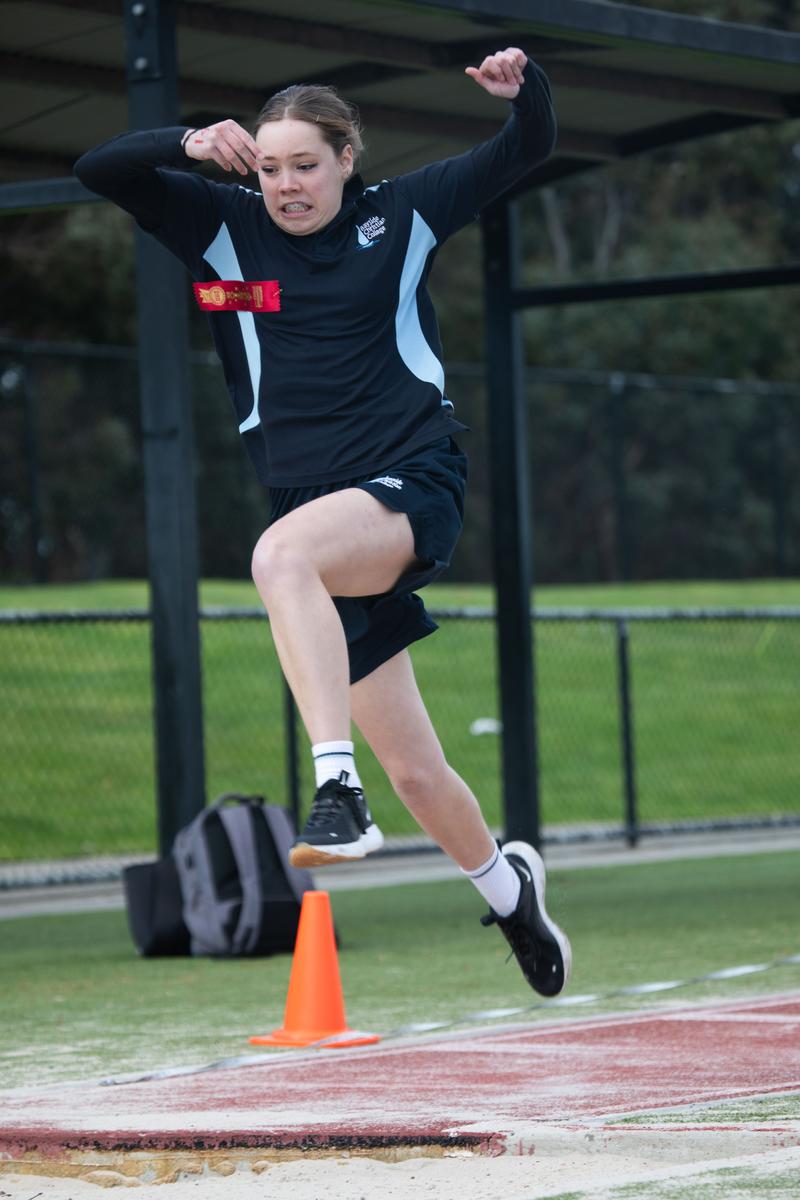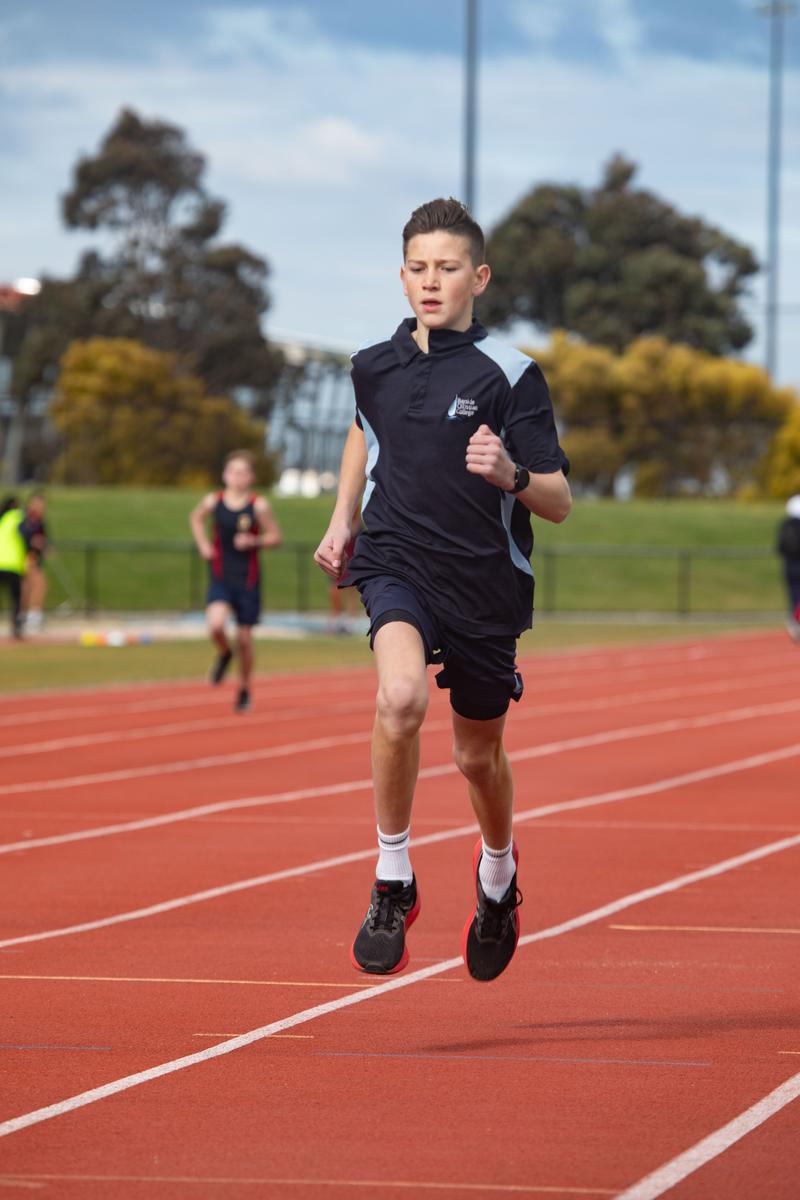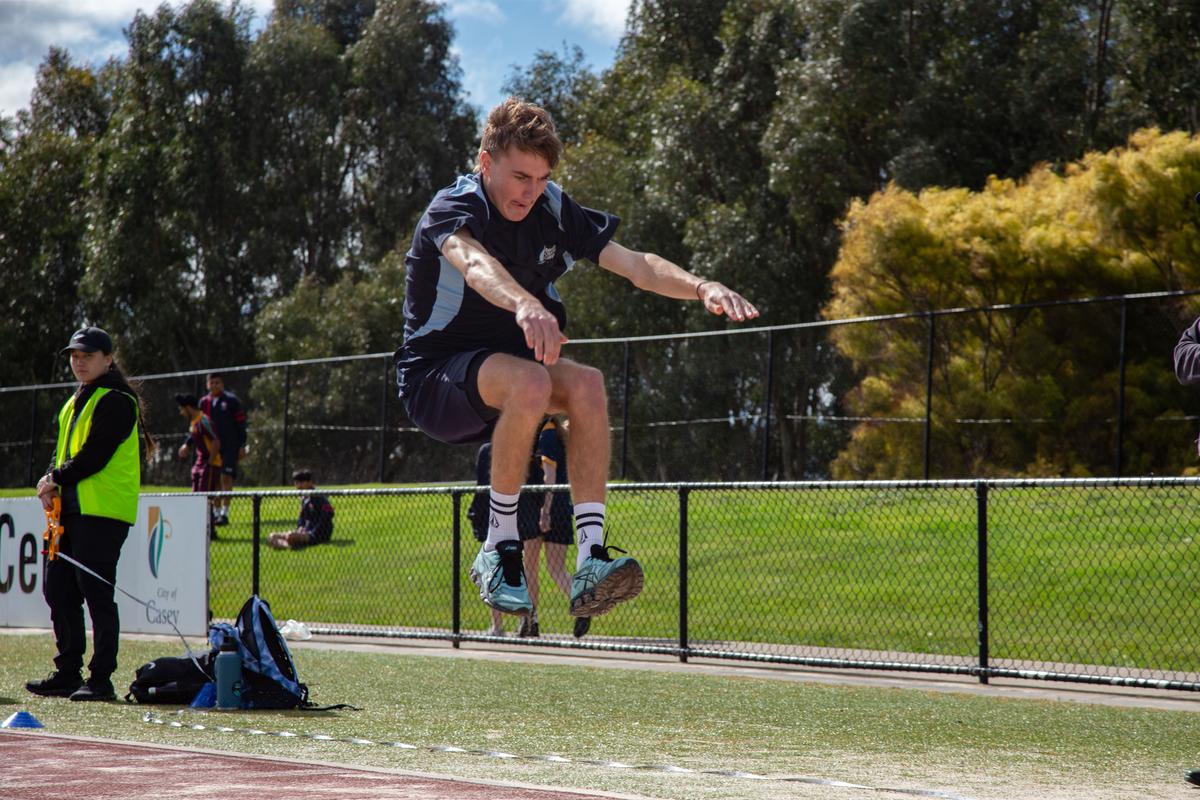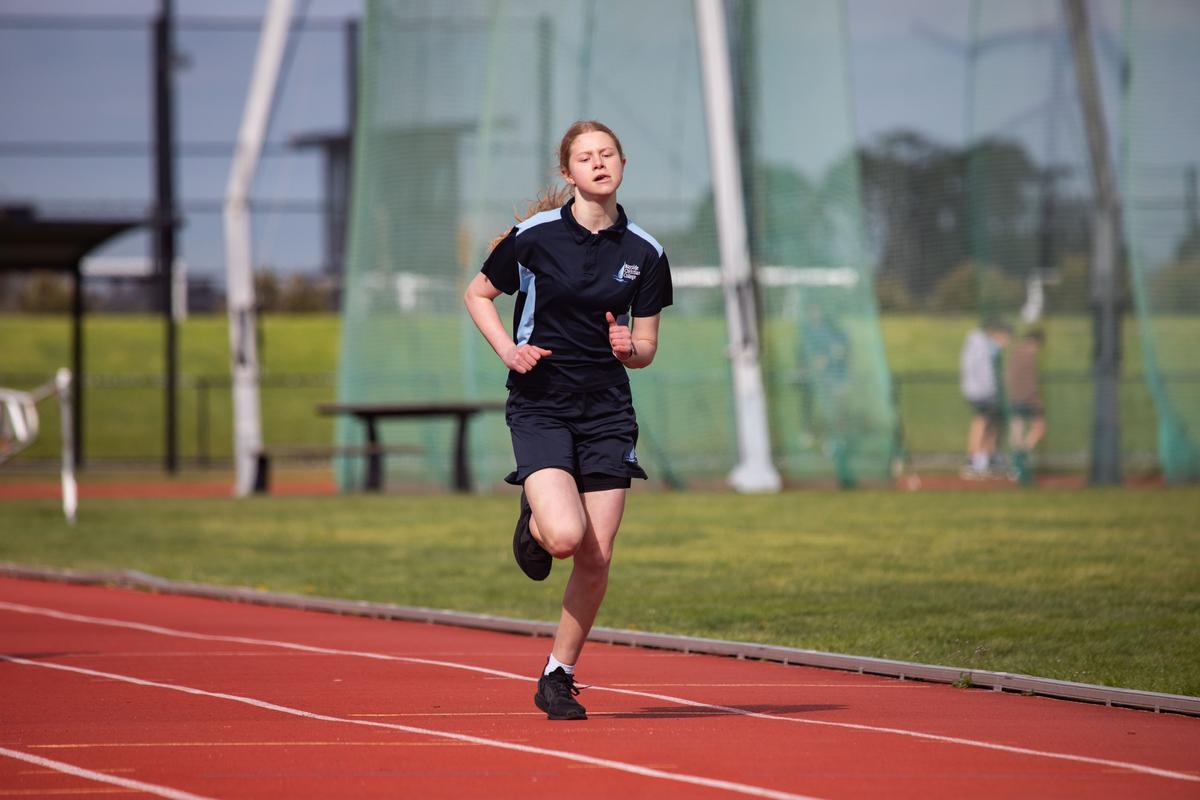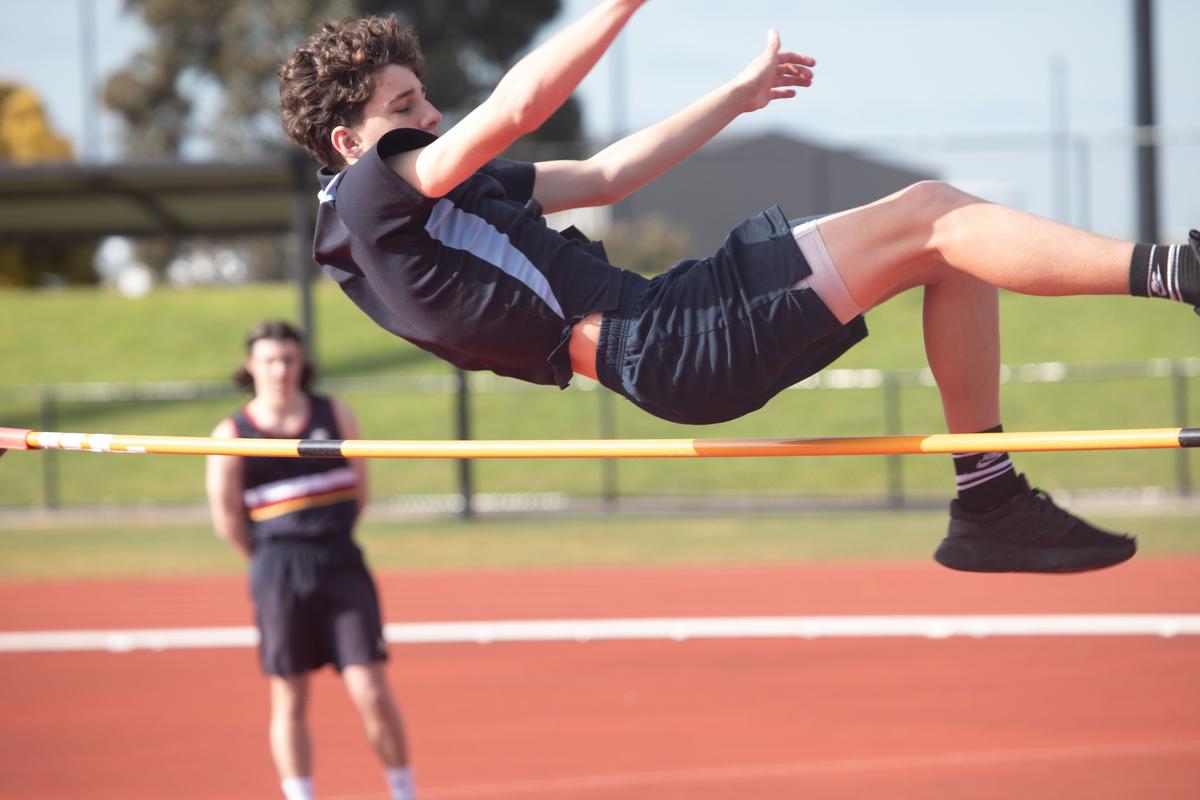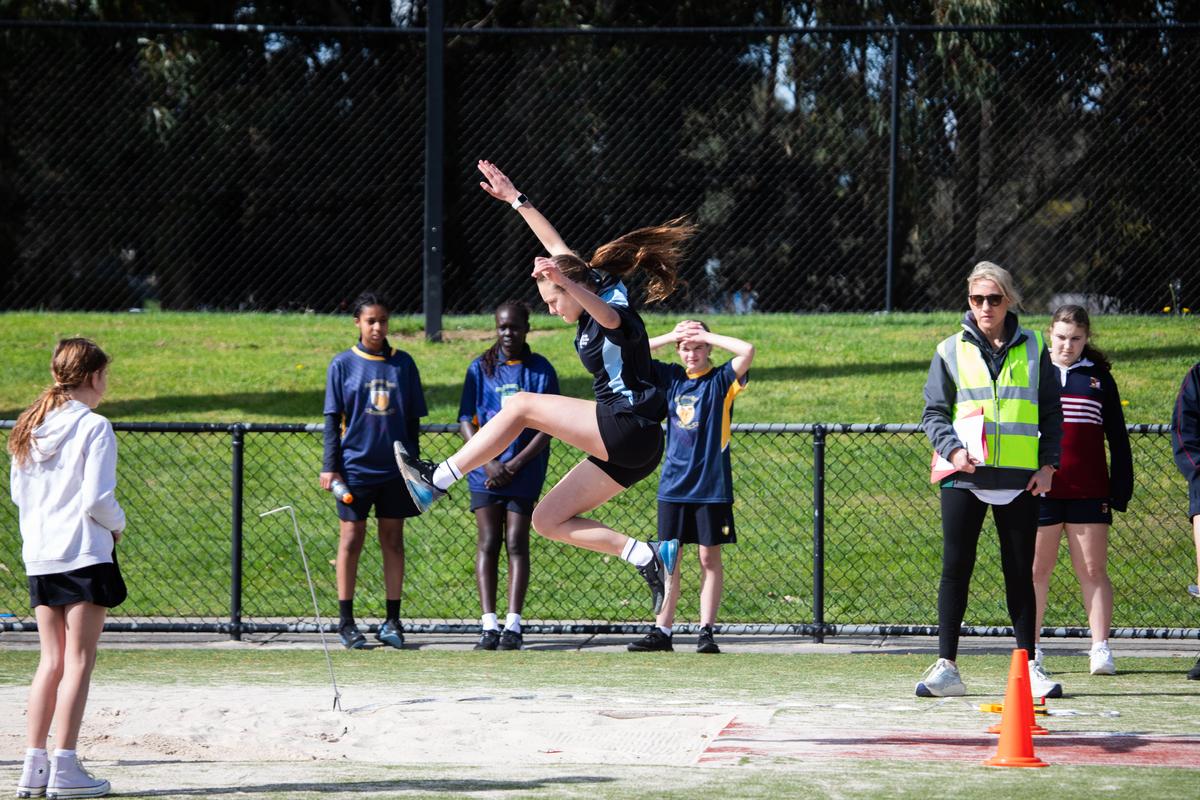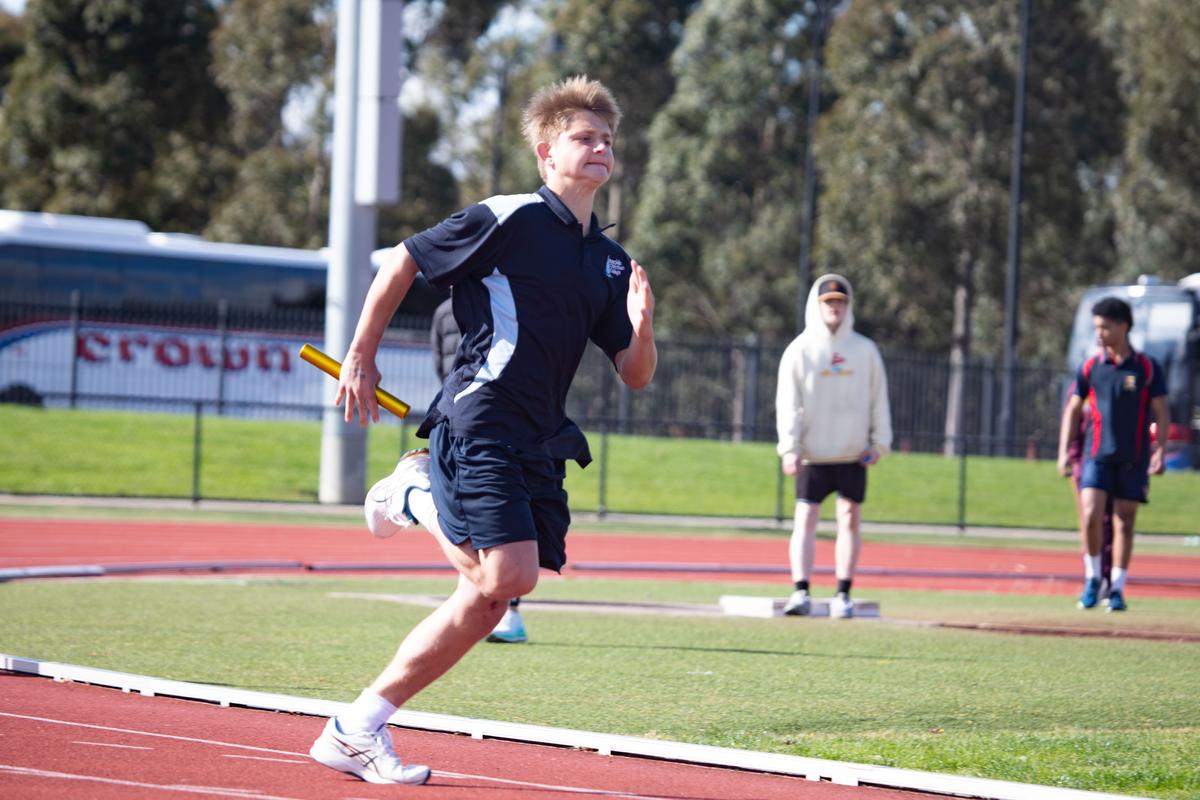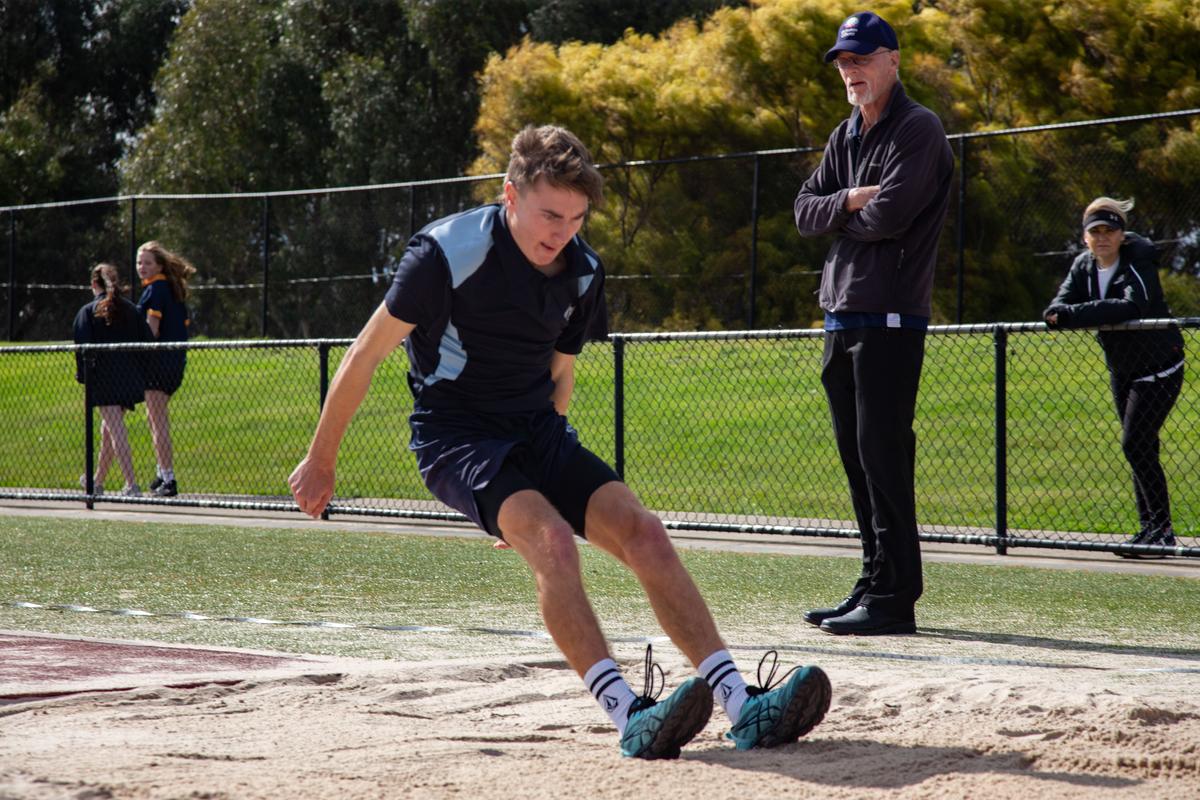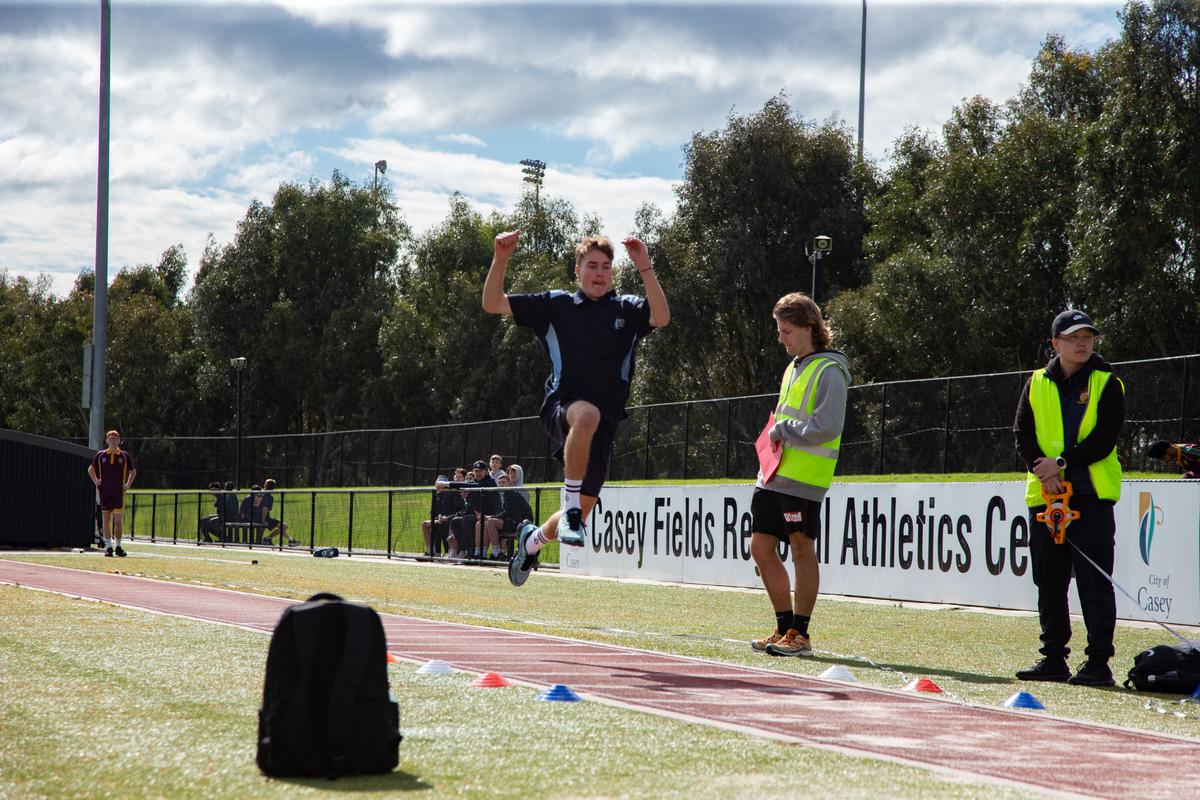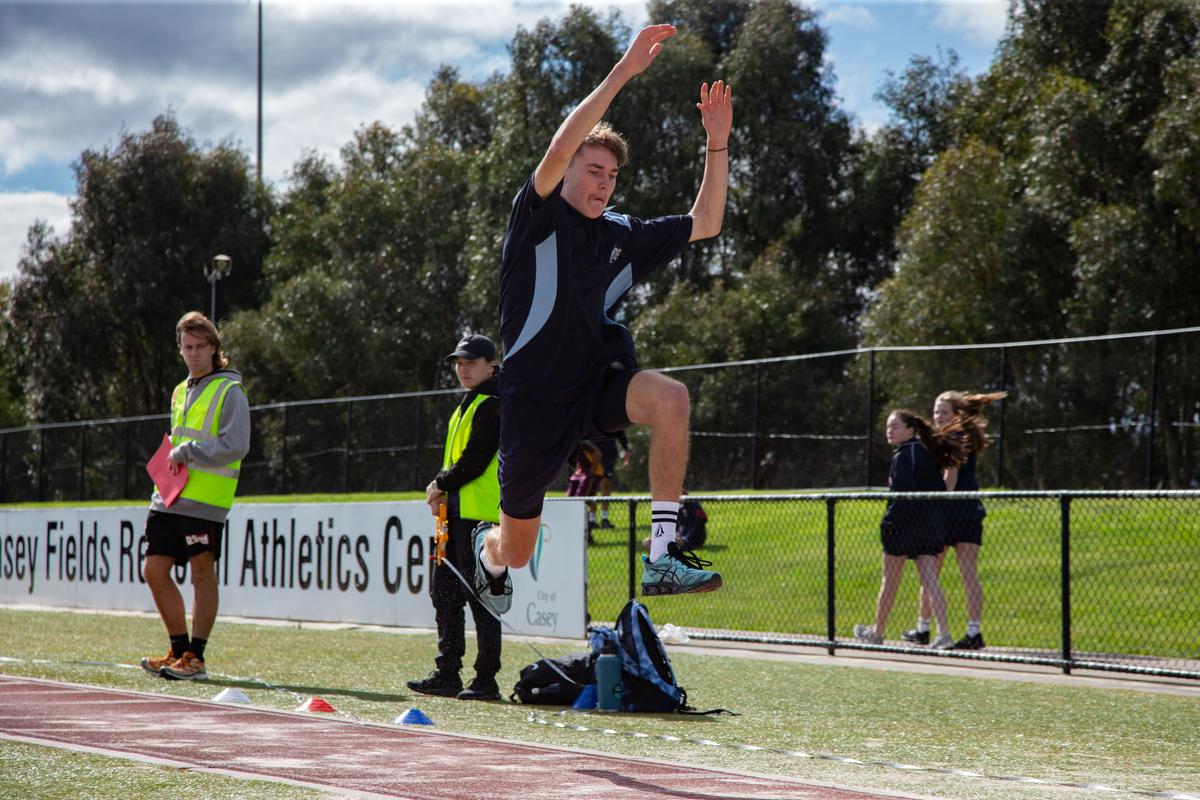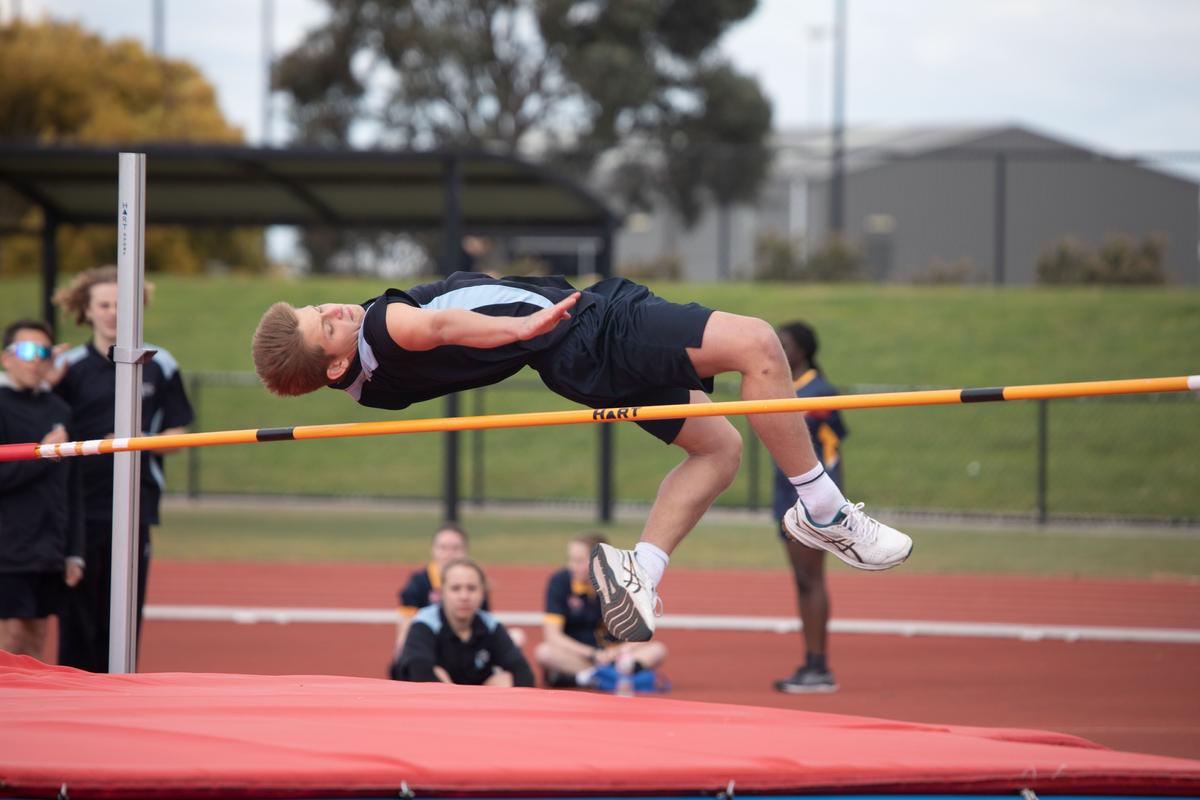Secondary School
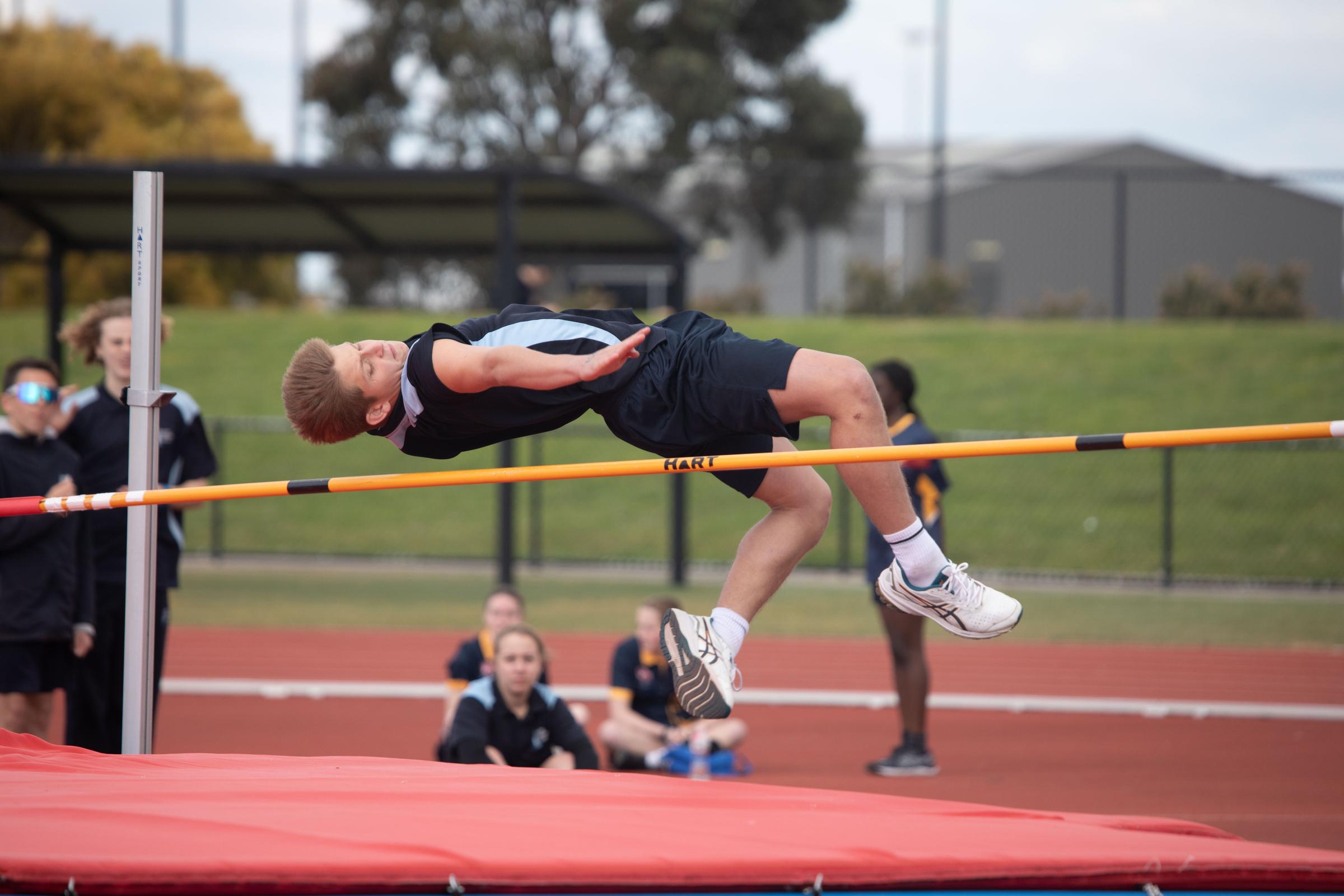
Upcoming Dates
| WEEK 9 | |
| 11/9 | Secondary Assembly |
| Staff v Students Soccer | |
| Year 9 Leadership Week | |
| 14/9 | Community Market |
| 15/9 | Last Day of Term 2:30pm |
| WEEK 1 | |
| 3/10 | Students Return for Term 4 |
Head of Secondary Update
Happiness and Joy
This week in my Year 8 Bible Studies class, we continued our focus on various parables that Jesus told to teach people lessons about the culture of Heaven and God's Kingdom. One of the most well-known stories in the Bible, ‘The Prodigal Son' was discussed with the intention to highlight the main theme of what unconditional love from God the Father looks like to His people. However, a secondary train of thought emerged when we looked at the actions of the young son once he requested and was given his inheritance early. It was about looking for happiness in life in all the wrong places, which according to the story, led this young son on a path to nowhere.
According to the world that we live in, there are plenty of paths that our children can travel which lead to happiness. Obtaining a tertiary qualification, achieving career success, exploring and seeing the world, getting a new car, making a lot of money, having the latest fashionable clothing and/or electronic device, hitting your target weight, marrying the perfect person, buying the dream house together, starting a family. The list goes on.
It appears that we can create our own happiness by actively pursuing and achieving these things and more. If we can tick off enough personal goals/milestones, then this means we’ll be happy. Right? However, what if enough boxes aren’t being ticked or if other people seem to be doing it faster? Does this mean that disappointment and frustration creep in, ultimately leading to us being unhappy?
Now, you are probably thinking that you don’t fully believe all of what’s been suggested. Yet, as human beings who are not perfect, there will still be some inward part that reasons - by getting exactly what you want, you’ll truly be happy. Which leads me to the point. What if God didn’t design us just to be happy? What if He primarily designed us to experience a life full of joy?
The search for worldly happiness can be a vicious trap, ensnaring many, as it leads to a life of unfulfillment. I believe that the associated feelings are temporary as it’s based on the search for “more” - more ‘likes’, more friends, more money, more toys, more acknowledgement, more success, more fame etc. Happiness found here is a momentary feeling that we may experience in the ‘good times’ however, we all realise that these times never last.
Experiencing biblical joy though, is the discovery of a life that’s full of abundance, found by being focussed more on others, more on Christ and less on self. This type of joy is a lasting inward experience that isn't affected by the unpredictable nature of life or the unachieved ‘bucket list’. In this way, joy is superior to happiness. Now I just wish to clarify, I also believe that God wants us all to live and experience a life that’s full of both joy and happiness.
Psalms 16:11 says ‘You will show me the way of life, granting me the joy of your presence and the pleasures of living with you forever’.
Romans 15:13 says ‘I pray that God, the source of hope, will fill you completely with joy and peace because you trust in him. Then you will overflow with confident hope through the power of the Holy Spirit’.
It appears that God places great emphasis on joy. It must be important for our overall wellbeing. Joy is what keeps us cheerful, calm and full of hope when there's not much to cheer about. However, experiencing happiness during these times will also help to keep a smile on our face and energise us to push through.
As these thoughts are pondered, just like my Year 8 Bible Studies class did, my hope is that we are all open to explore what it looks like to live beyond temporary happiness and to find true joy in the most important aspect of life – a meaningful relationship with God that is free.
God Bless,
Mr James Kumnick
Science News
Three courageous groups of students in Years 7-9 handed in their submissions for the annual Science Talent Search. We saw two fantastic looking boardgames created and a realistic-looking model lung designed. There are eight categories and entries from all over the state.
We will now wait to hear who of our participants might have won a price or has been named for a bursary.
Footy Day Fun
Indonesian
There are two amazing events coming up for Indonesian students and their families to spend together and enjoy our beautiful Spring weather. Indonesian Night is on Friday 6th October at theState Library Victoria from 7pm onwards and the Outdoor Indonesian Festival on Sunday 8th October, from 10am onwards at Arglye Square, Carlton. There will be a lot of cultural activities as well as Indonesian food where you can buy and to be enjoyed with the whole family.
There is also a planned Mass Tor-Tor dance, the dance that the students learned during the Indonesian Day. Come and see the Indonesian Culture on display in Melbourne. For further details visit www.festivalindonesia.com.au
Bu Chandra Schokman
Year 9 Humanities
In Term 3, 9C have undertaken the ‘Creativity - Entrepreneurial Studies’ unit of the Humanities course. Due to their leadership week next, we weren’t able to run our businesses at the Community Market this time around. However, being flexible entrepreneurs, the class agreed to cater for our inaugural ‘Footy Day’. This was a huge undertaking and pre-orders were overwhelming, stretching our Year 9’s beyond what they thought their limits were.
The 15 Year 9’s who were available and not sick on the day did a tremendous job and enlisted some valuable help from our STEP and Year 11VM students. Some statistics from the day are as follows:
- 117 Hot Dogs served - only one empty accidentally bun delivered…
- 102 Well done sausages served
- 122 Cake Pop footballs sold
- 95 Loaded cookies sold
- 60 Serves of traditional lemonade served - 74 lemons juice during the making
- 107 Milkshakes served
- 146 Pre-orders delivered to the primary school class rooms
- 15 Year 9’s who never want a job in hospitality!
- 90 Minutes of pandemonium!
We thank everyone who supported the businesses and placed orders with us. All money has now been counted and will go to the following not-for-profit organisations:
$ 117 - Australian Cancer Council
$ 160 - Street Peace
$ 85 - The School Project
$ 340 - The Stroke Foundation
$ 300 - Compassion
With one business still to run at the community market, the class has done an amazing job to raise over $1000 already to help their nominated charities in the invaluable work that they do. This has also been a rich and invaluable learning experience to help them understand the challenges and complexities of running and business.
Mr. Joel Williamson
Year 9 Humanities (Entrepreneurship) Teacher
SIS Debating
In July and August, a brave band of fifteen Secondary students travelled to Flinders Christian Community College to participate in the annual debating championships. From 9:30am to 2:30pm, the students were engaged in both a prepared and an unprepared debate on current topics of interest.
The Year 7 and 8 students were discussing whether all pet owners should obtain a licence in order to avoid cruelty to animals. The Year 9 crew debated whether awards should be given on achievement or efforts. Both sides presented a range of great arguments. In the unprepared debates, especially our Year 7s were put on the spot but argued valiantly. The participation ranges from schools as large as Woodleigh and as far as St Margaret’s, and many schools have debating electives all year around. Considering this, our students did extremely well in both rounds.
Years 7 and 8 Agriculture
With the beginning of a new Semester, two new groups of Year 7s and Year 8s have made the Trade Skill Centre their home and are exploring the animals and our fantastic grounds. A highlight of Week 2 was the Year 8s eradicating of the pestiferous inkweed. All of the students had to put in a lot of elbow grease when digging up this dreaded plant. At one point, I was reminded of the children’s book about the giant turnip, as four Year 8s were tugging on each other and landing in the dirt, in Aiden’s case front first. But the inkweeds were conquered and another large patch cleared for Mr Goschnick’s plants.
The Year 7s are still familiarising themselves with the goats, alpacas and ducks and learning about a new species each week. We also made the exciting discovery of two brandnew twin lambs and transported them to safety from the resident foxes via wheelbarrow.
Year 9 Science
In Year 9 Science, students have been learning about atomic structure. Electrons arearranged in shells on the outside of atoms, and these electrons can gain energy whenheated. This energy is then converted to light when the electrons return to their originalstate. Students carried out flame tests to demonstrate this.
General Maths
How do honeybees make accurate, fast decisions and what does it have to do with Units 3&4 General Maths?
One of the main units we cover in General Mathematics is Networks, which includes finding out the shortest distance between our starting and finishing points given various differing paths we are able to travel along. One of the techniques that can be used to determine the length and route of the shortest path between two places on any weighted network is Dijkstra’s algorithm.
At the completion of the unit, I mentioned that a honeybee has a brain smaller than a sesame seed and yet can make decisions faster and more accurately than we can. A robot programmed to do a bee’s job would need the backup of a supercomputer. Bees do not loiter. They have been designed by the Lord Jesus to work quickly and efficiently to collect nectar.
They make minimal energy-wasting mistakes, as documented by this research. For example, it was found that if the bees were confident that a flower would have food, then they quickly decided to land on it taking an average of 0.6 seconds. But if the bees were unsure if a flower had nectar, it took an average of 1.4 seconds to investigate.
I talked about some of the special programming that is required in the DNA of the bee and what would give a better explanation of these specialized proteins and genes in the bee, random chance or design. To me it clearly shows the plan and purpose of our Creator, the Lord Jesus Christ.
'All things were made through him, and without him was not anything made that was made.' - John 1:3
Mr Peter Beissmann
Secondary Teacher
VCE Outdoor & Environmental Studies
VCE Outdoor and Environmental Studies students did an awesome job on the Little Desert and Mount Arapiles camp. We explored this beautiful semi arid landscape and had a blast climbing and abseiling. Thanks so much to Mrs Toni Steinbergs for helping to make this camp such a memorable experience.
Year 11 Physics
The Physics arrow prac was originally a Year 12 prac, where Pascal and Ezekiel were measuring the distance arrows flew after being launched from a bow, varying and measuring the results at different launch powers and angles. Unfortunately, due to the power and range of the bow, there were difficulties finding many of the arrows after firing them. This is where the Year 11 students came in.
The Year 11 Physics class were recruited to assist as arrow spotters and data collectors. Their role was to spot the arrows as they came down and mark the spot where they land so that they could be measured. Additionally, a drone was used to film the arrows flight and to use its GPS to accurately measure the distance that the arrow flew. By analysing the footage frame by frame, it allowed us to find some of the arrows that were lost, in collaboration with some great efforts from students searching on the ground. It didn’t take long for the different groups to really find a rhythm working together.
Pascal would signal to the spotters that the arrows were about to fire, Zeke would draw the bow, and Lachlan would measure the correct angle to be launched from. The arrow would be fired, and the drone would fly after it. The spotters out in the field (Mr. Alley, Luke, Elijah Owen and Luke) would point out the arrow to the drone operator, and a measurement would be taken by both the drone, and Ethan with a trundle wheel. Finally the drone would fly back and the process would repeat.
This prac incorporated many people, including some students not even in physics searching for arrows during their lunchtime, and students from multiple classes coming together to make it possible. I think the students involved really appreciated the collaboration between classes, and the two groups got along really well, and teamwork was evident. Overall, it was a really fun and enjoyable few classes, and provided us with some interesting results and memories to think back on. - Rhys Coleman
11/12 Chemistry
In VCE Chemistry, we have learnt about different types of analysis and acid/base chemistry. One of these techniques we can perform is called titration, a type of volumetric analysis. We have some sort of unknown concentration of an acid or base and we use its known counterpart to determine its concentration. Some of the best parts about this style of analysis is that it is very colourful and a great use of glassware, washing skills, pipetting, and volumetric flasks.
The challenge students have with this technique is getting their results as accurate as possible. It takes multiple attempts and lots of persistence to get accurate results. If they overshoot it and not get the correct colour change, another trial has to be done to ensure they are accurate. Afterall, chemistry is all about accuracy.
As the year 12’s year comes to a close, we have been learning about the connections between Chemistry and the kitchen. One of my favourite sayings about chemistry is that the only difference between chemistry and cooking is in chemistry, you cannot lick the spoon. To be able to ‘lick the spoon’, we left the lab for a session to do some tasting of different types of carbohydrates, fats, and proteins, which we collated into a well balanced and tasty meal. It was quite an honour to be able to share a meal together; quite the memorable experience for us all.
A couple of the science teachers participated in the teacher titration competition, to see how accurately we could be in our titration skills. Chemistry students will be invited to participate in this prestigious event next year.
Miss Amy Partridge
VCE Chemistry Teacher
Year 11 Biology
It was so fantastic to see the students engage with the program at Healesville Sanctuary. This visit was related to our current Area of Study in Unit 2 Biology about how animals are adapted for their environment and how organisms interact with and rely on each other. Our guide, Liam, explained so many interesting structures and behaviours that different animals have to help them survive. The students were blown away when he said that kangaroos can jump up to 50m - almost unbelievable. We have since fact checked this and think he meant to say 50 feet. We also had some time to walk around and watch the “Spirits of the Sky” bird show.
Here are some reflections from some students who attended this excursion:
On Tuesday the 5th, the class travelled up to Healesville Sanctuary and we got the opportunity to observe the different adaptations and behaviours that animals have in their specific habitats. We also were able to stroll around God's incredible creation of wildlife and bushland. One of the highlights was attending the bird show and seeing how the bird's would behave to different calls. A fun fact learnt was that Koalas eat 2.5kg of eucalyptus leaves a day! - Ryan Hooper
Our trip to Healesville Sanctuary was a great experience, from watching the bird show where an owl swooped right over my head to seeing an adorable baby emu. Doing the ethogram of the platypus was so much fun as the platypus swam around the enclosure, and I got to observe their different behaviours. We also got to see the adorable Koalas, they slept all day and ate the leaves of the branches like a kebab skewer. - Samantha Nassar
On Tuesday we had a fantastic day visiting Healesville Sanctuary. It was so much fun learning lots of facts about different animals, their adaptations, and behaviours. Our guide, “Liam by the way”, was also so helpful in increasing our knowledge and making the experience fun and exciting. One of my favourite things I learned is that kangaroos can jump up to 50m! Overall it was a great day of learning and seeing so many amazing animals. - Amaris White
My favourite part of the day was when we were able to see the amazing bird show and see all the awesome falcons doing their tricks like smashing eggs with rocks. I learned that Koalas use their nose to smell different types of eucalyptus as they can only eat about 15-20 different varieties. - Aaron Cohen
It was great seeing so many animals awake and active on our visit to Healesville Sanctuary. We heard lots of interesting facts about the animals, including how far kangaroos can jump! All of the animals were adorable, but especially the baby tassie devil and baby emu, and of course, the sleeping koalas! The bird show was incredible to watch, and is definitely up there as a highlight of the visit! - Chloe Devenish
Year 11 History
Last week, the Year 11 Modern History class went on an excursion to the National Vietnam Veterans’ Museum in Phillip Island, where we learned more about Australia’s involvement in one of the Cold War’s most well known proxy wars. Did you know that the average age of Australian soldiers who served in the Vietnam war was only 21 - five years younger than the average soldier in World War Two.
Miss Katie McCann
Secondary Teacher
SIS Athletics
68 Secondary students from Bayside went to Casey Fields to complete in the SIS Athletics carnival. There were a number of students who placed in the top 3 in their events. It was pleasing to see so many students supporting each other and having a go even in events outside of their age group. As a school we achieved a fantastic result finishing 4th overall. Added to that we came first in the U15 girls, OPEN girls and U15 boys. Well done to all students for getting involved and representing the school in such a positive way.
